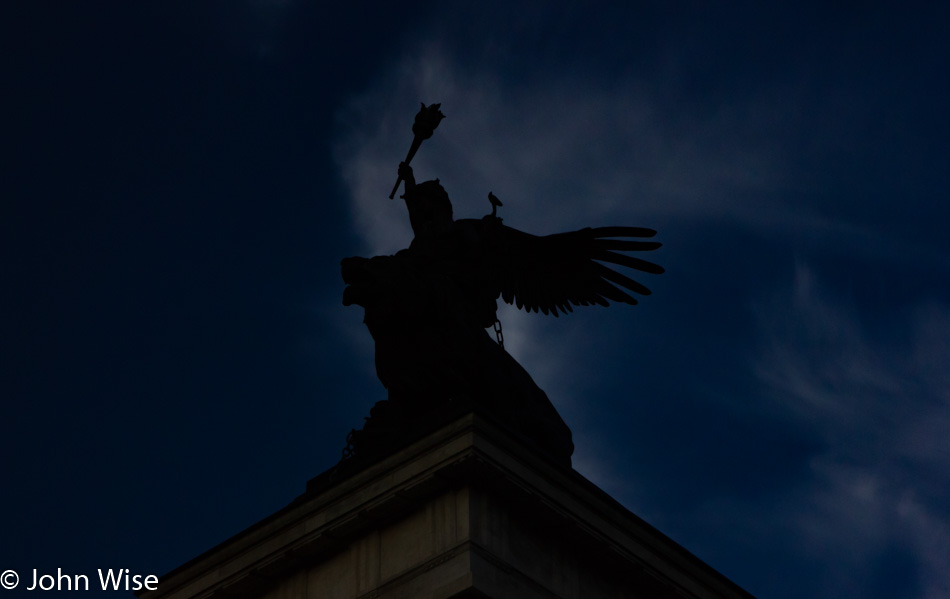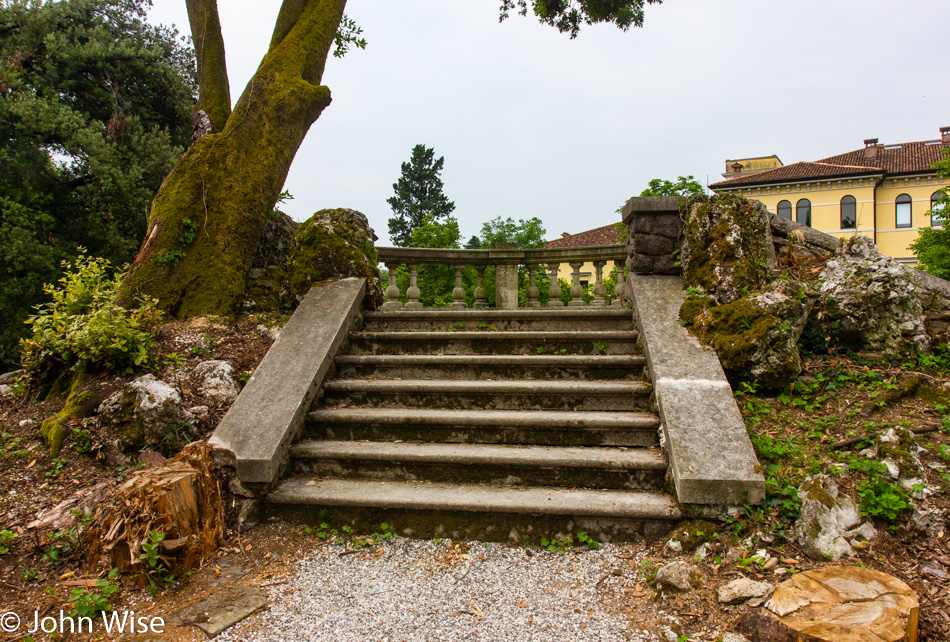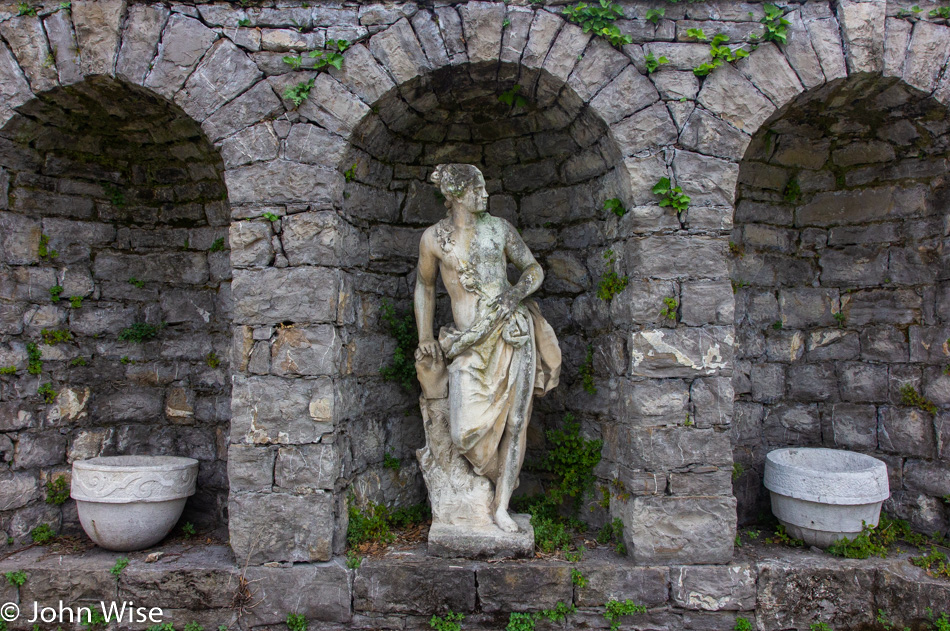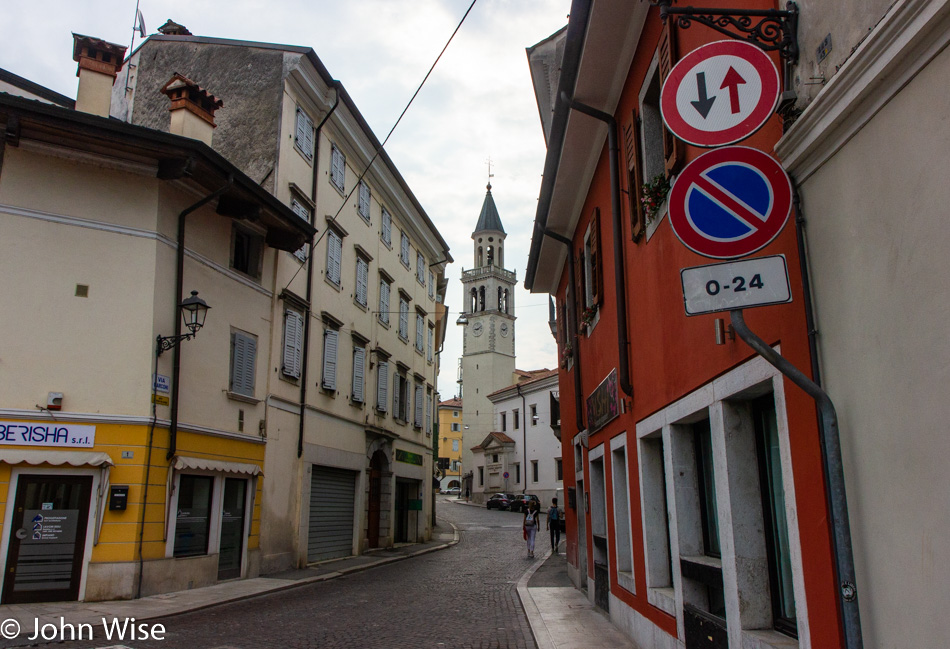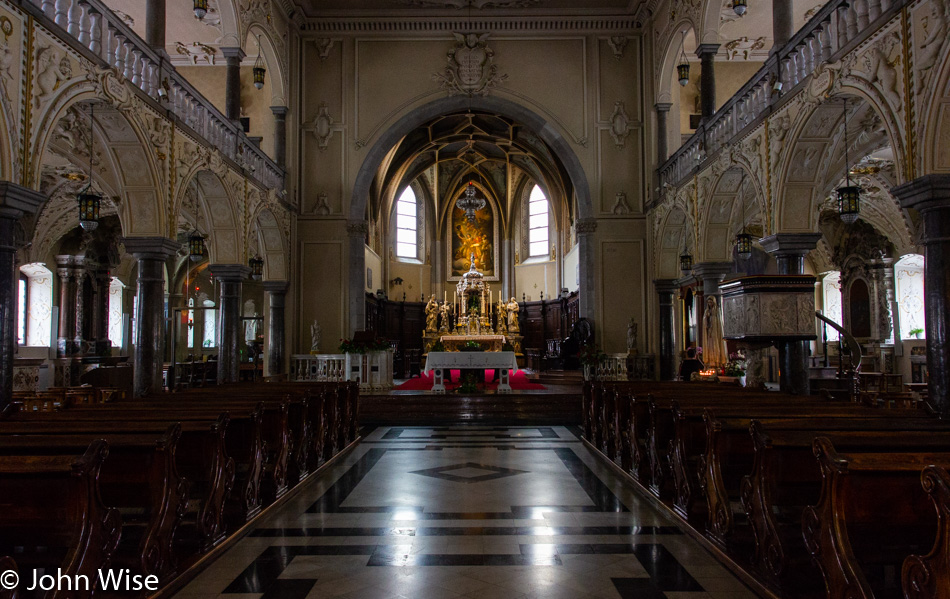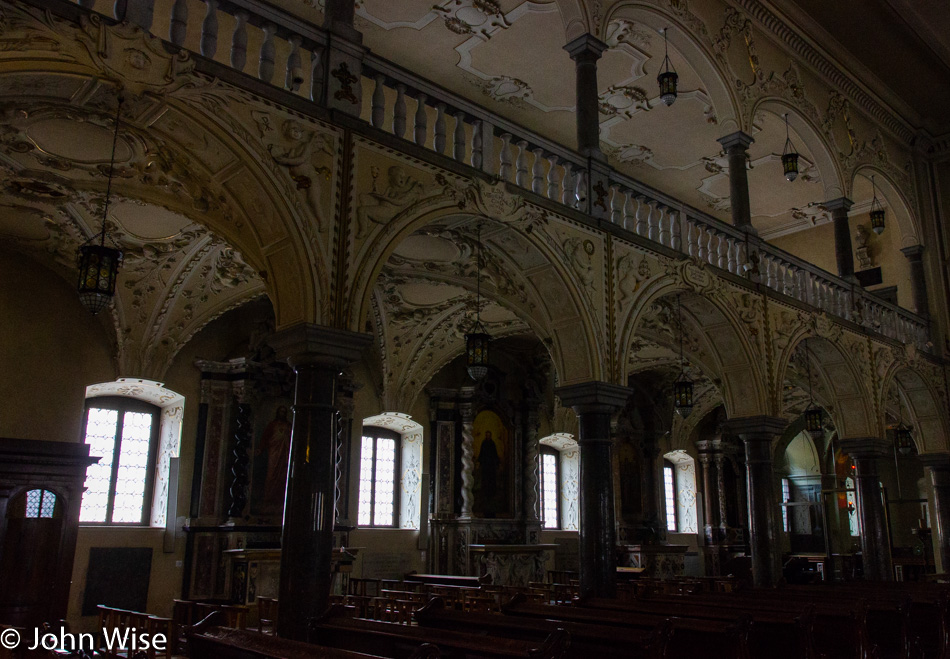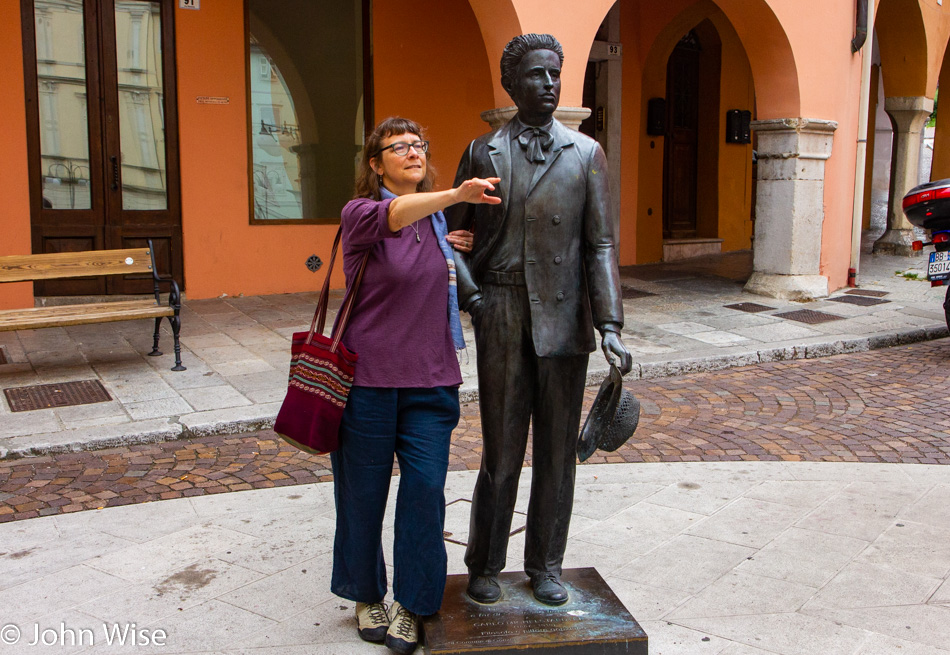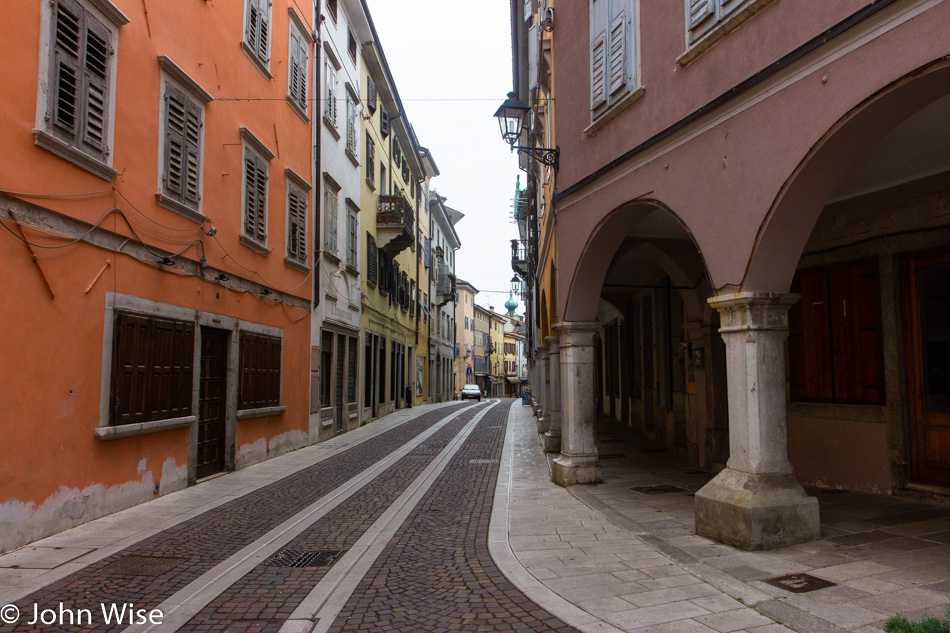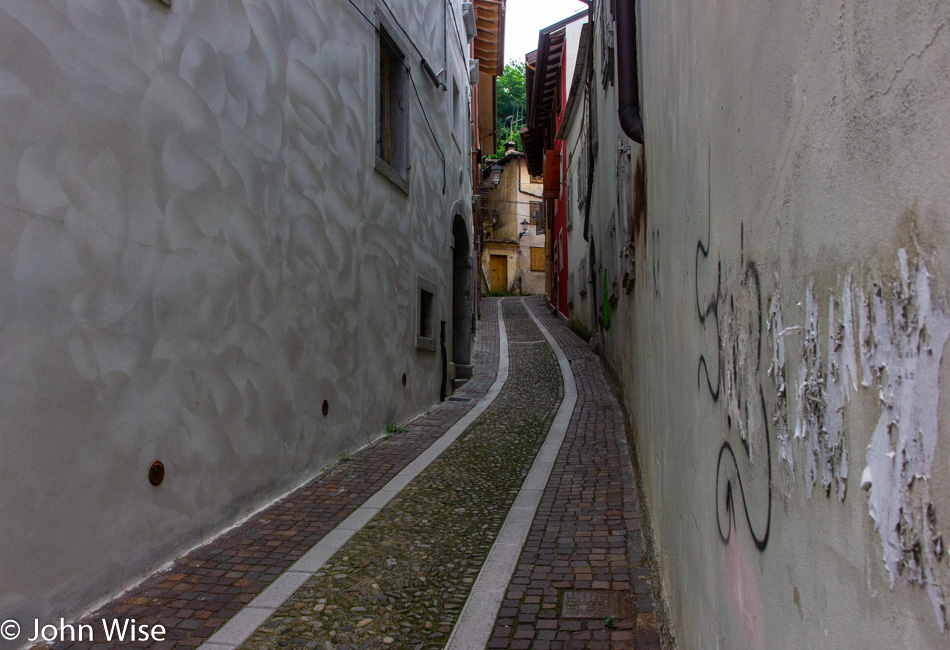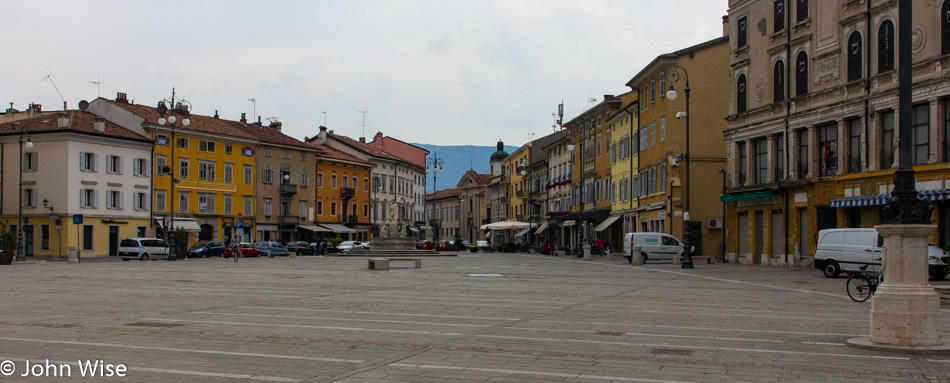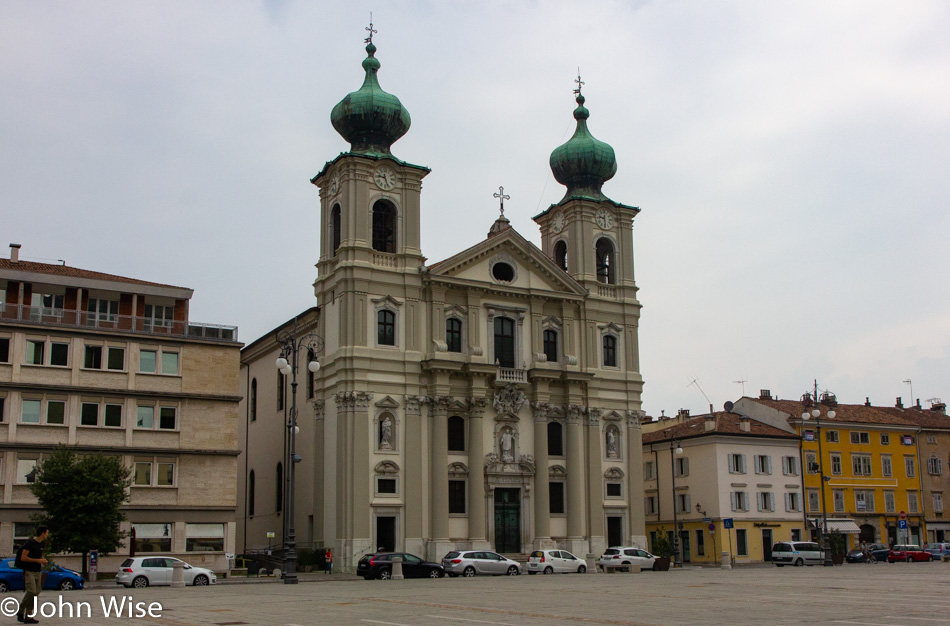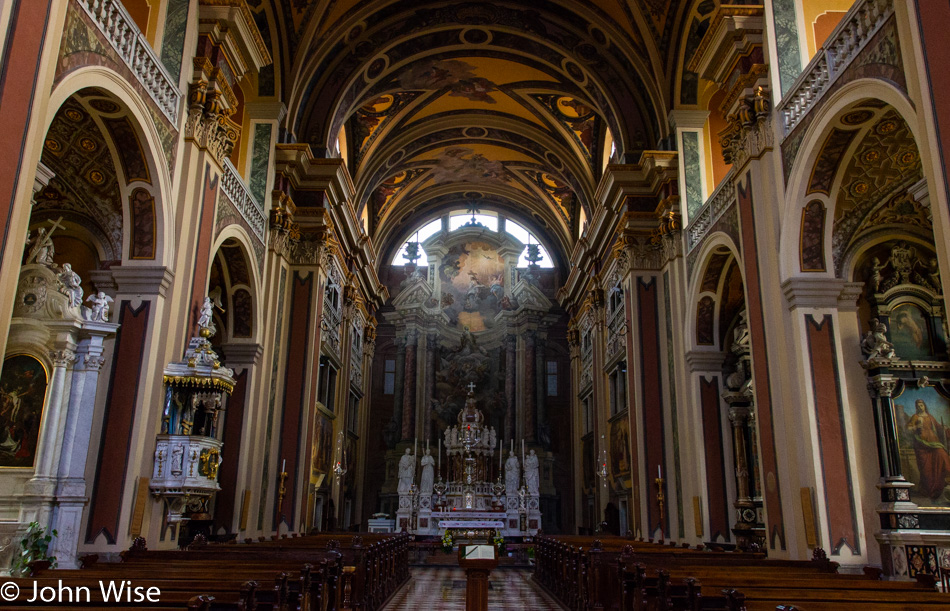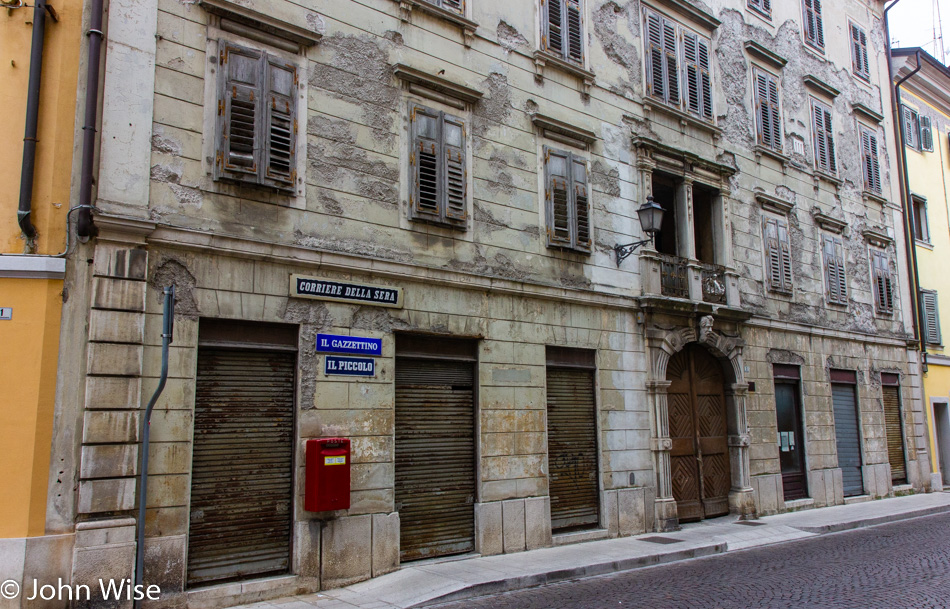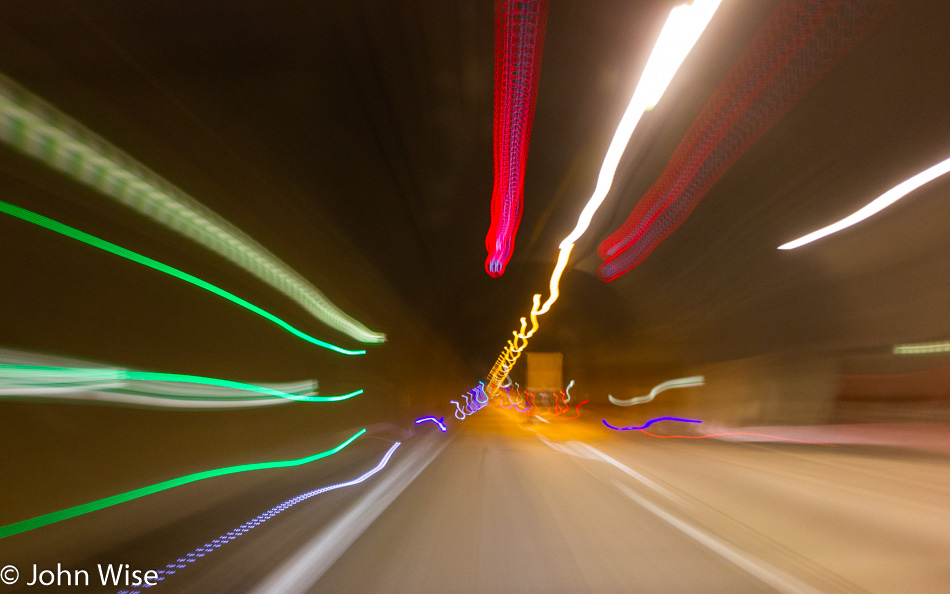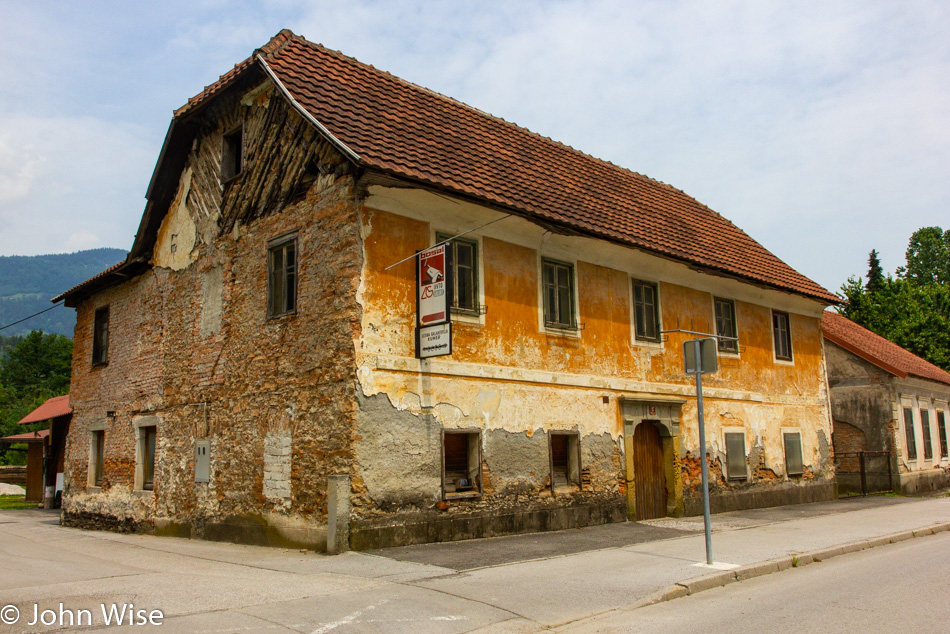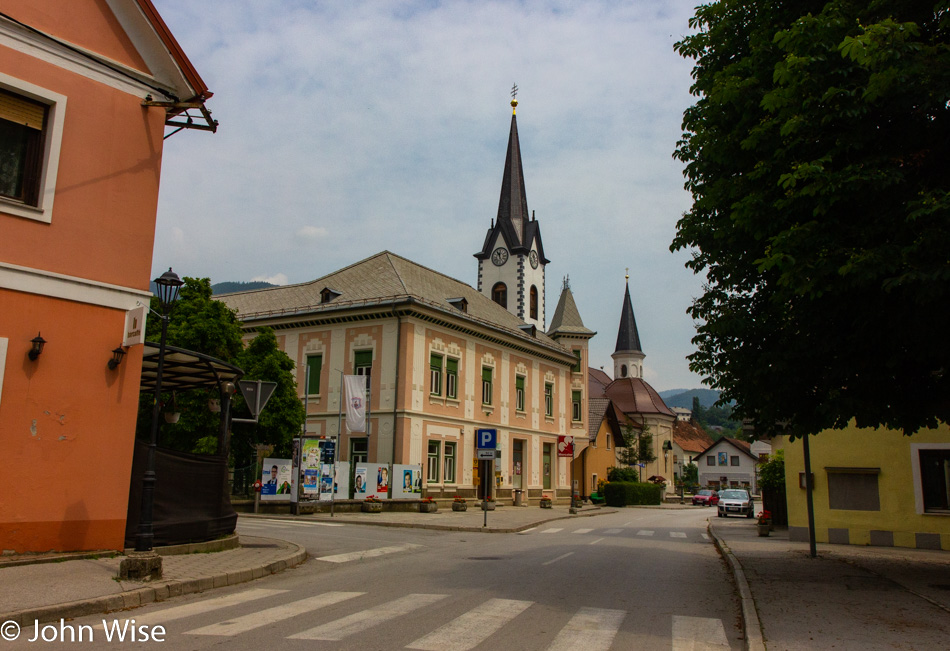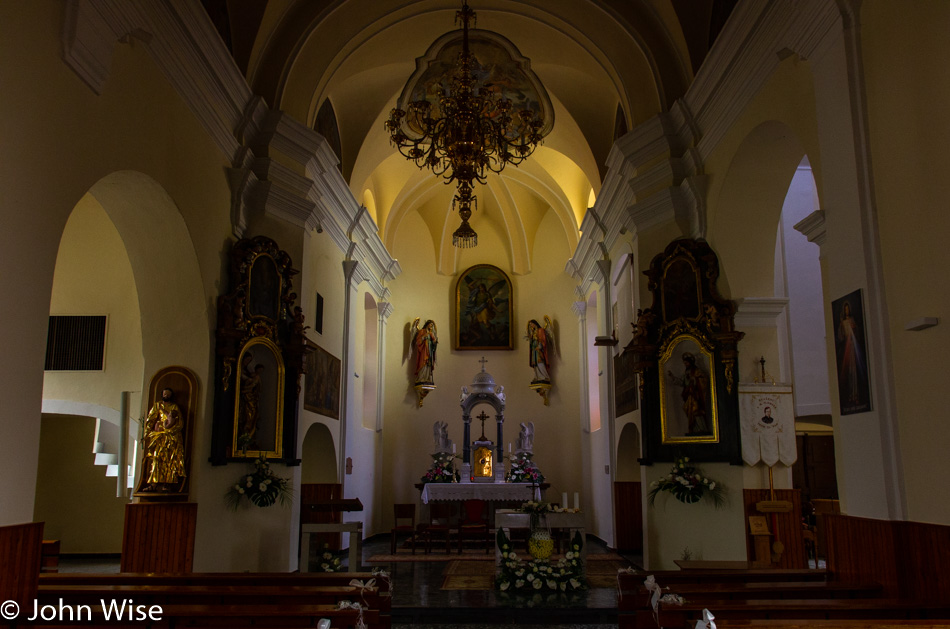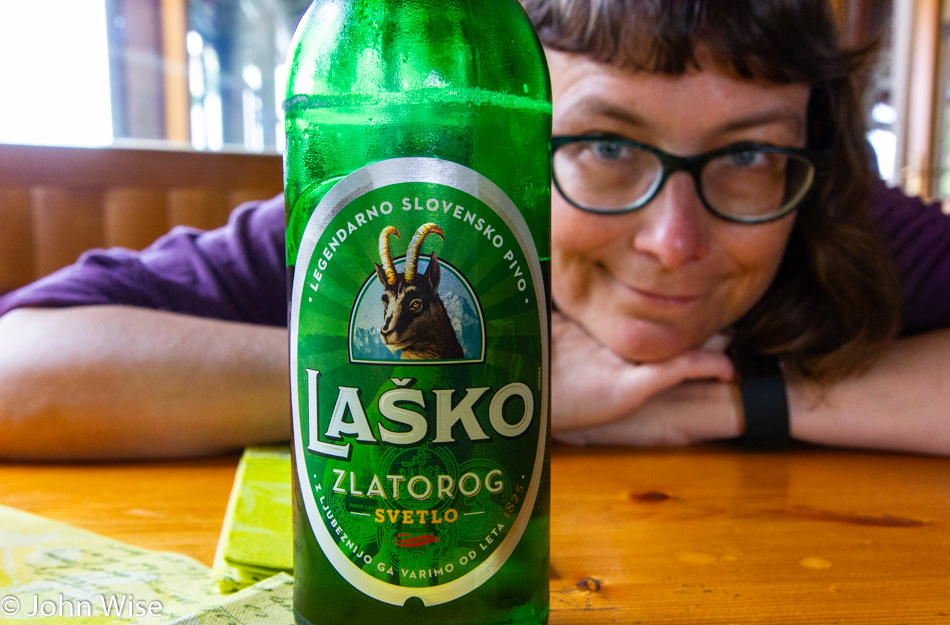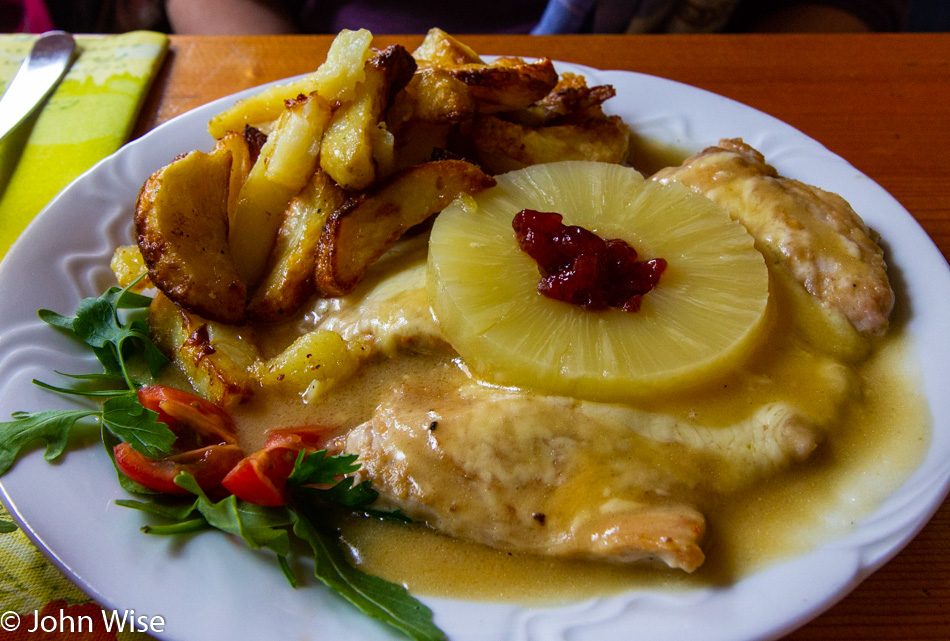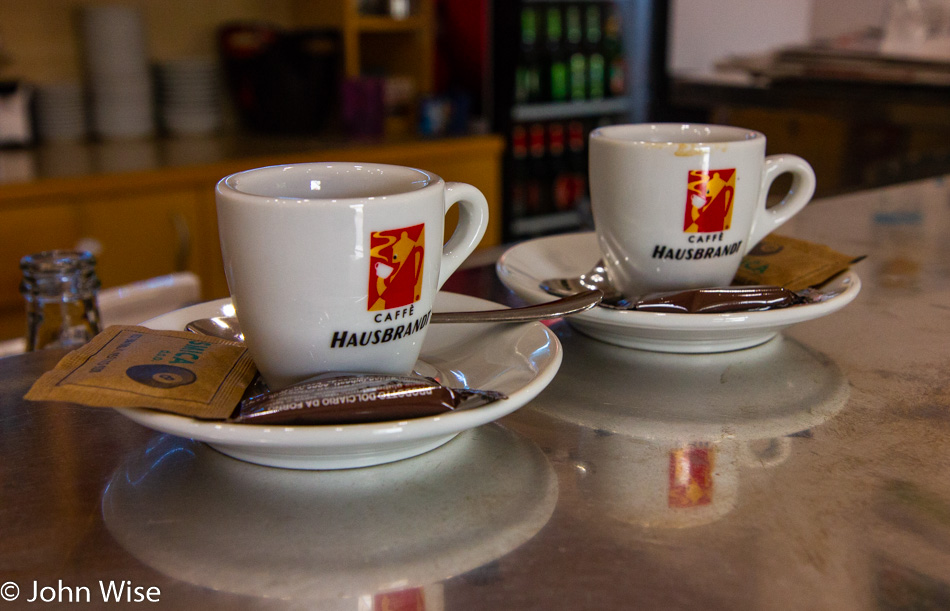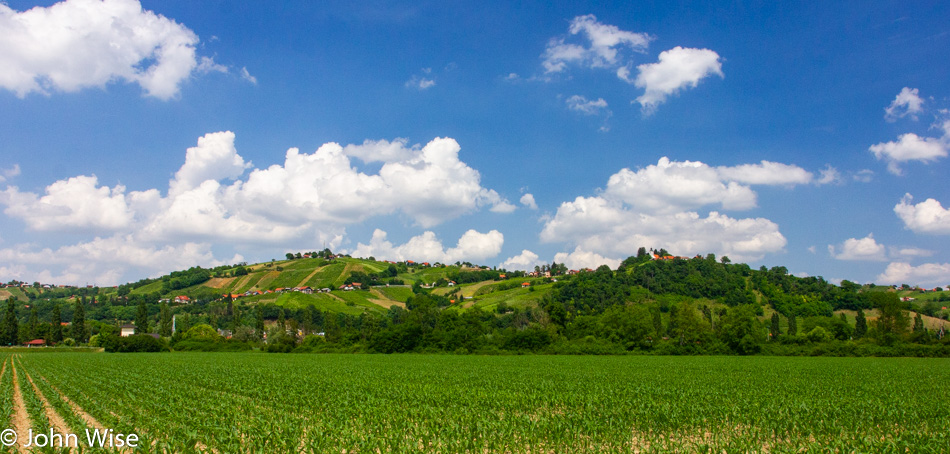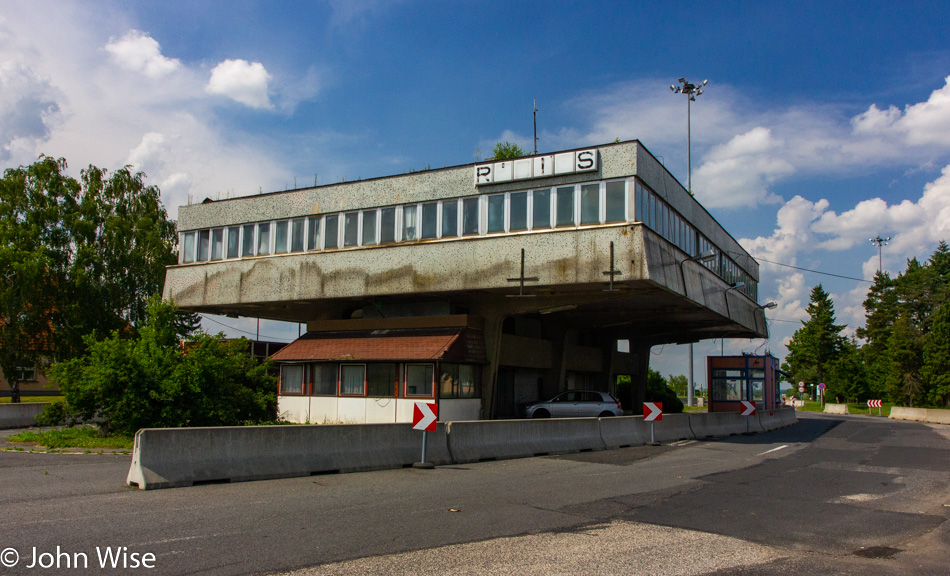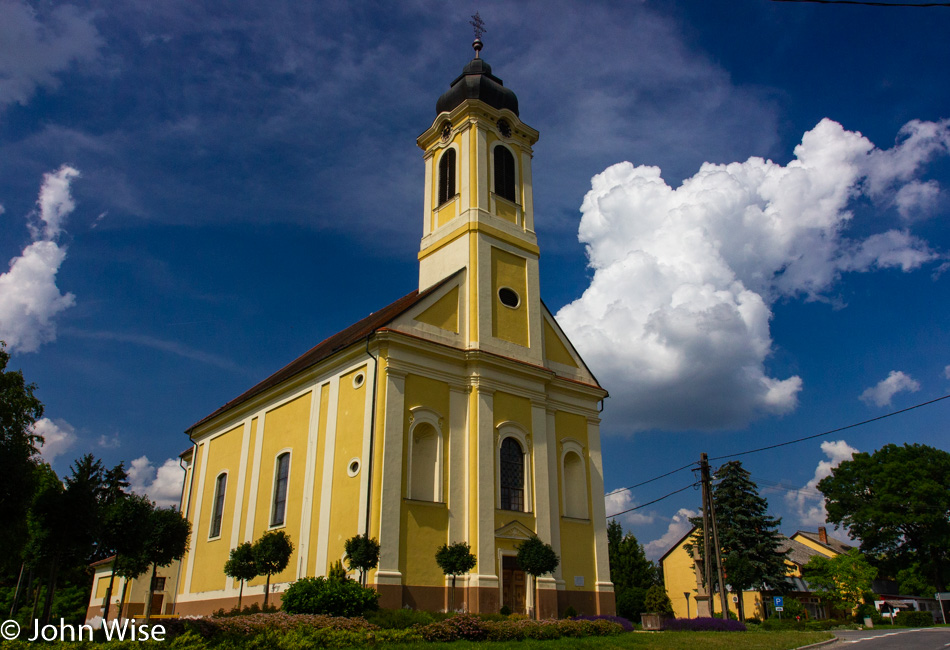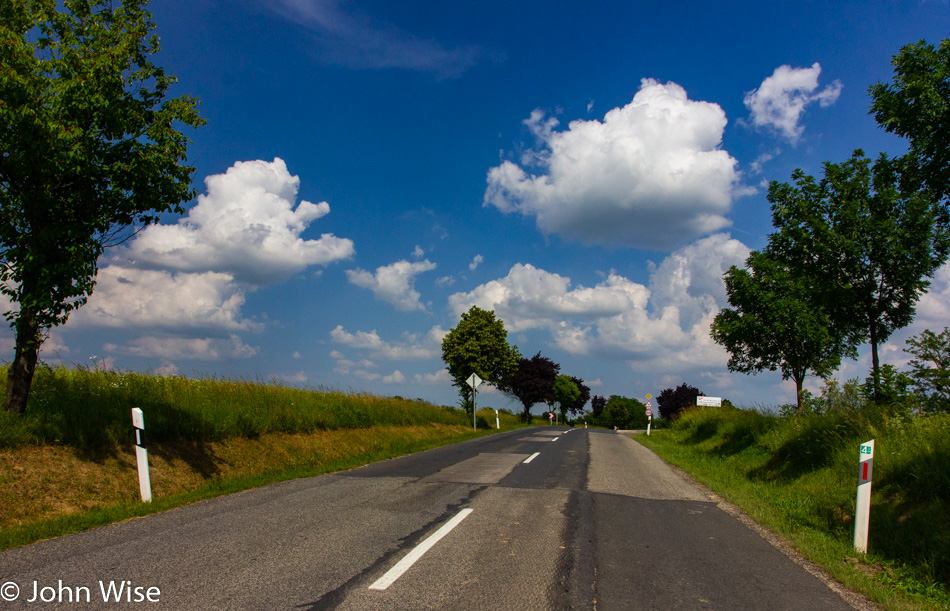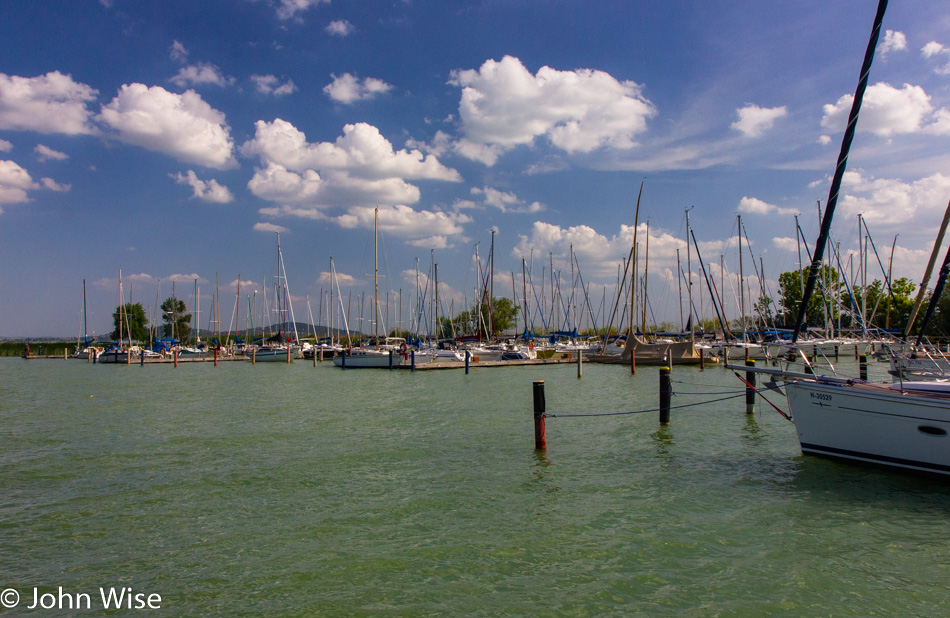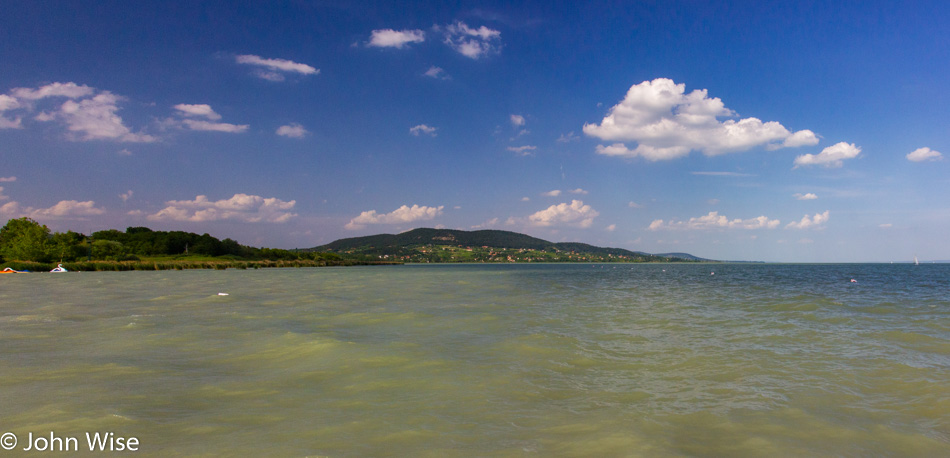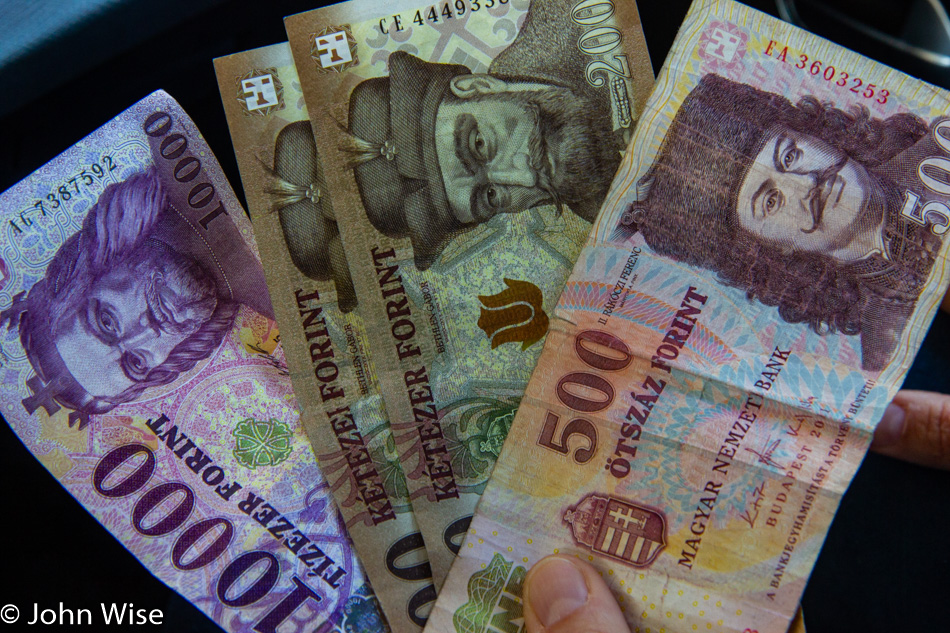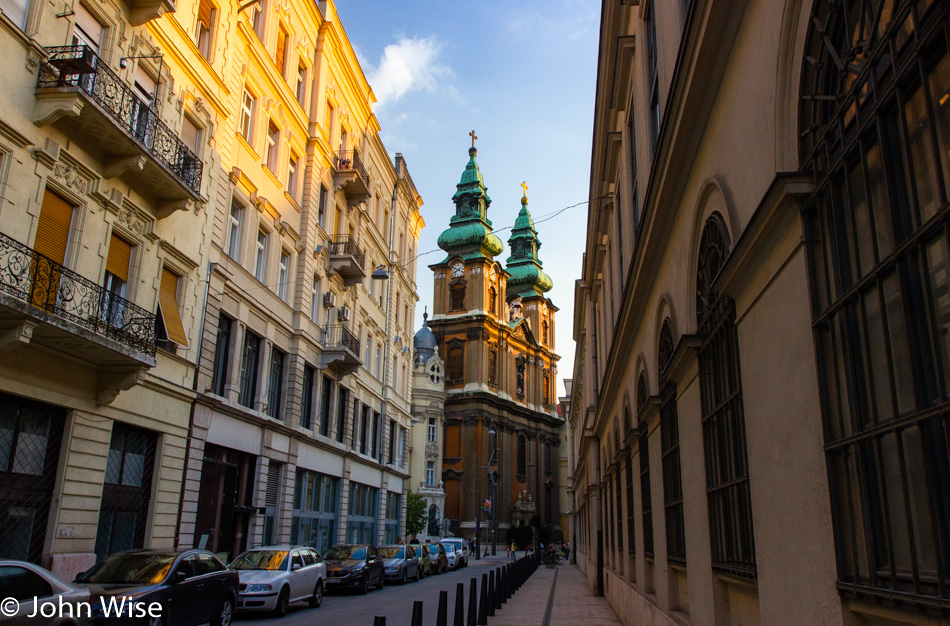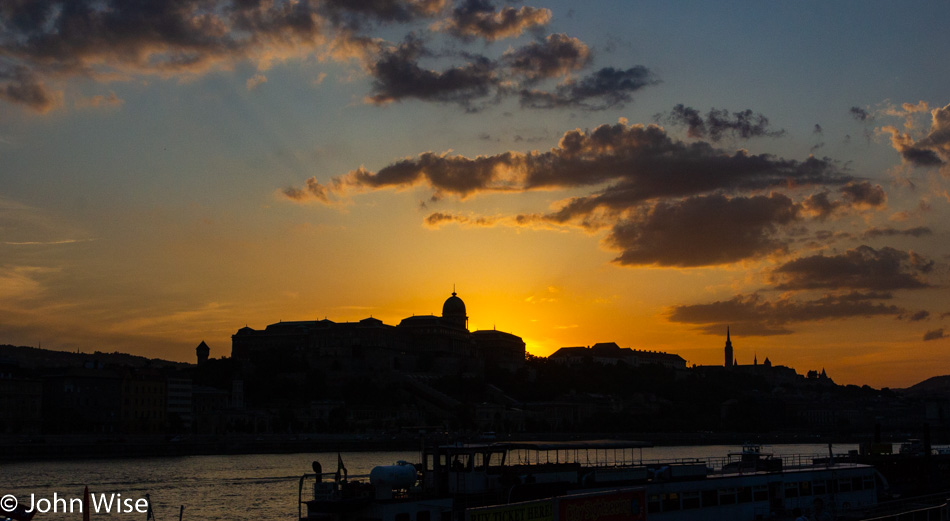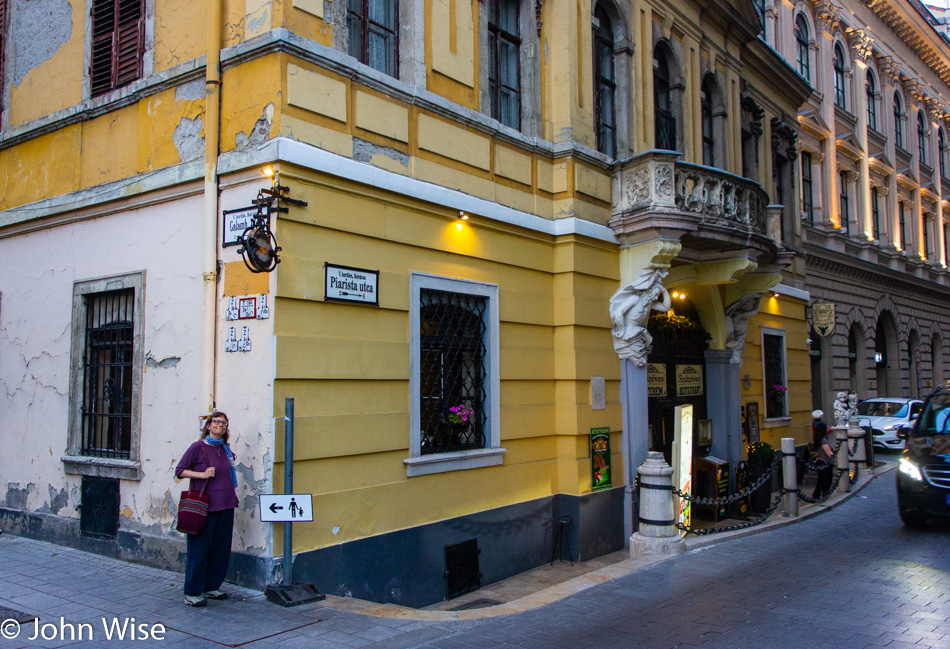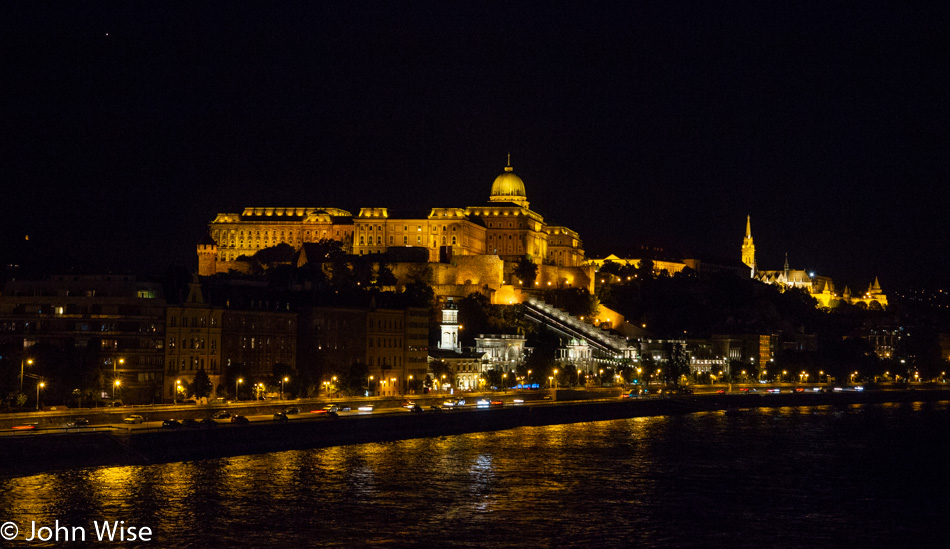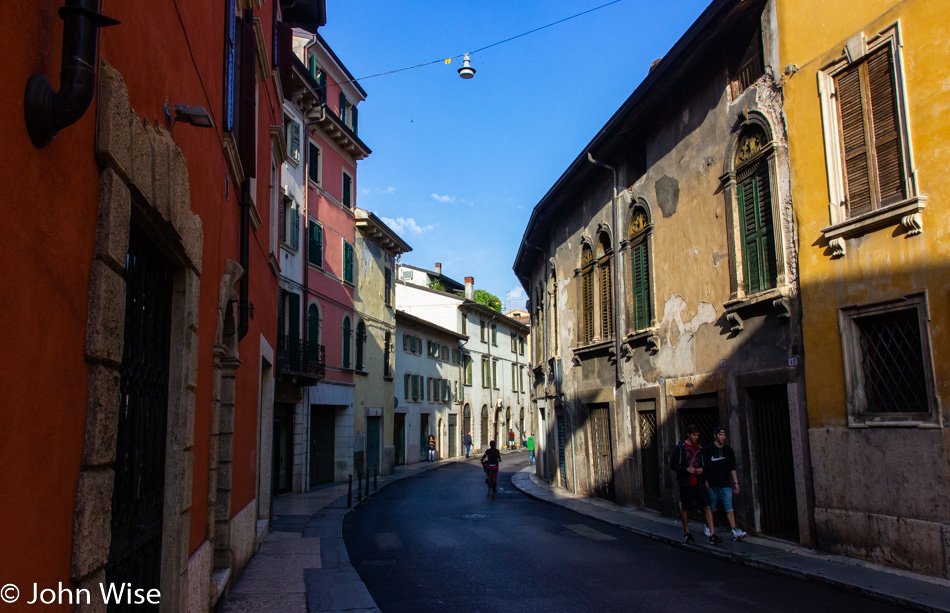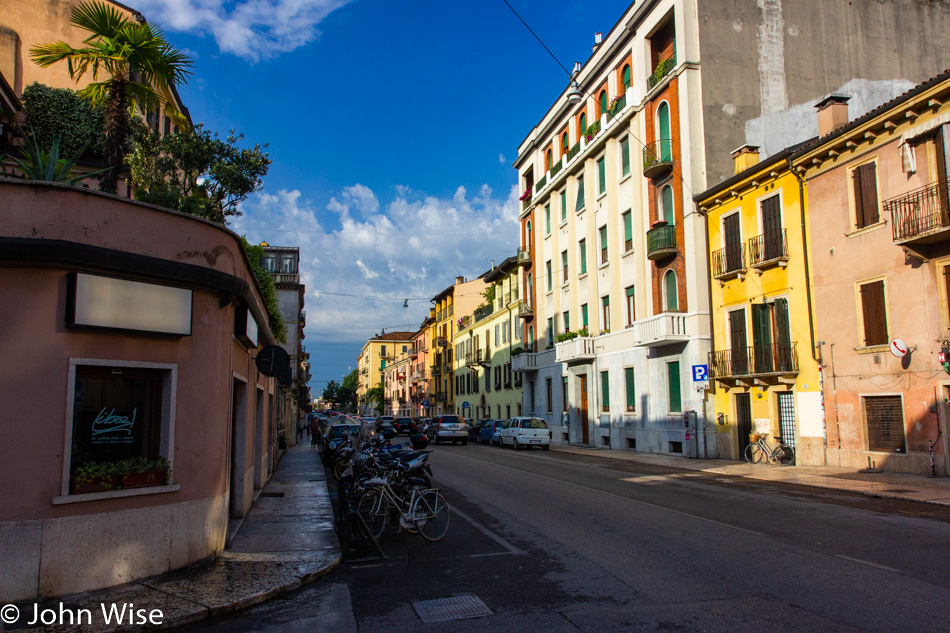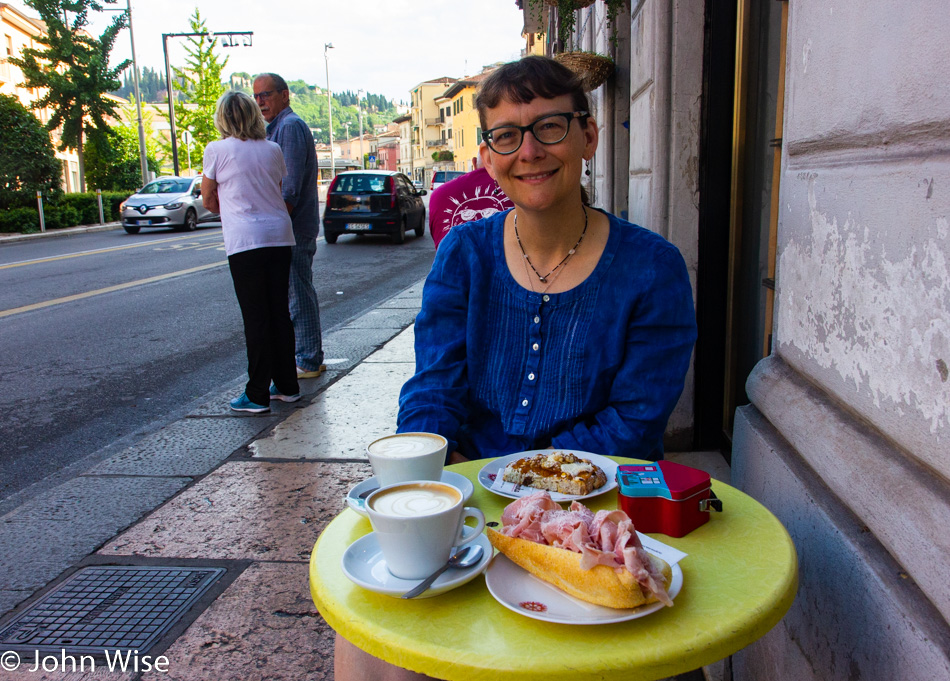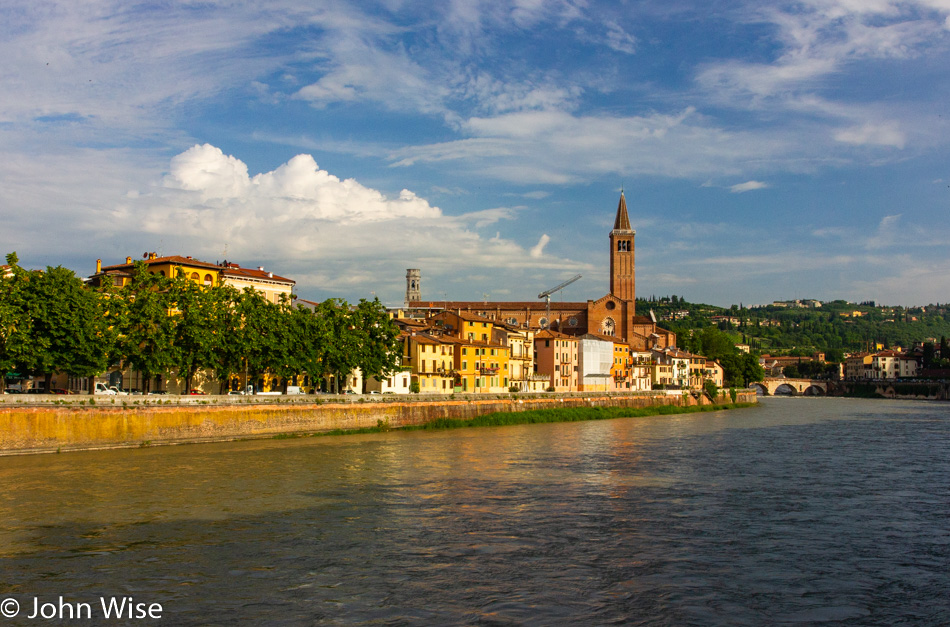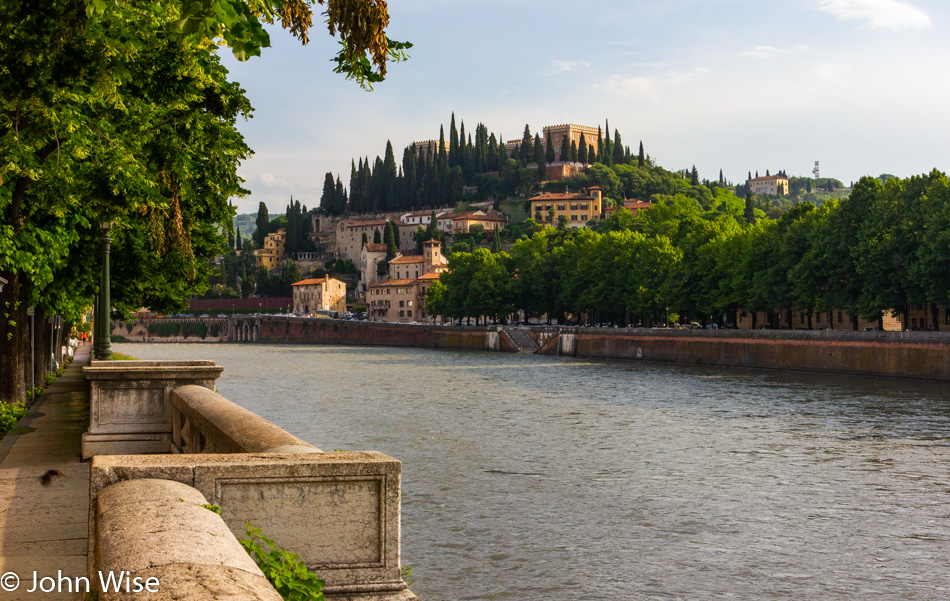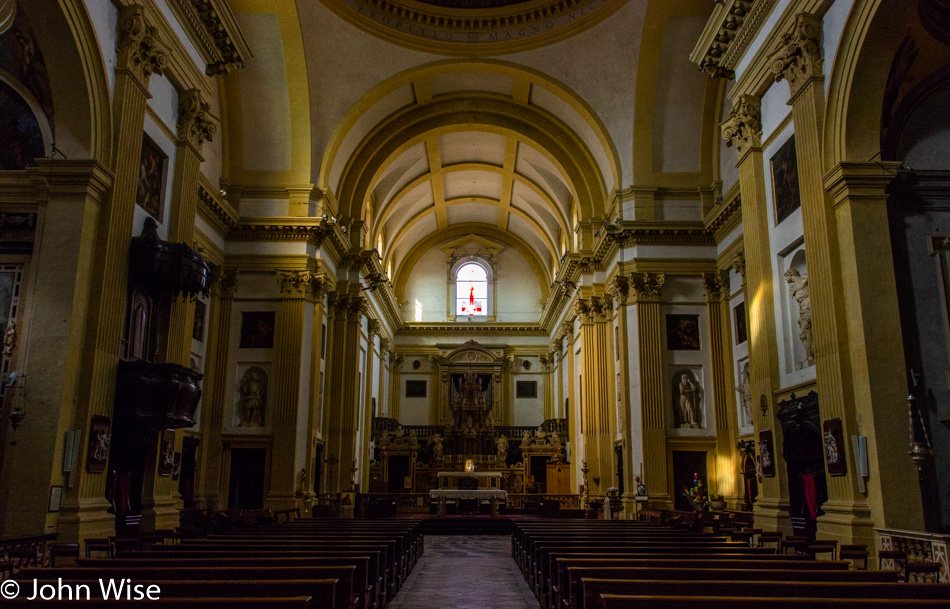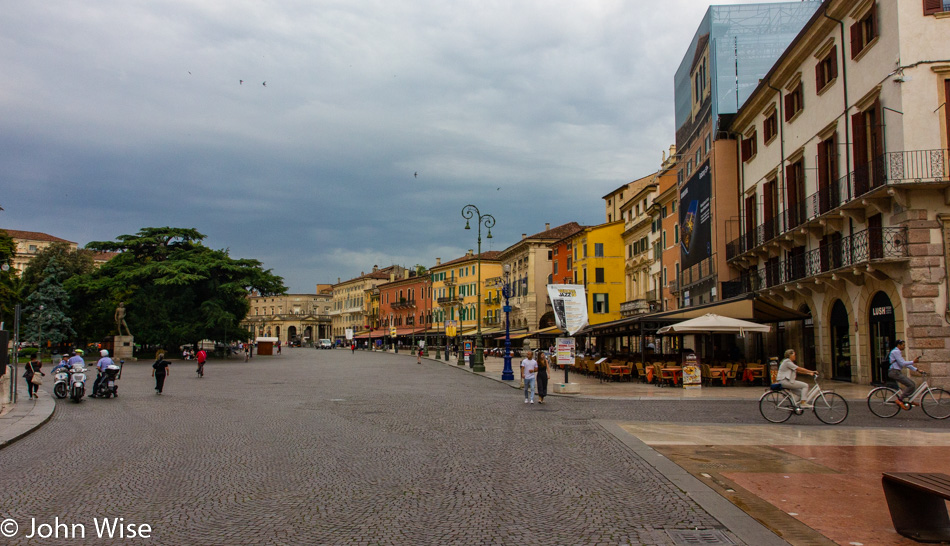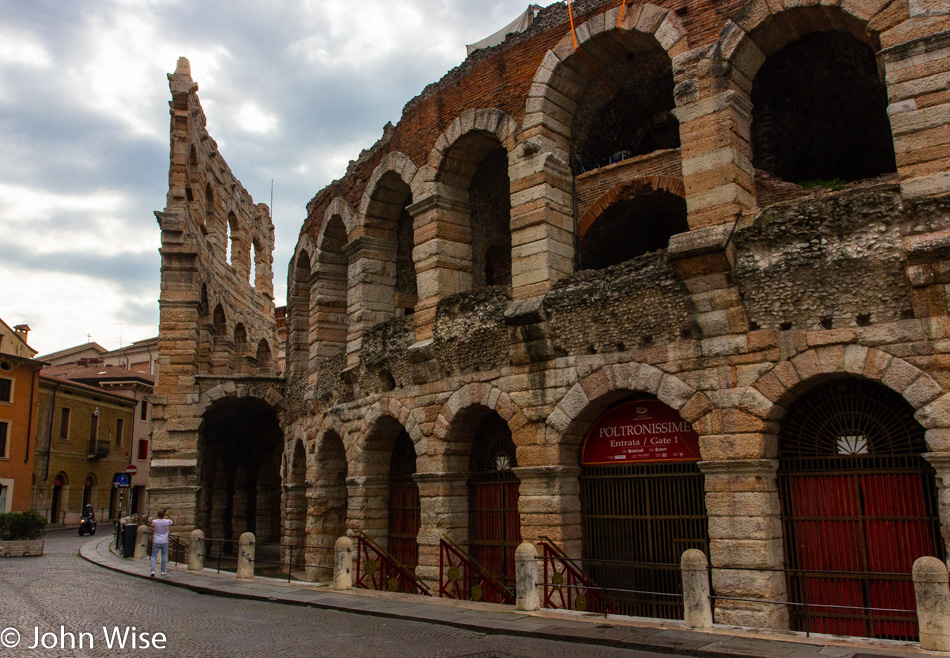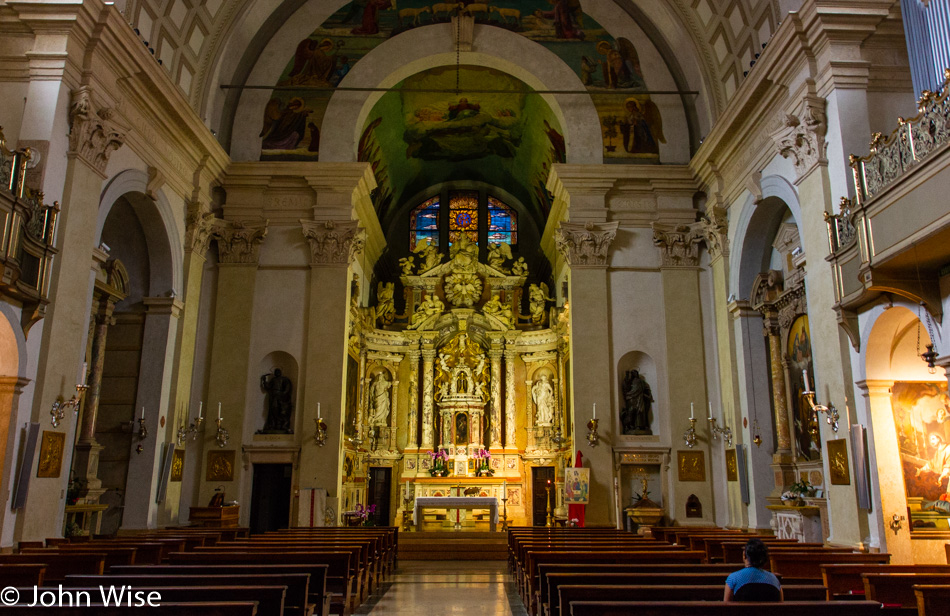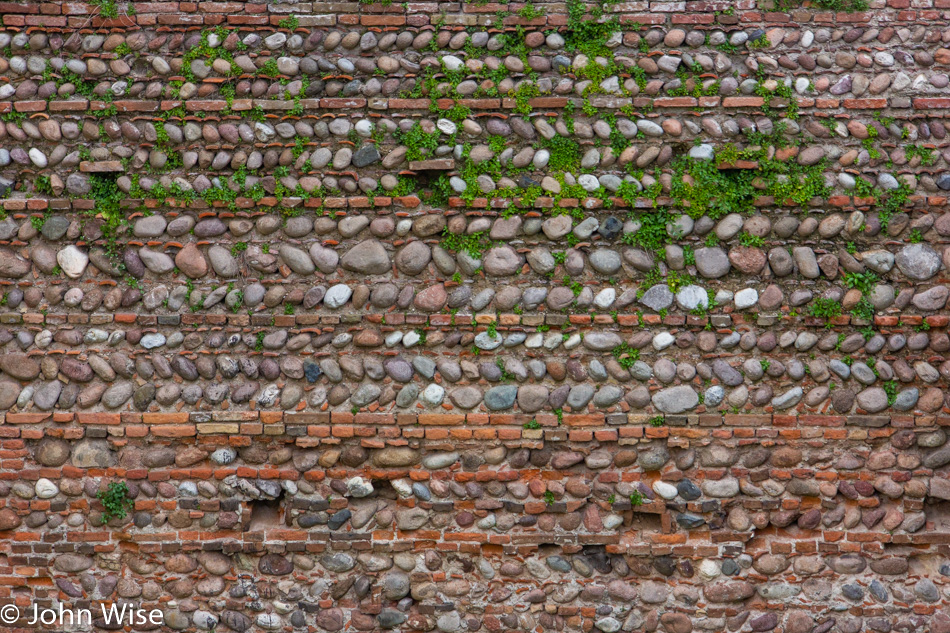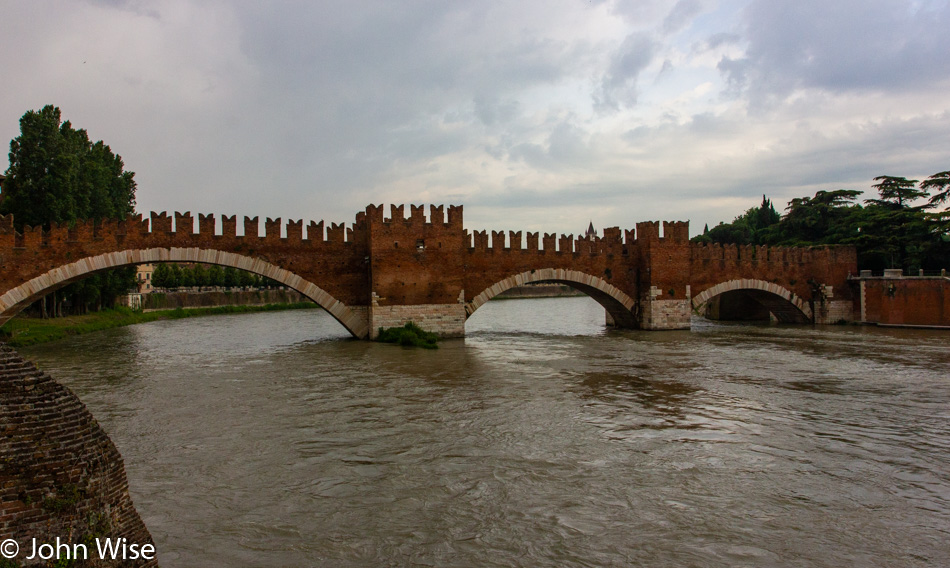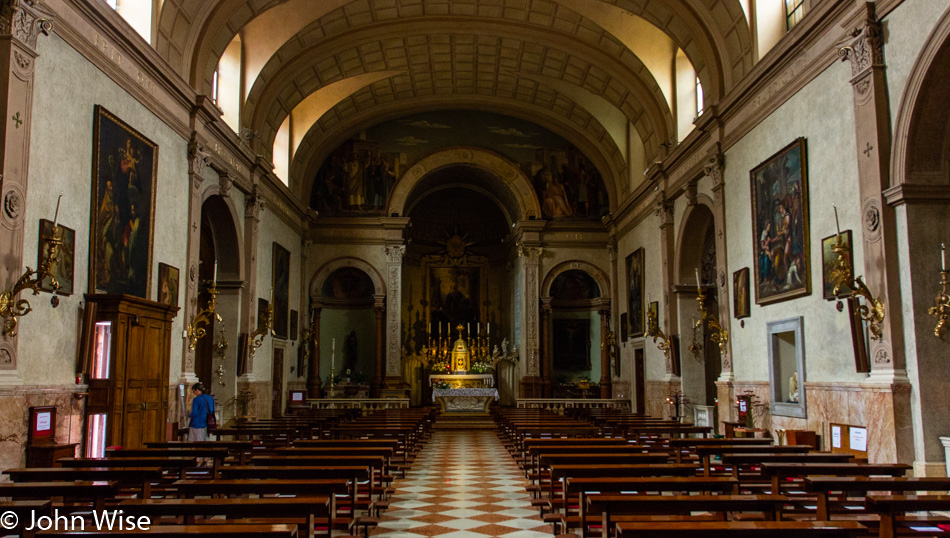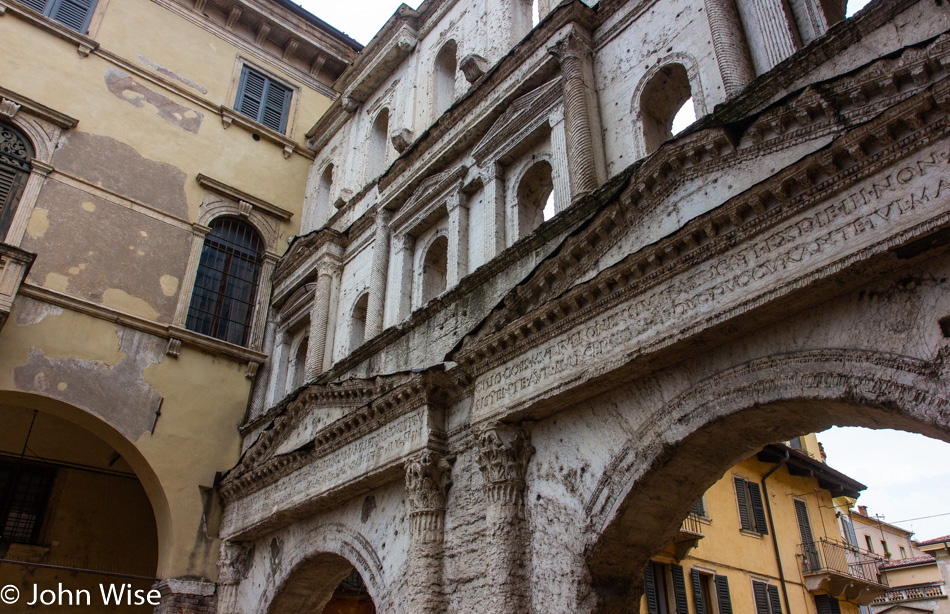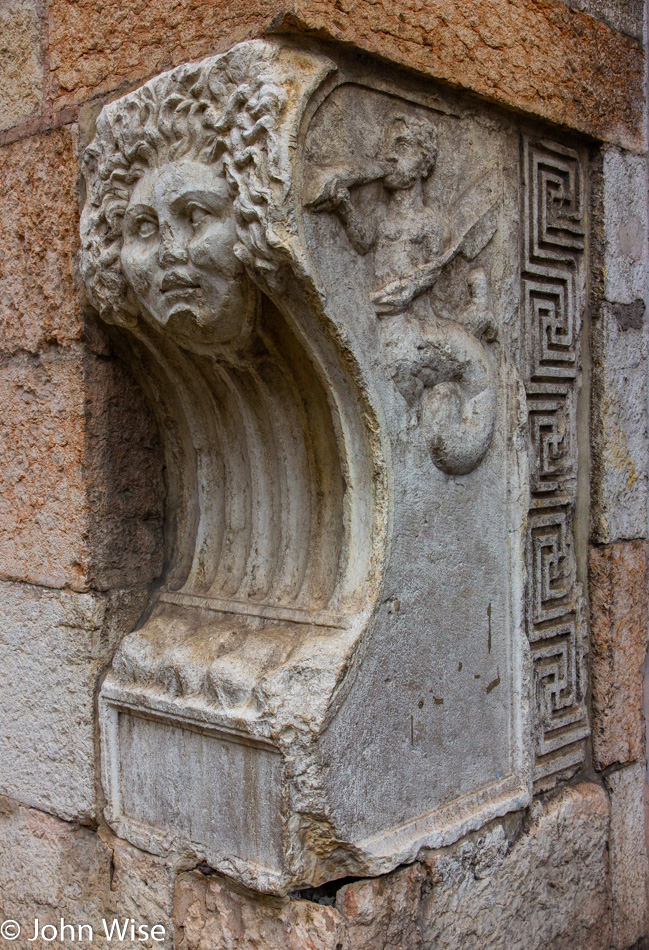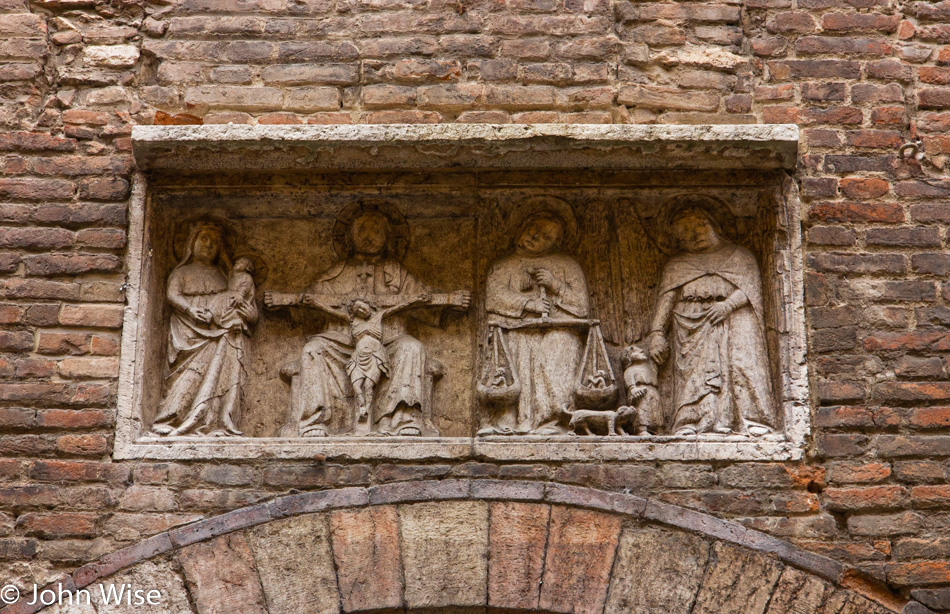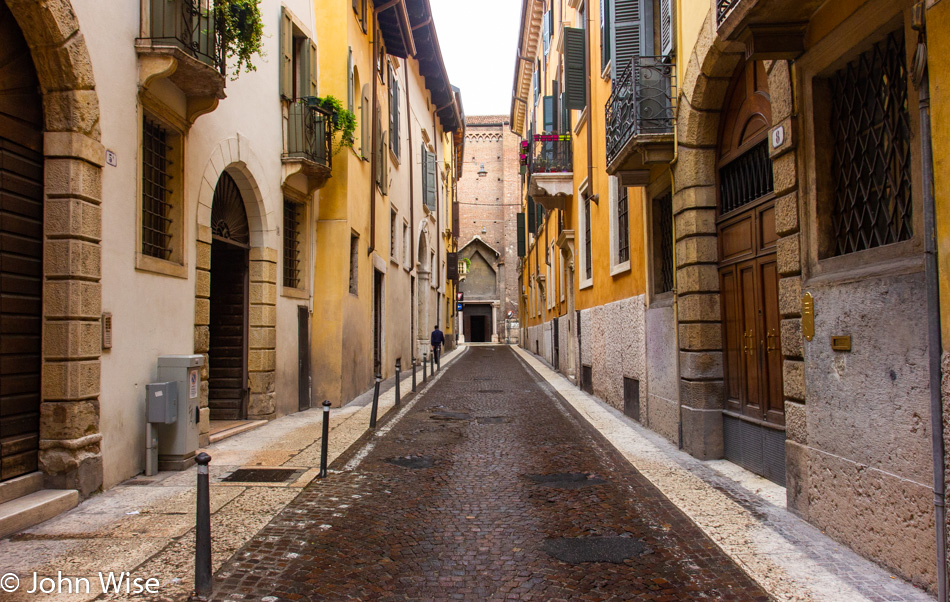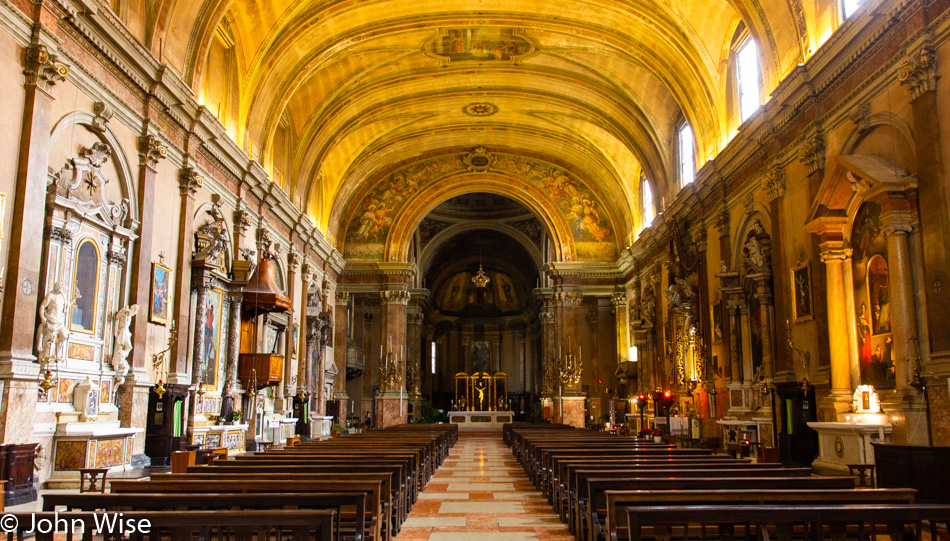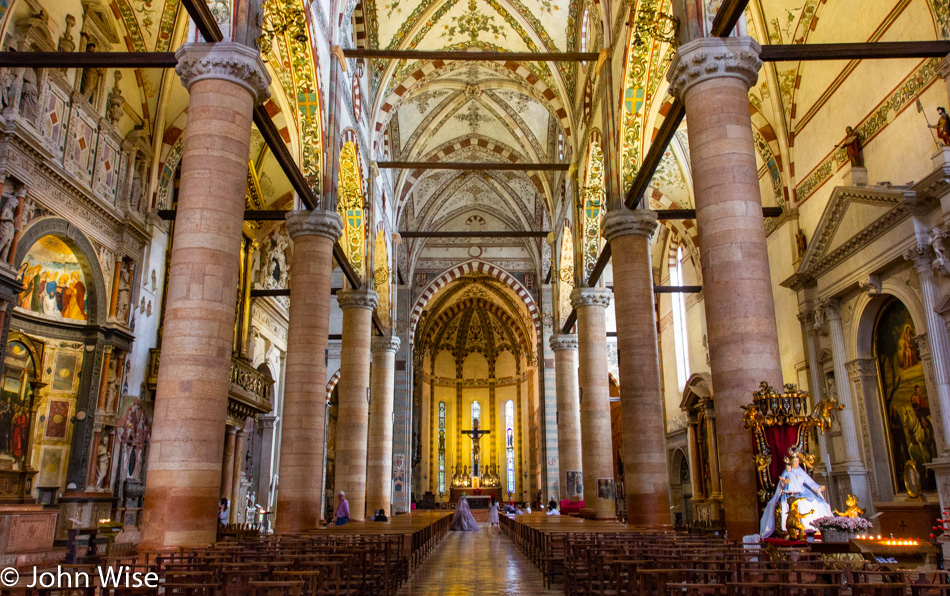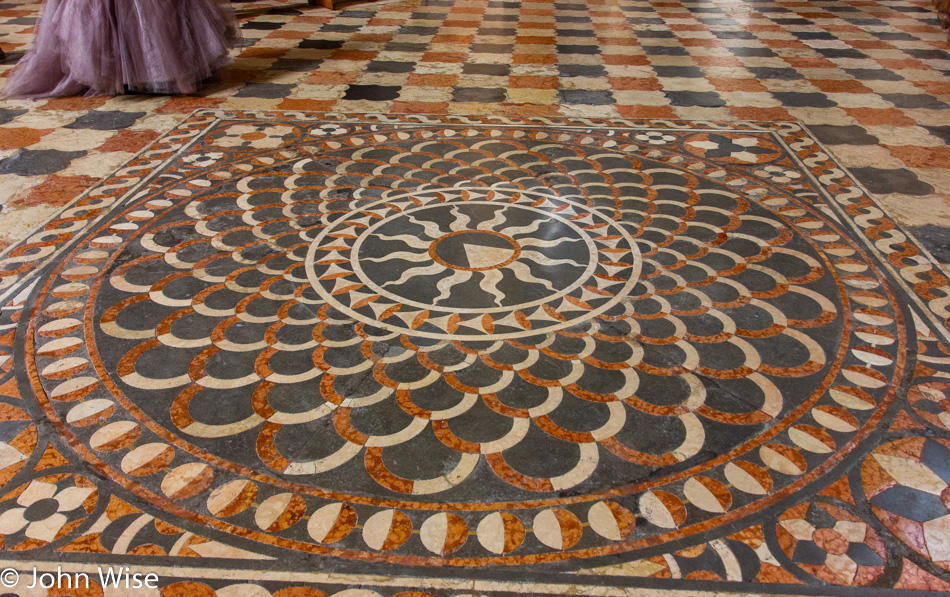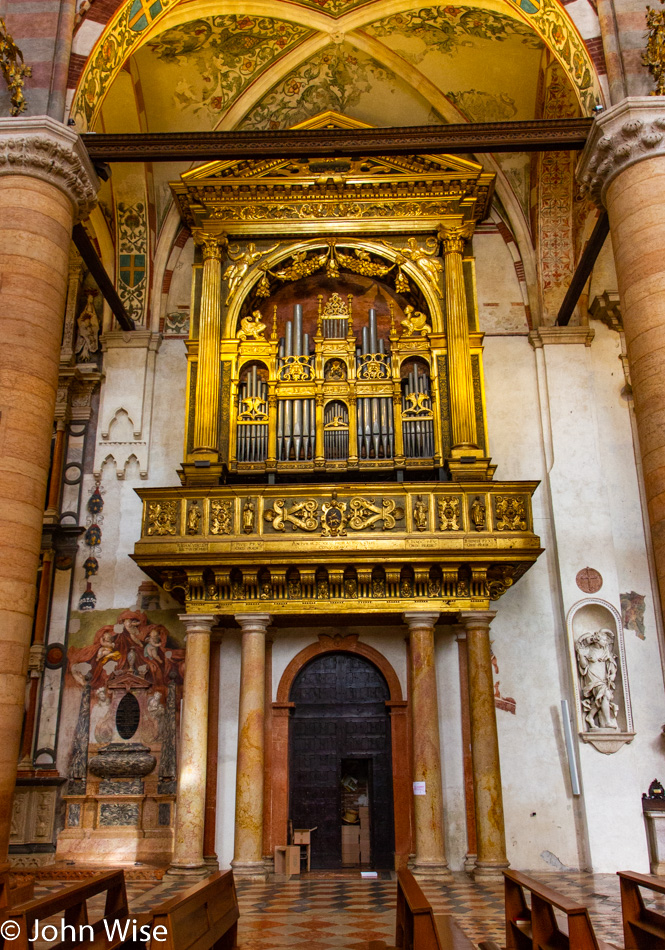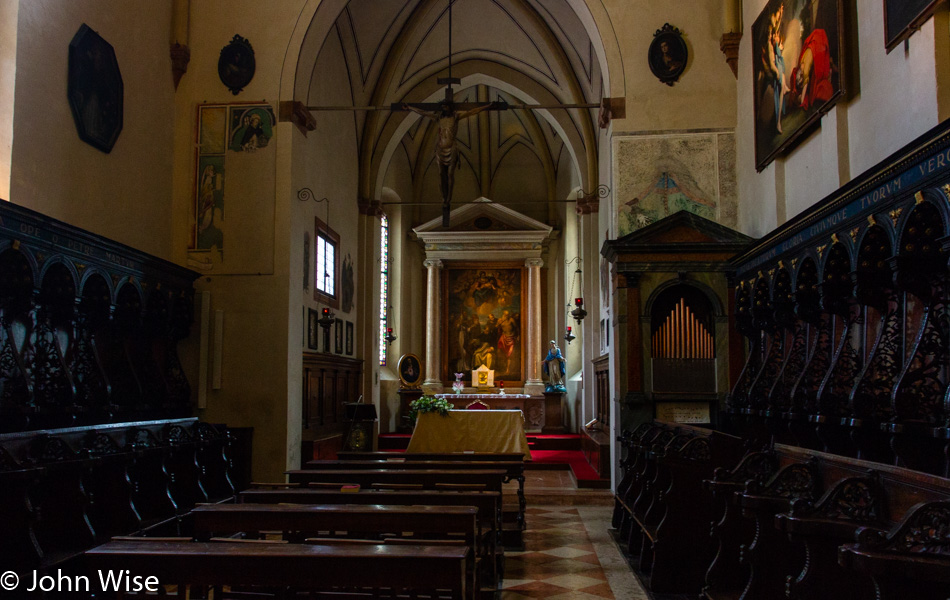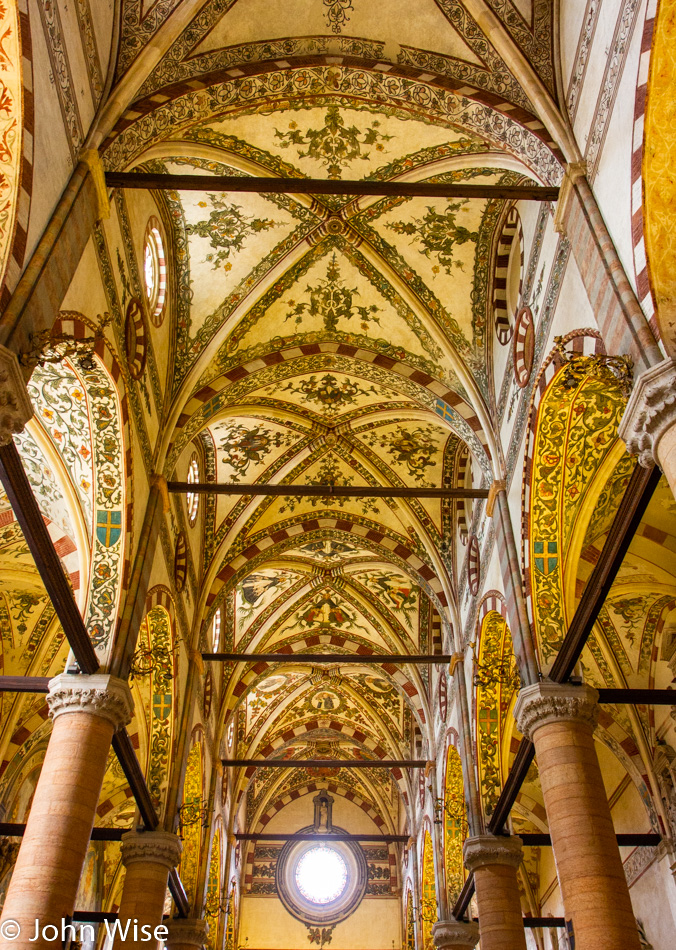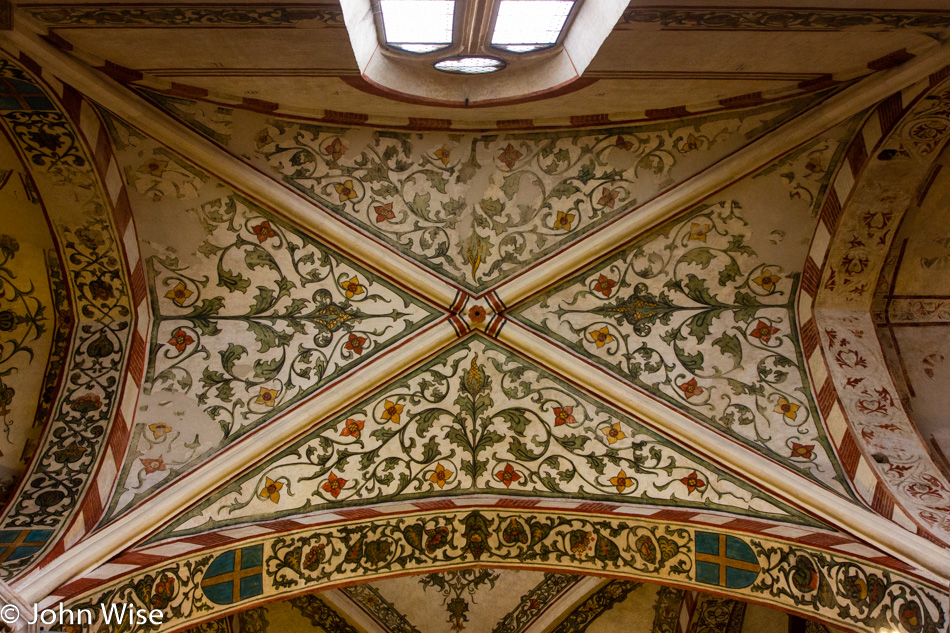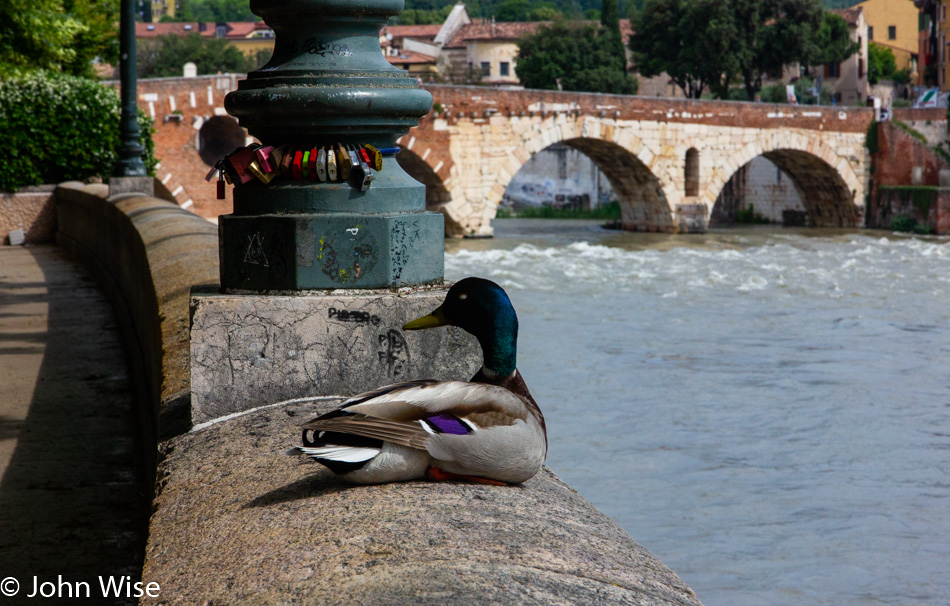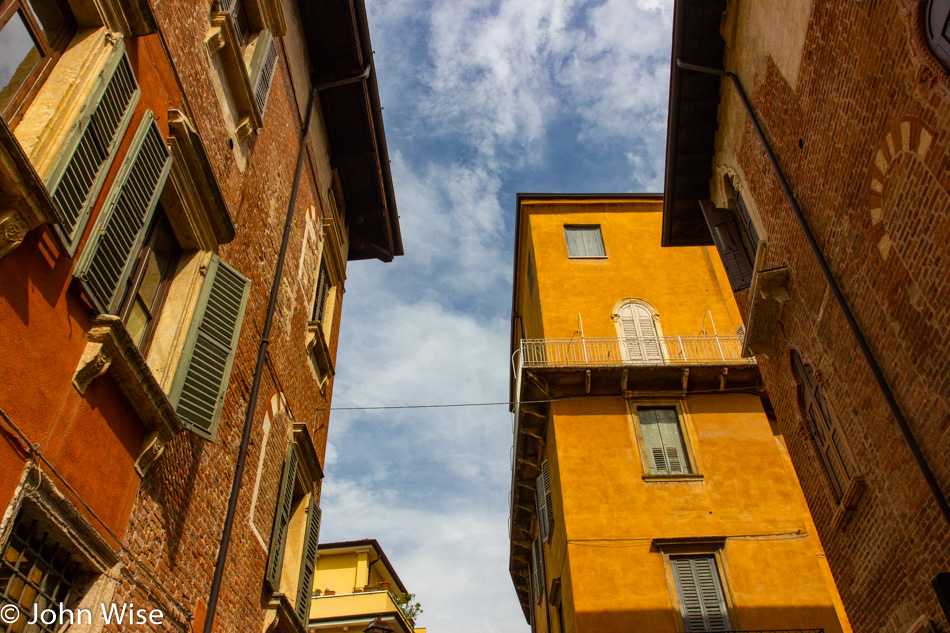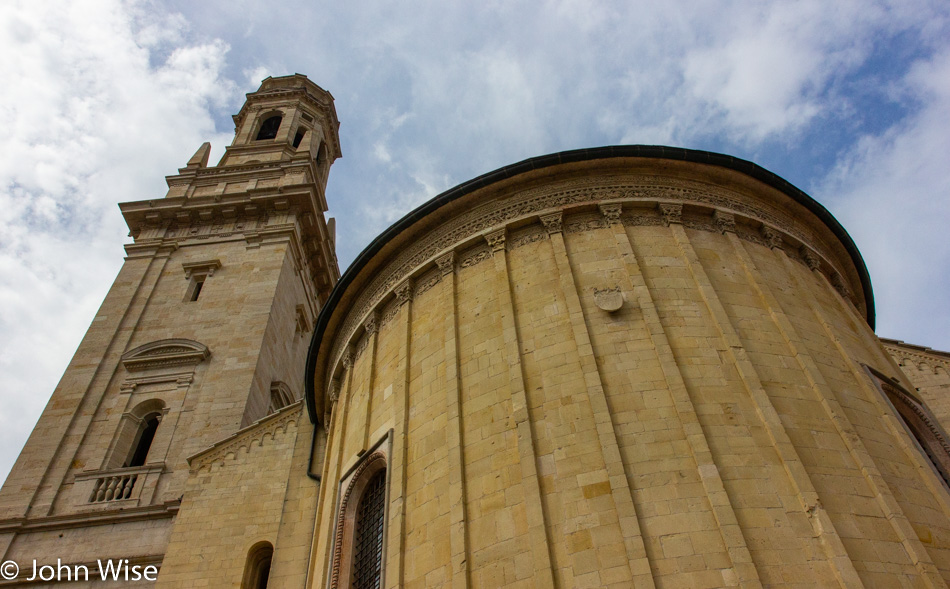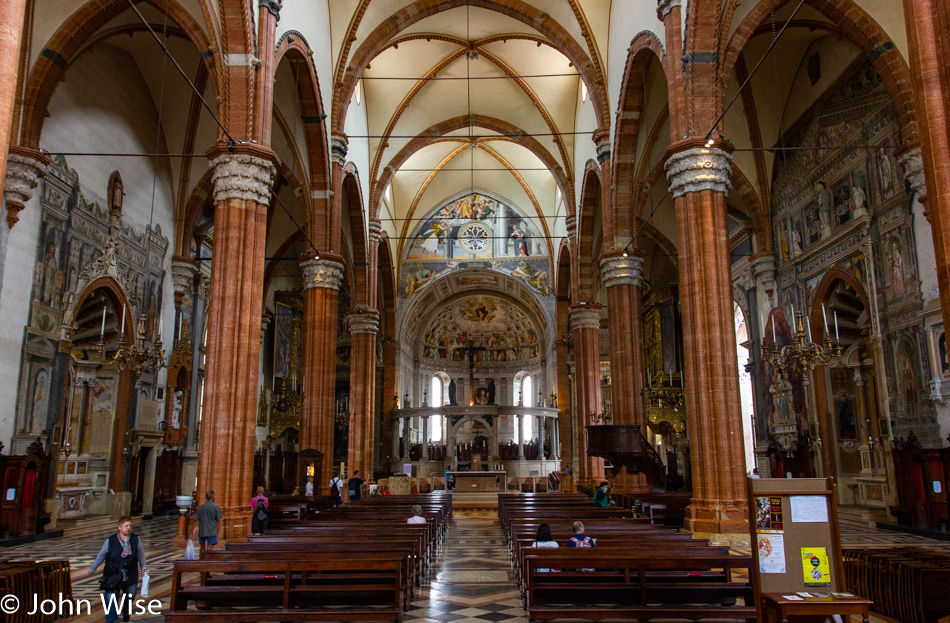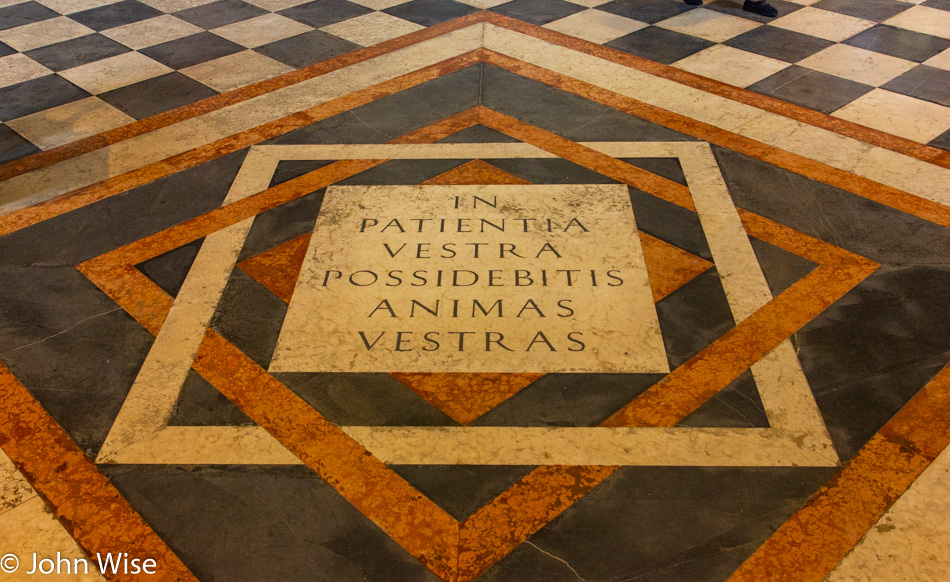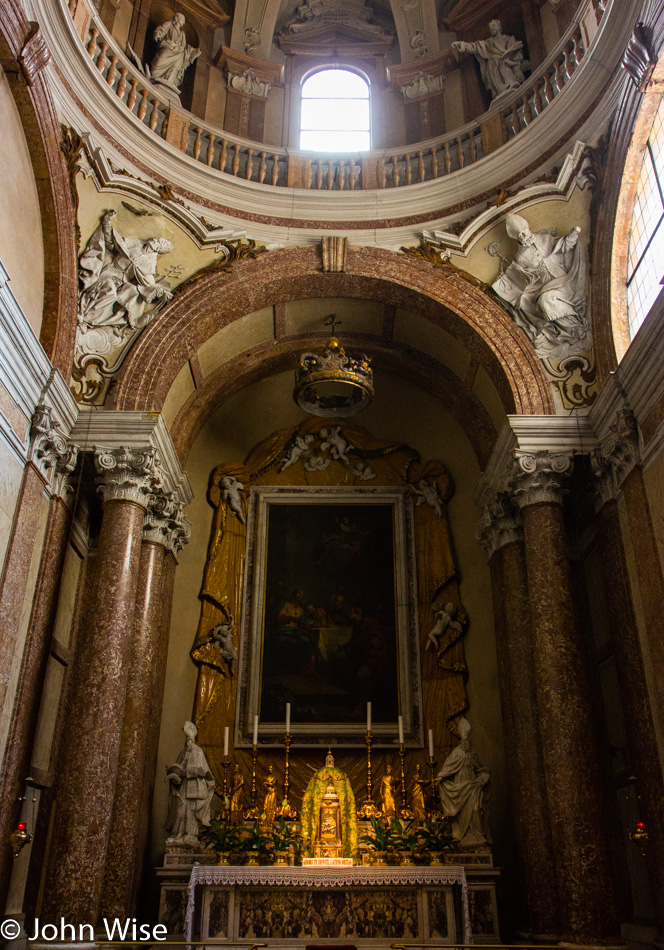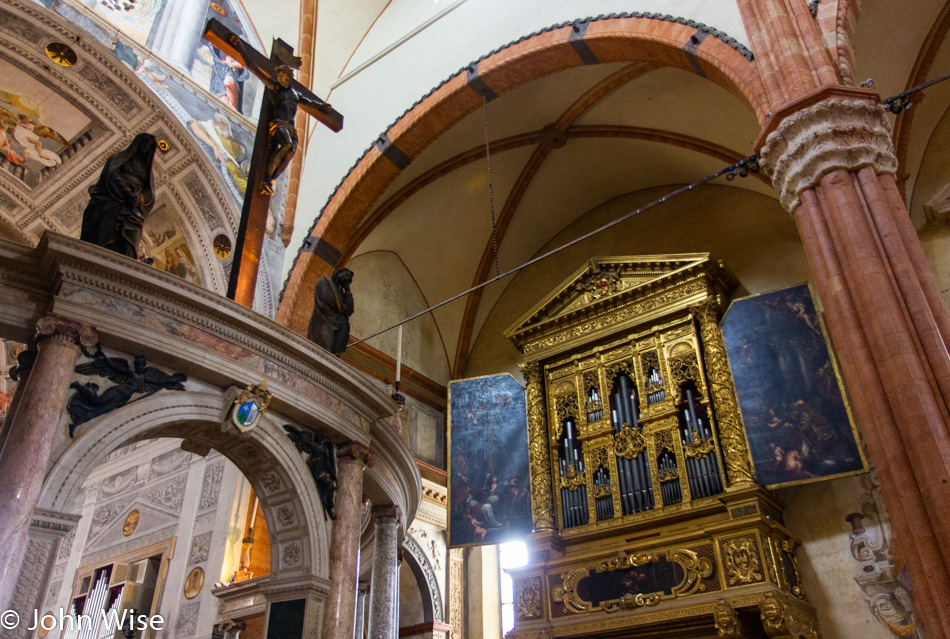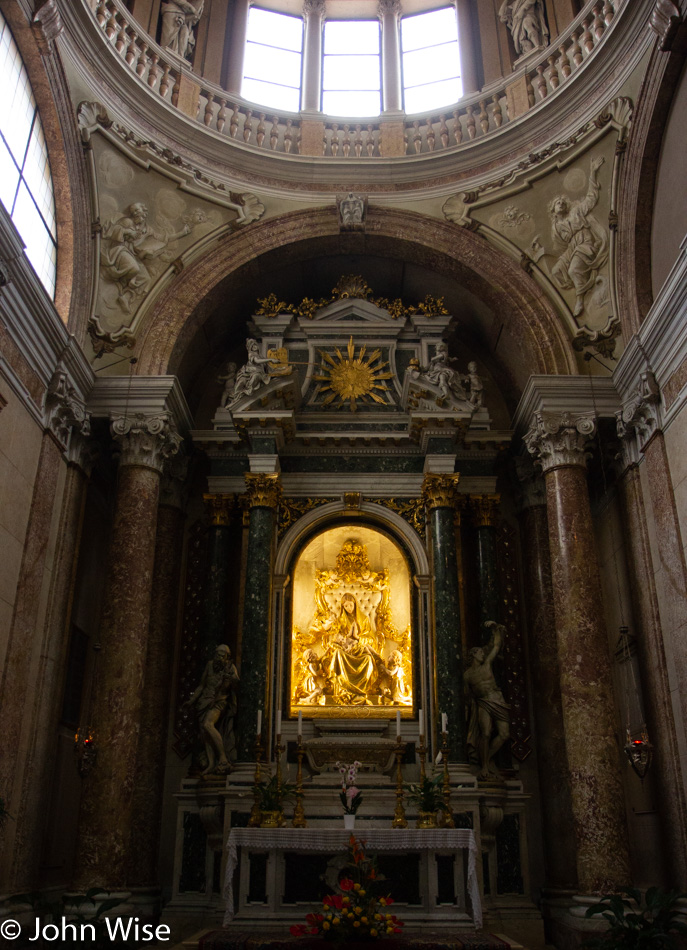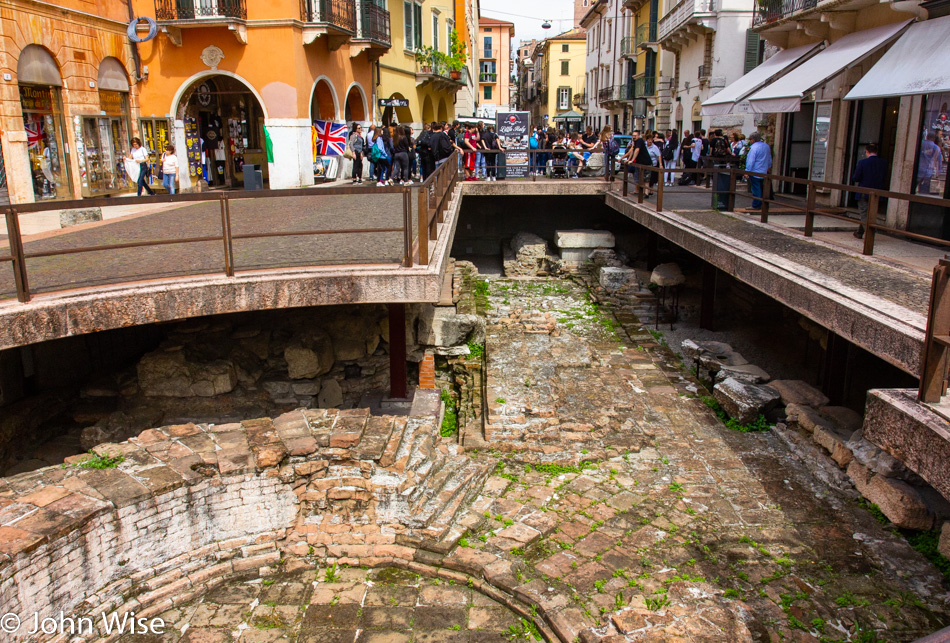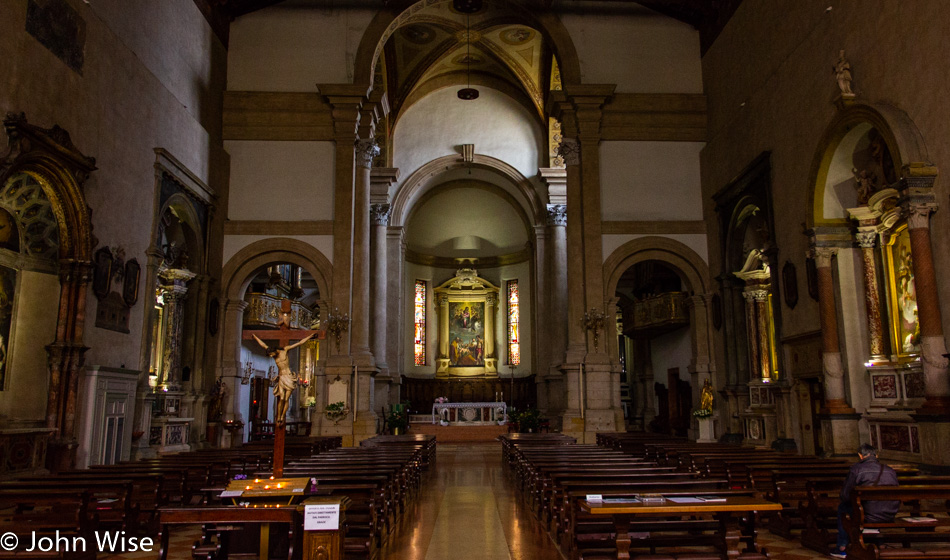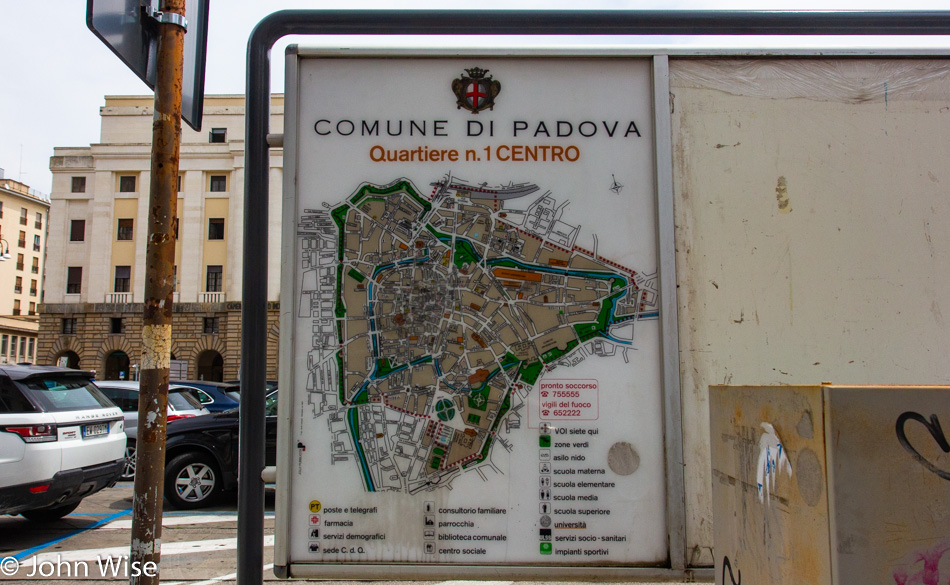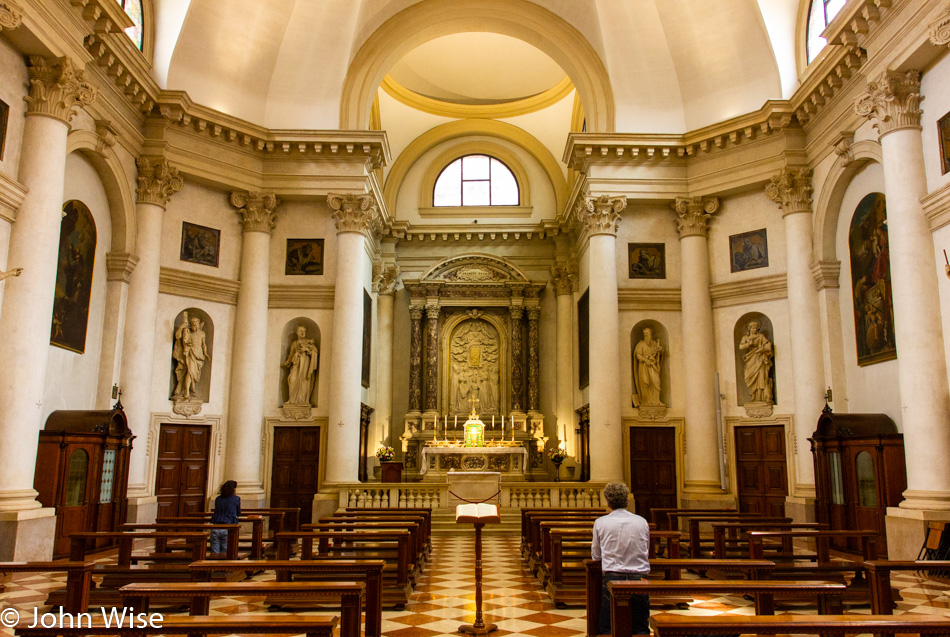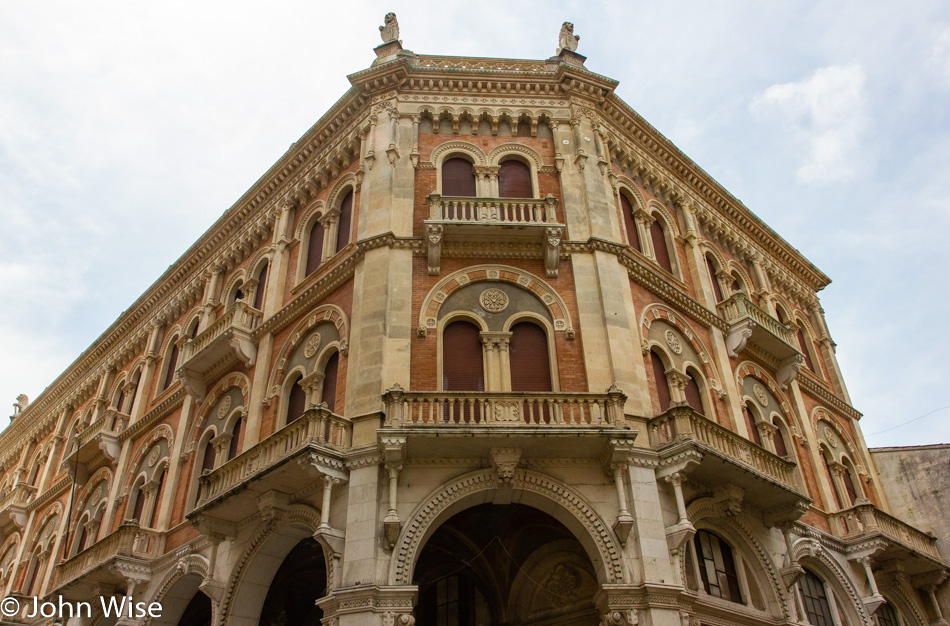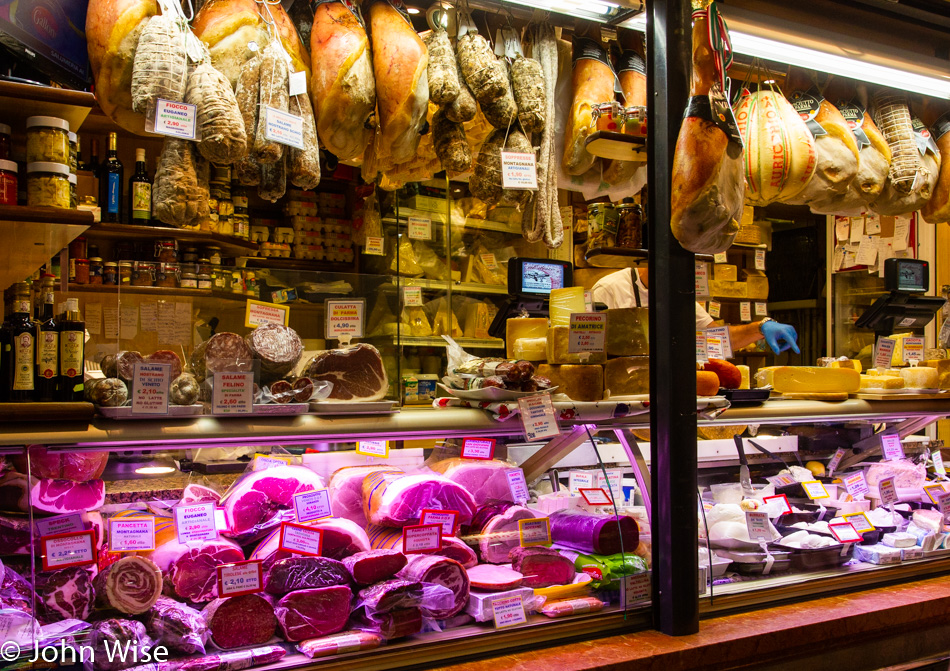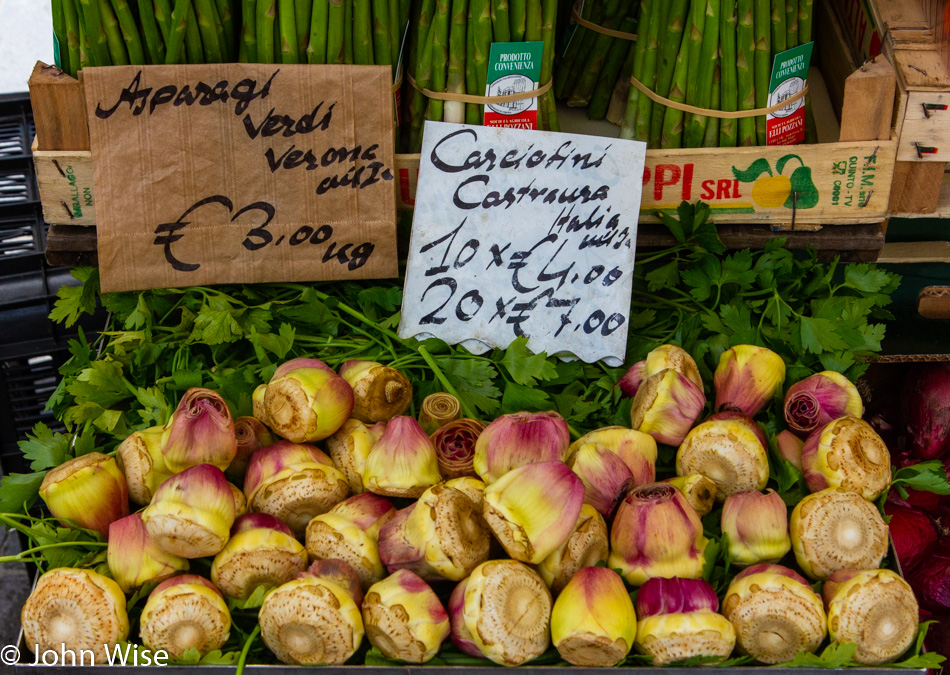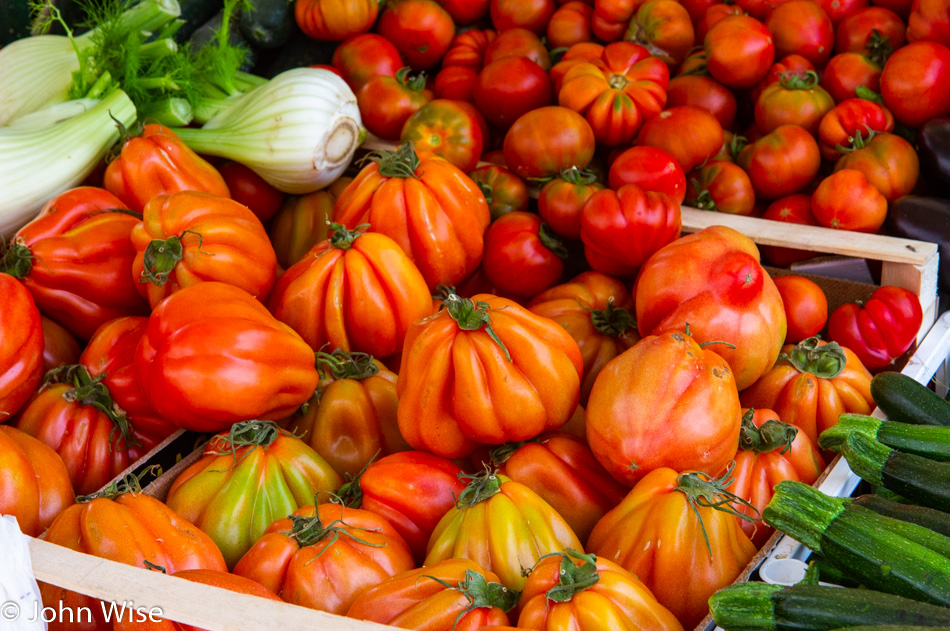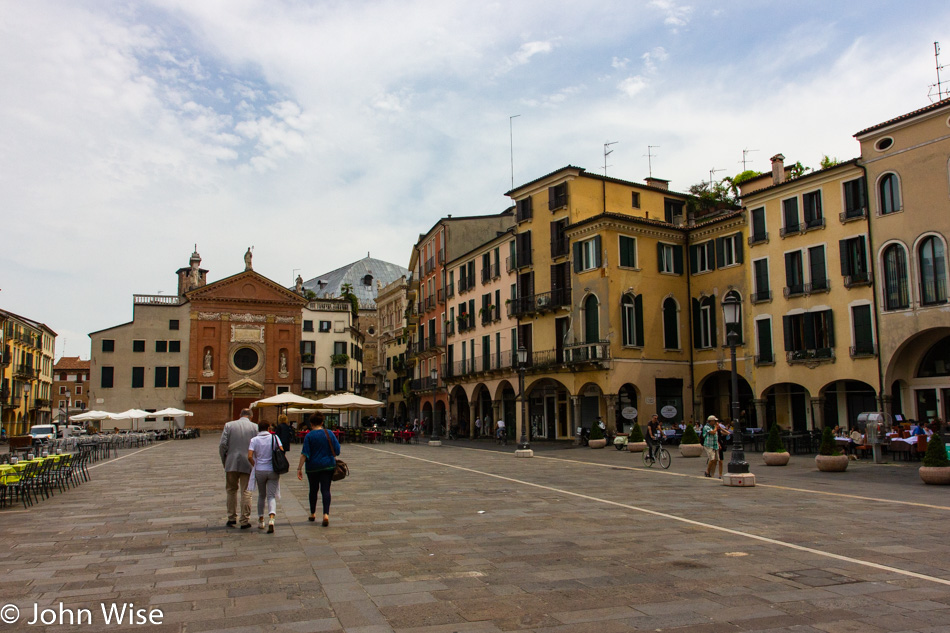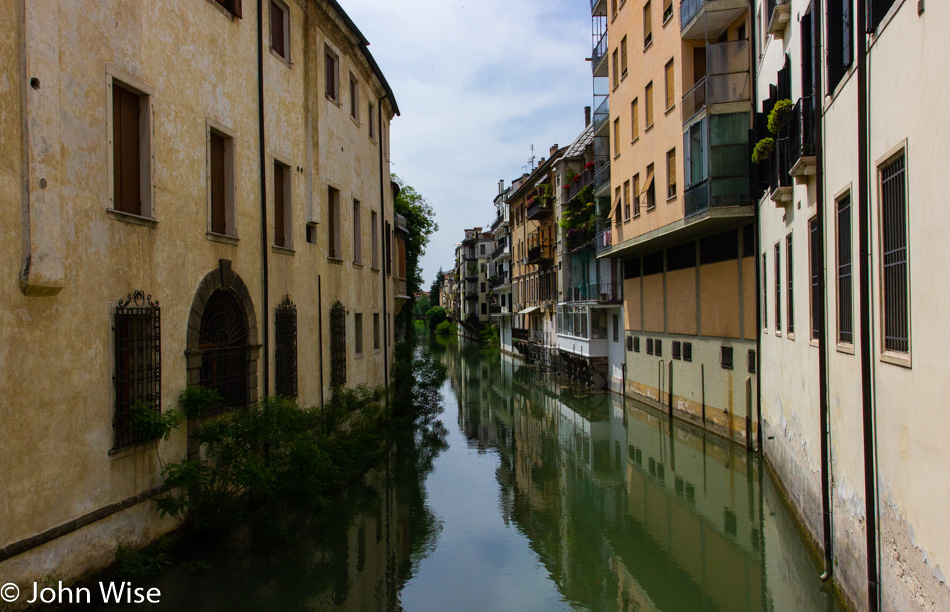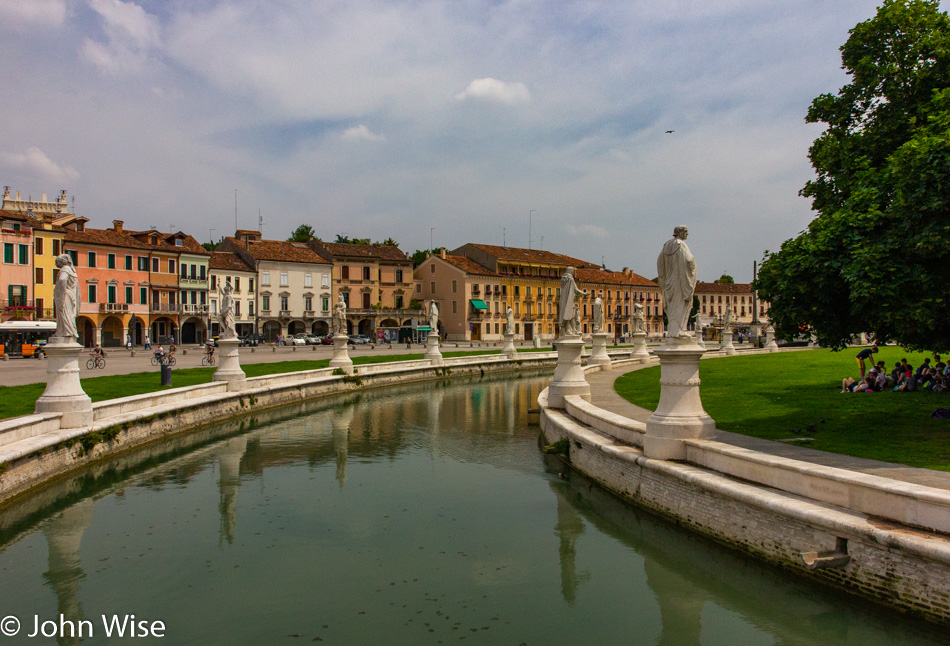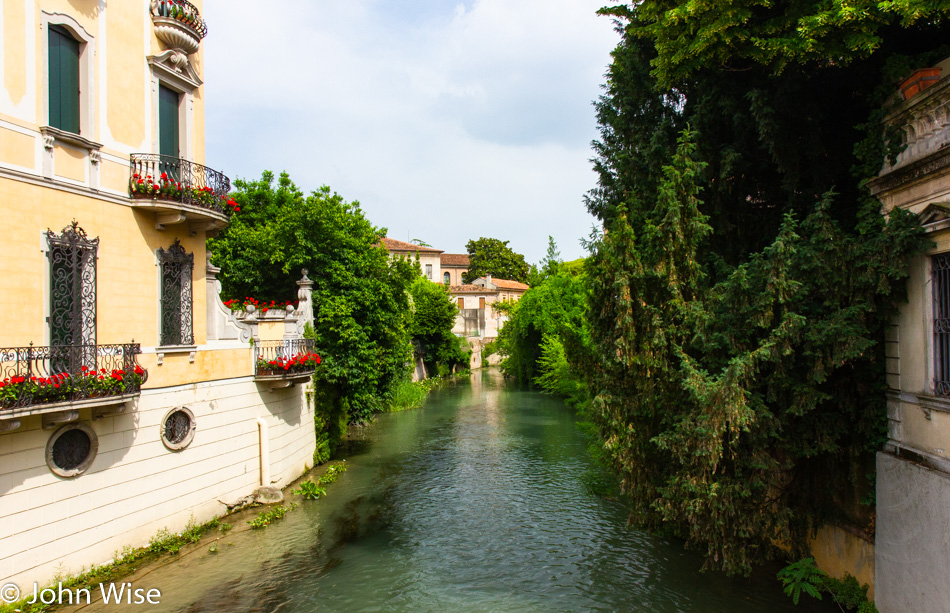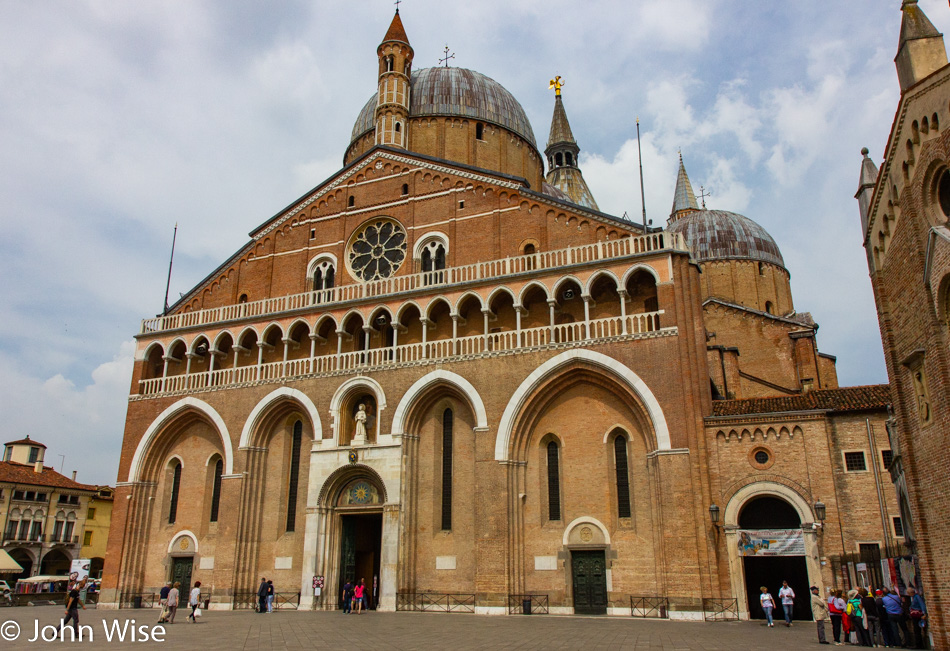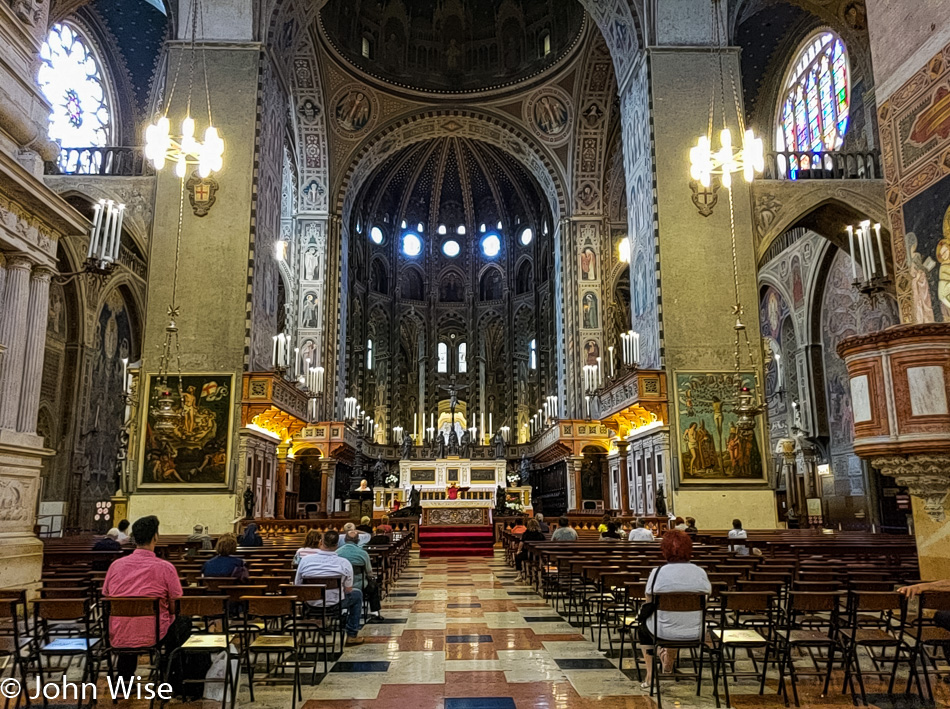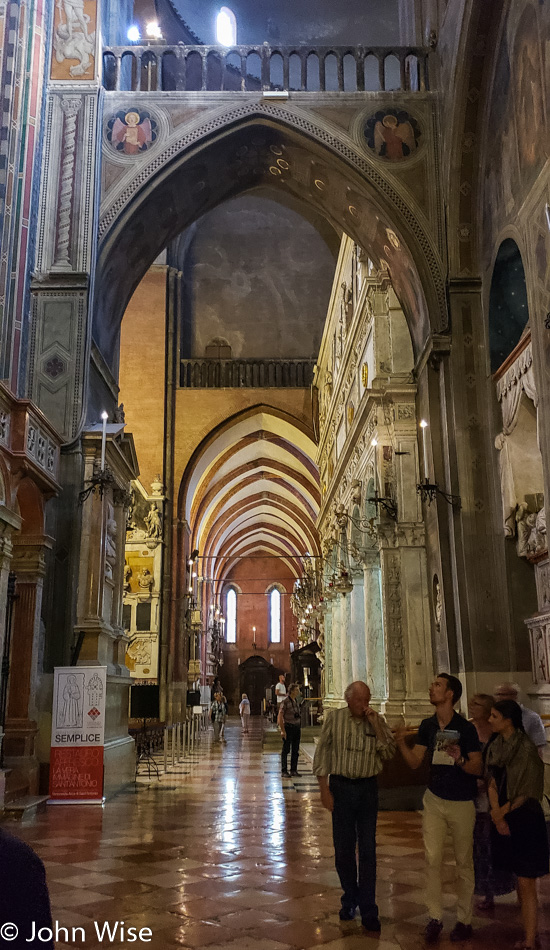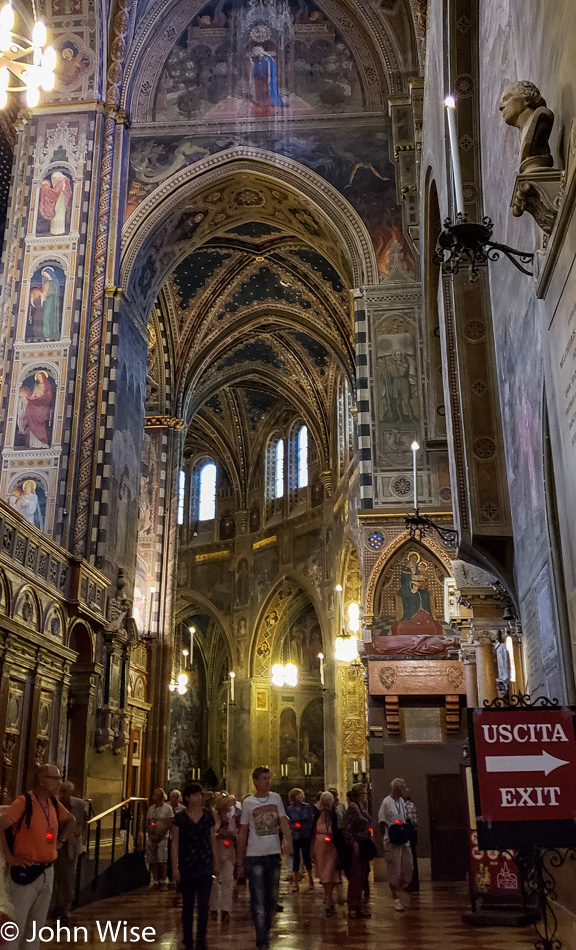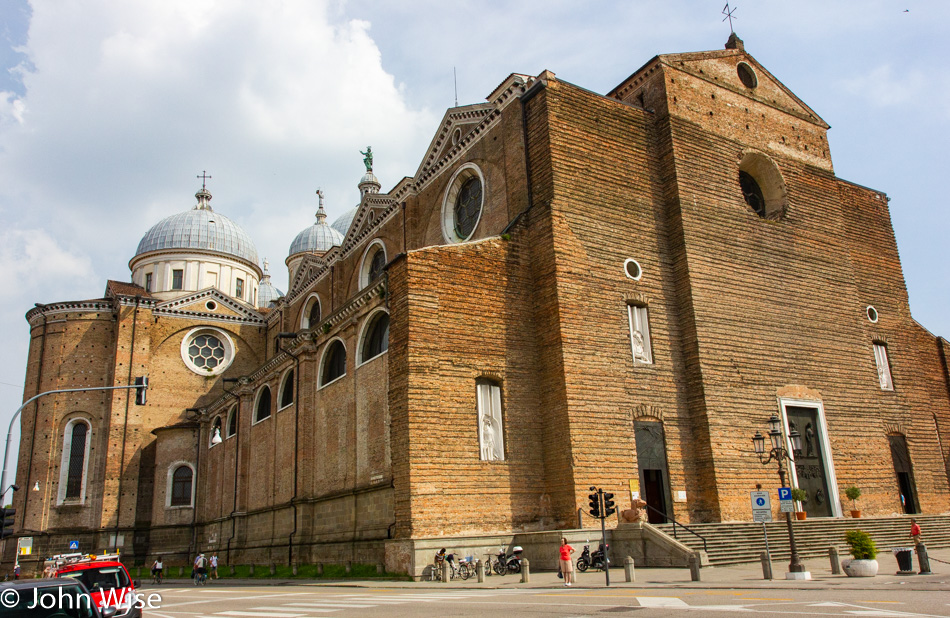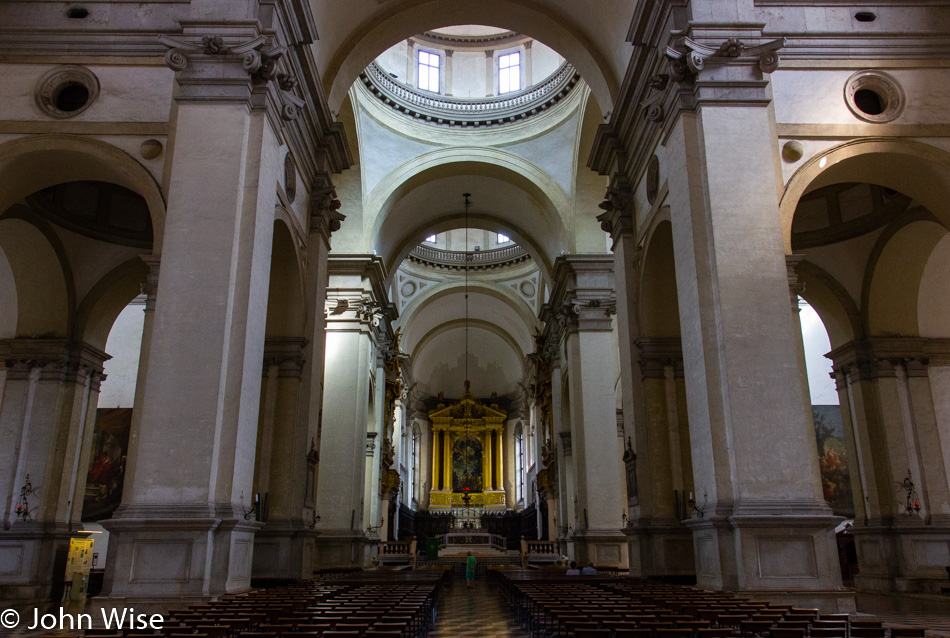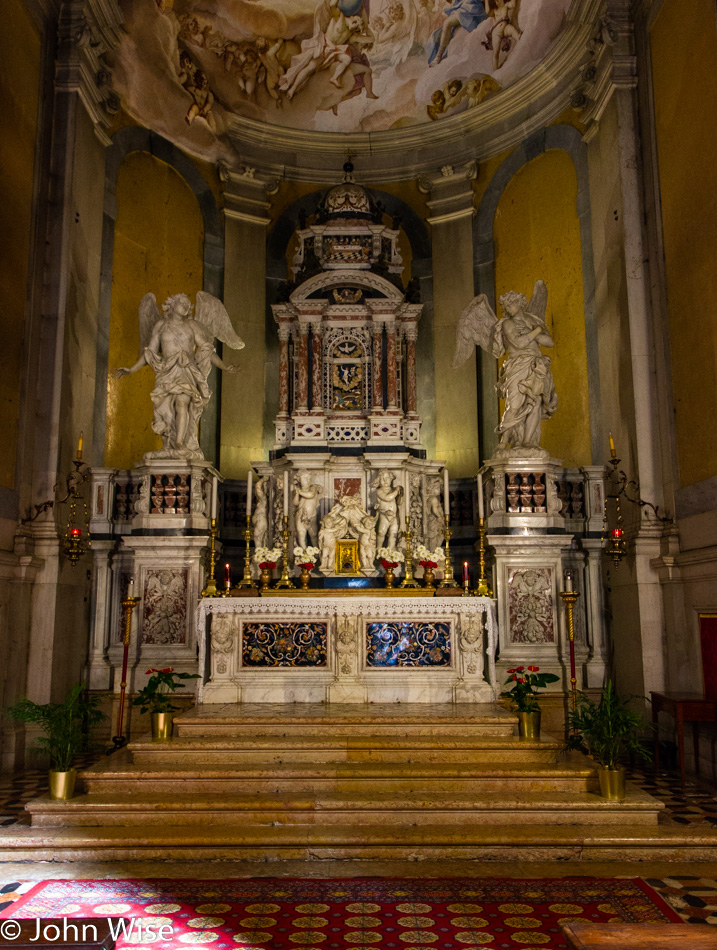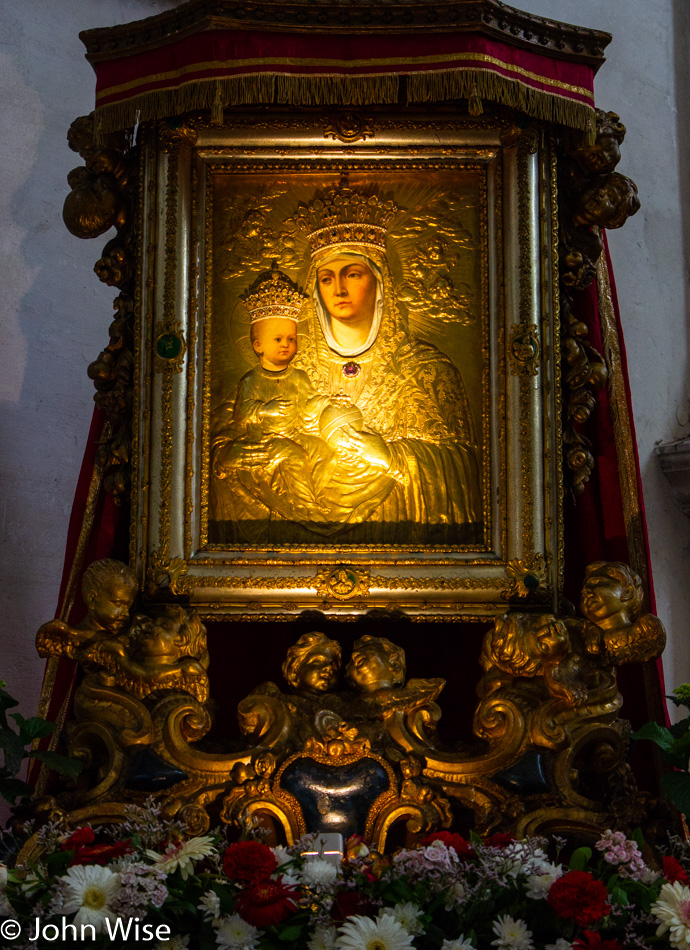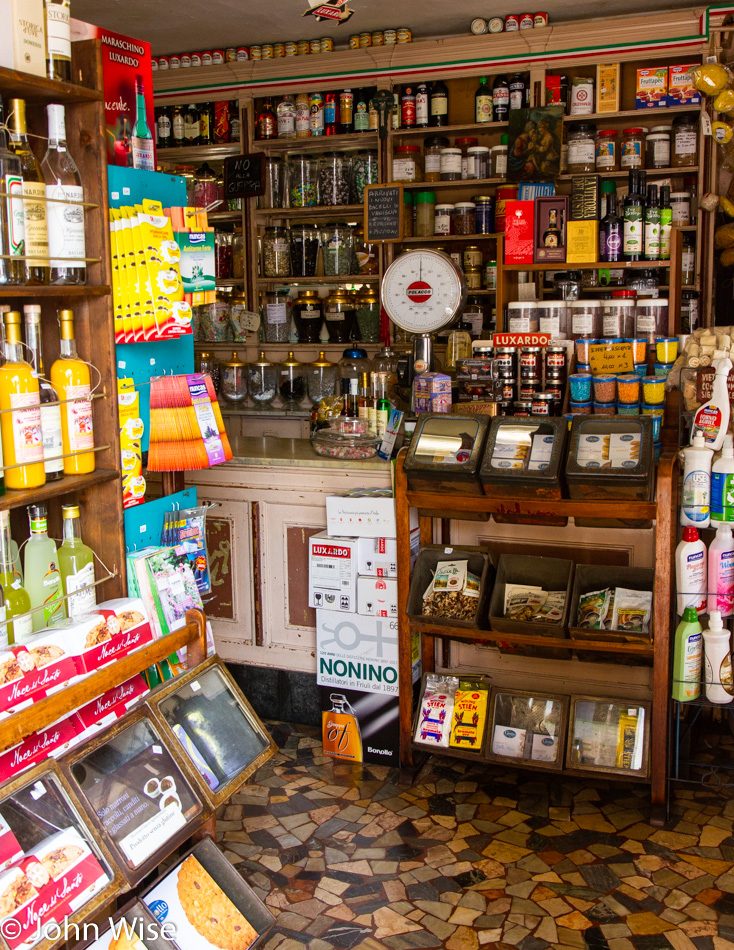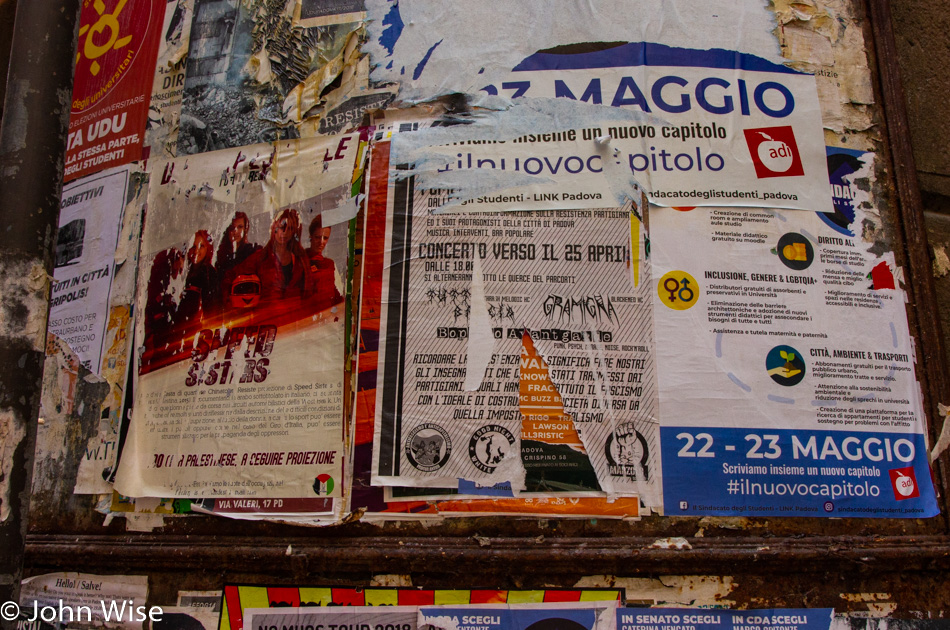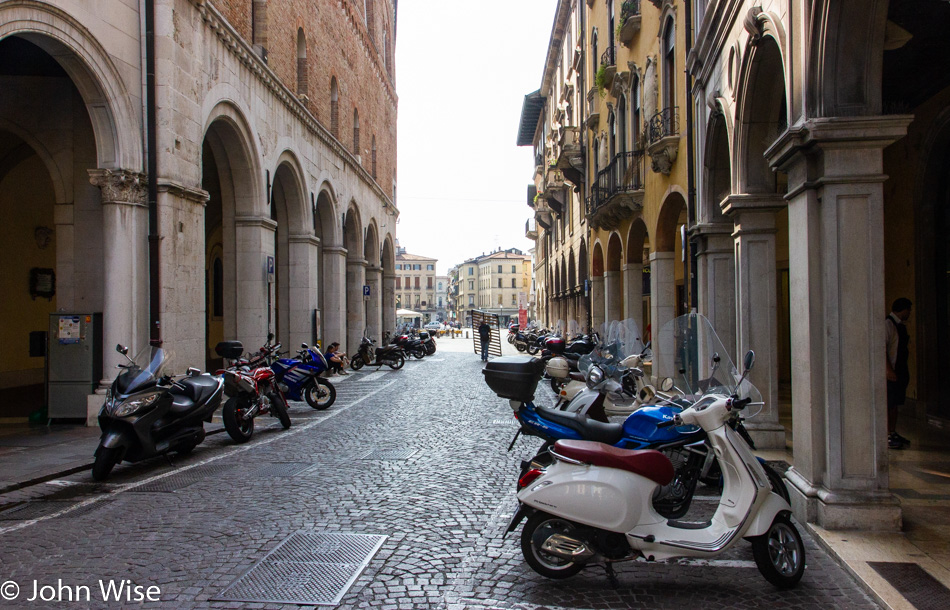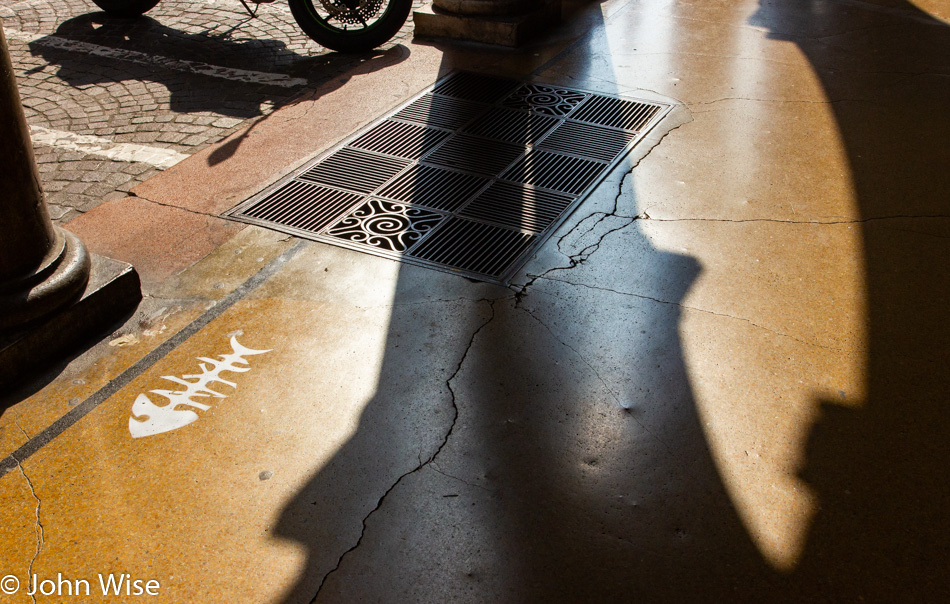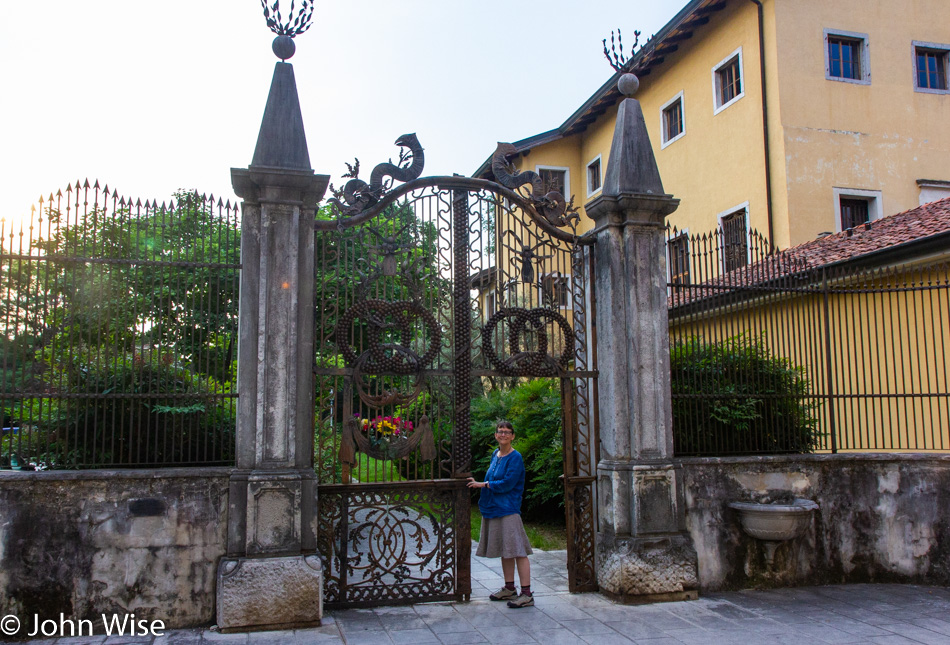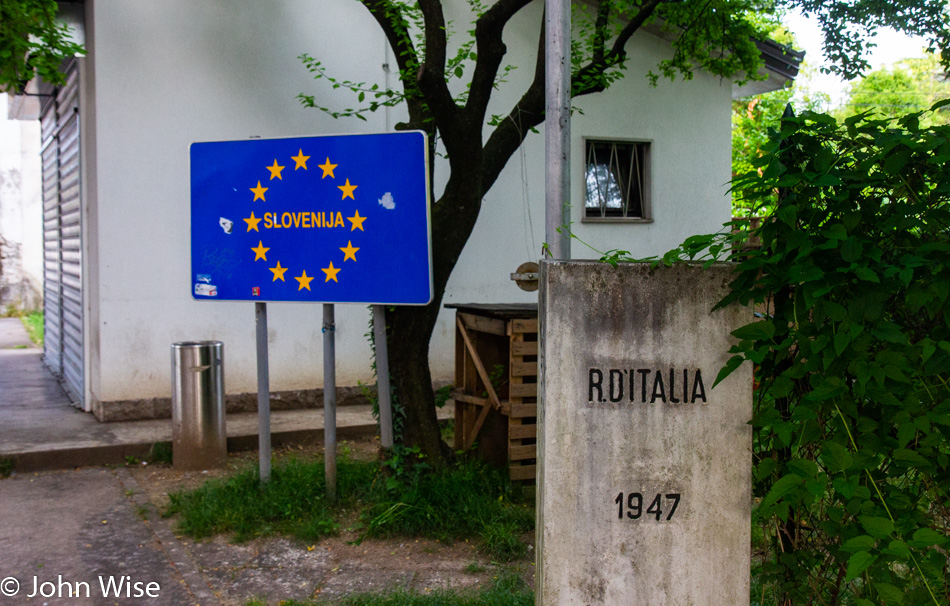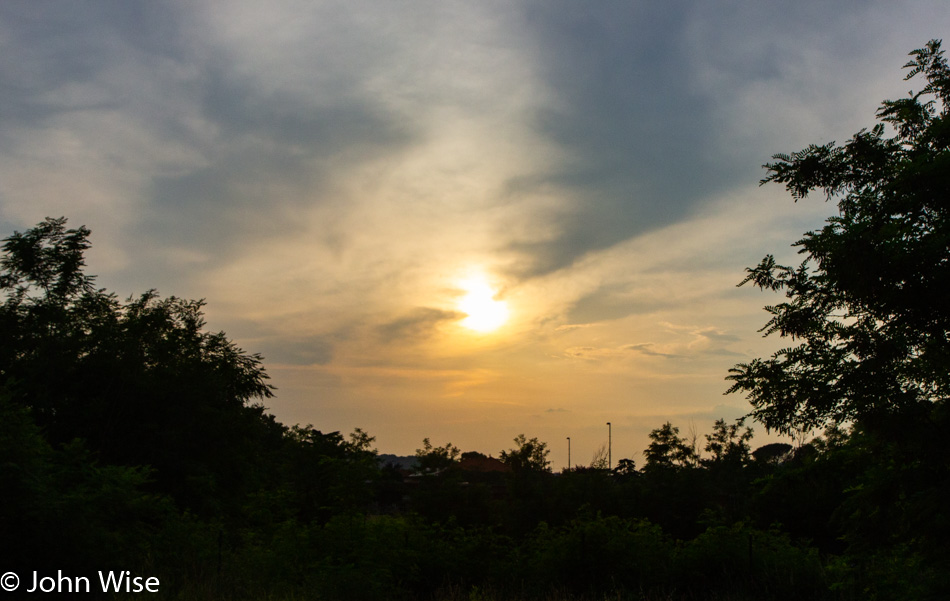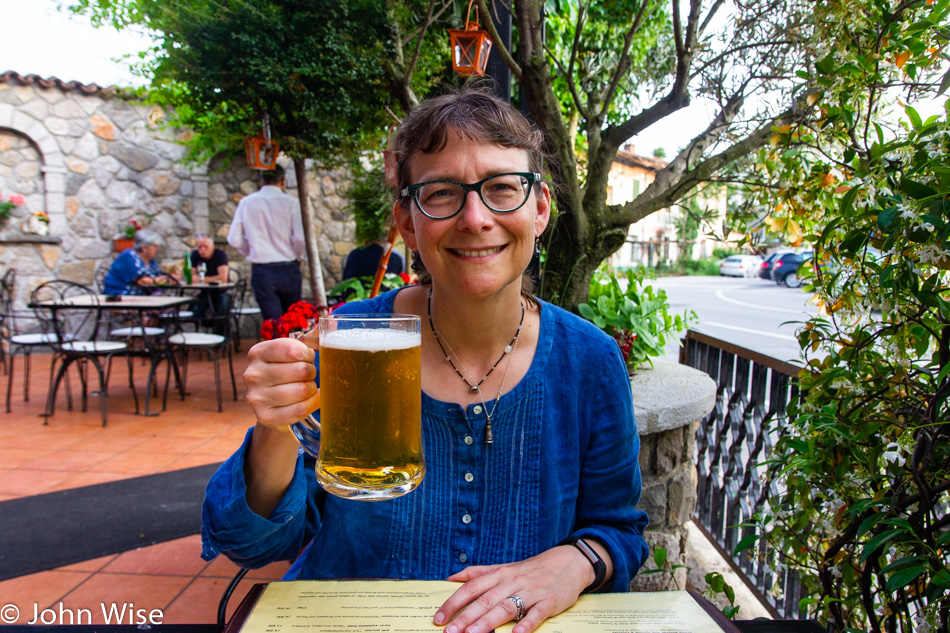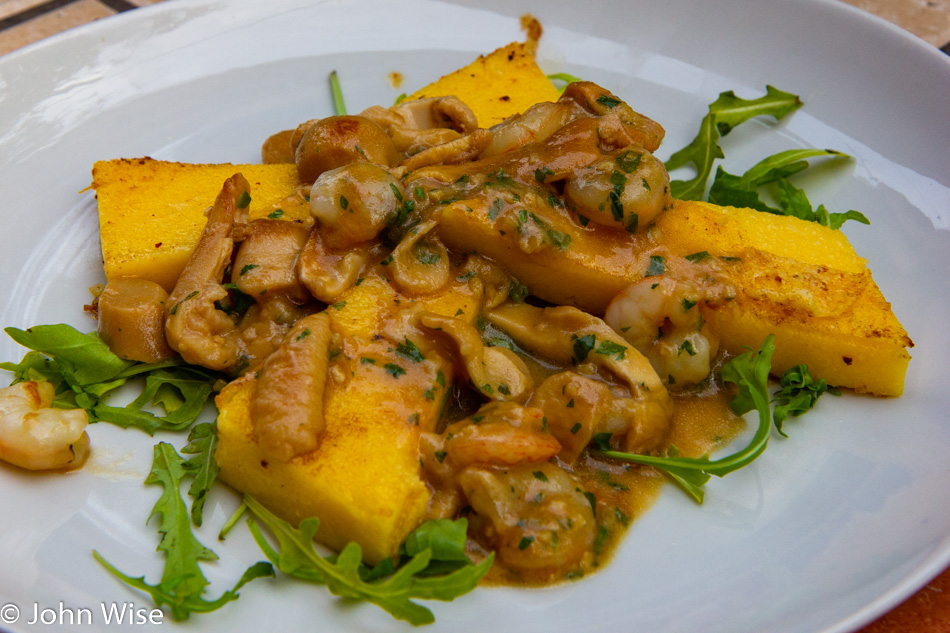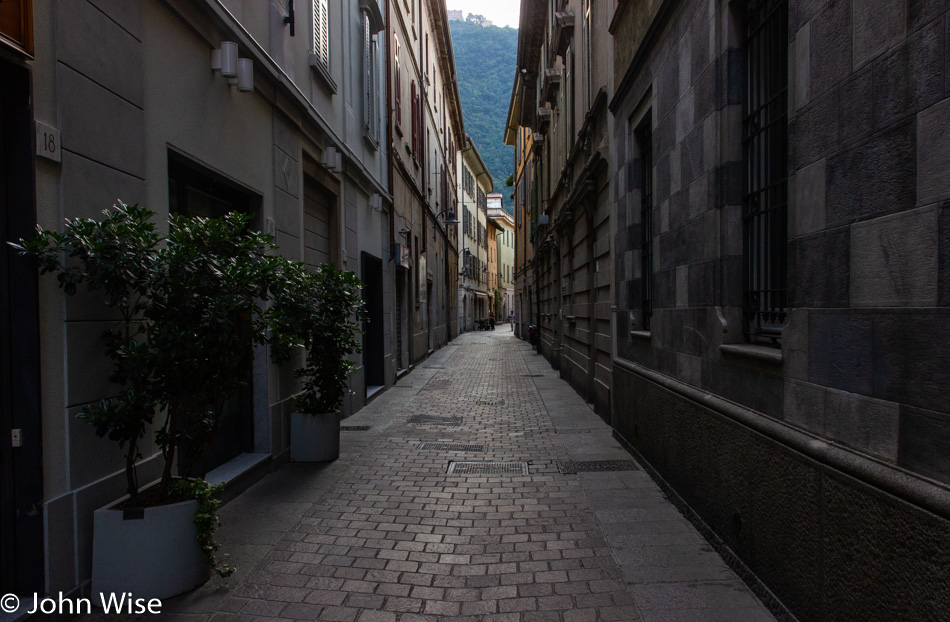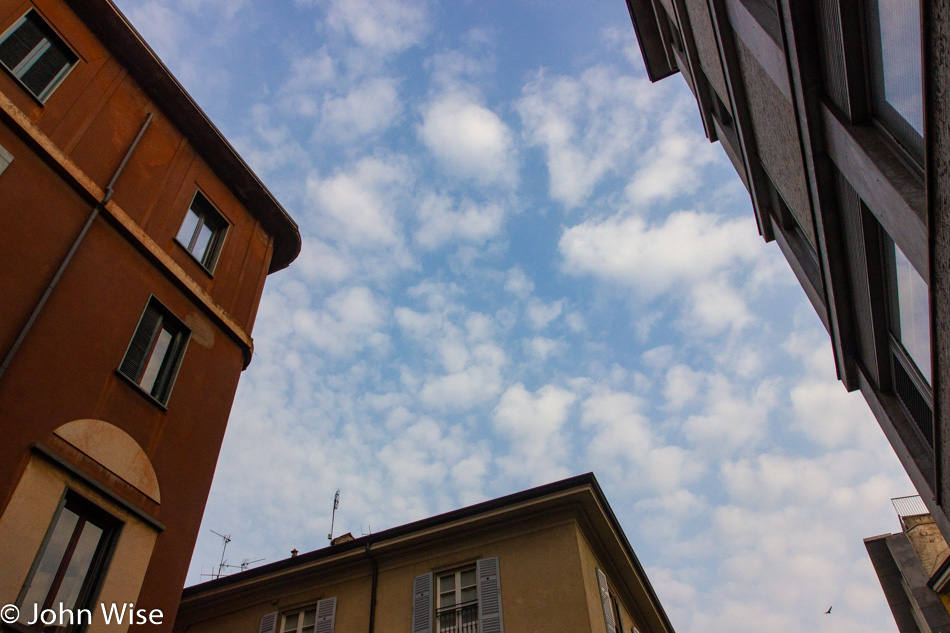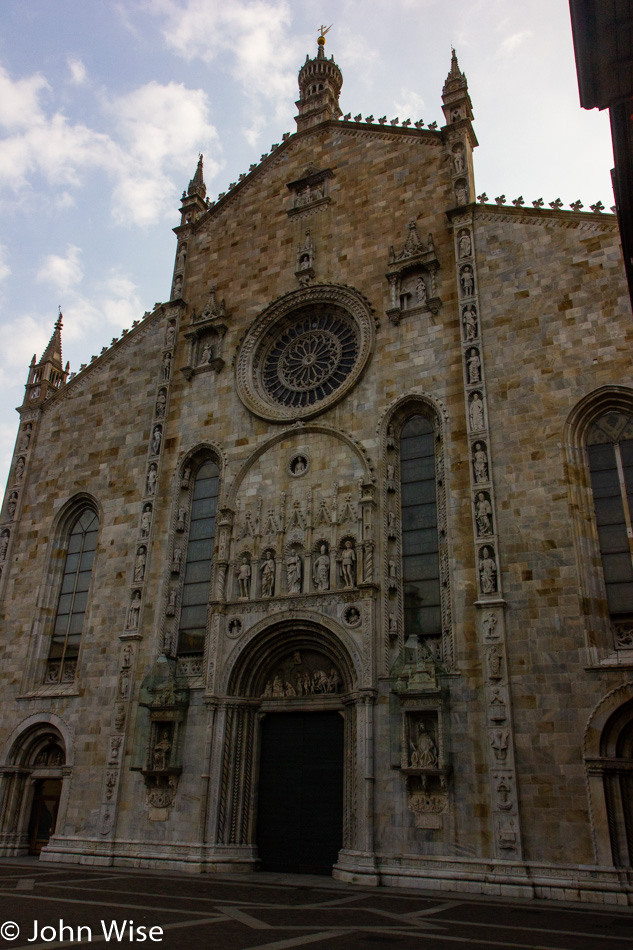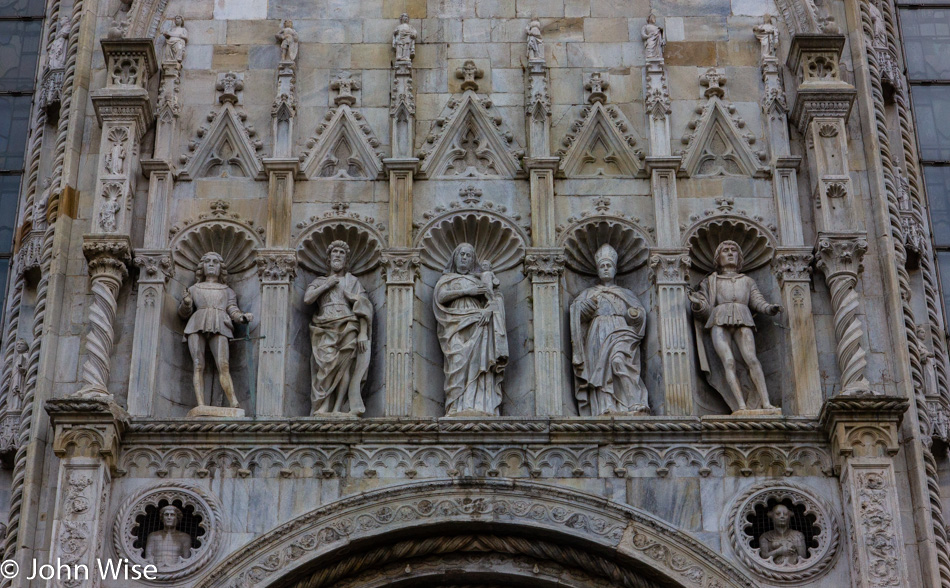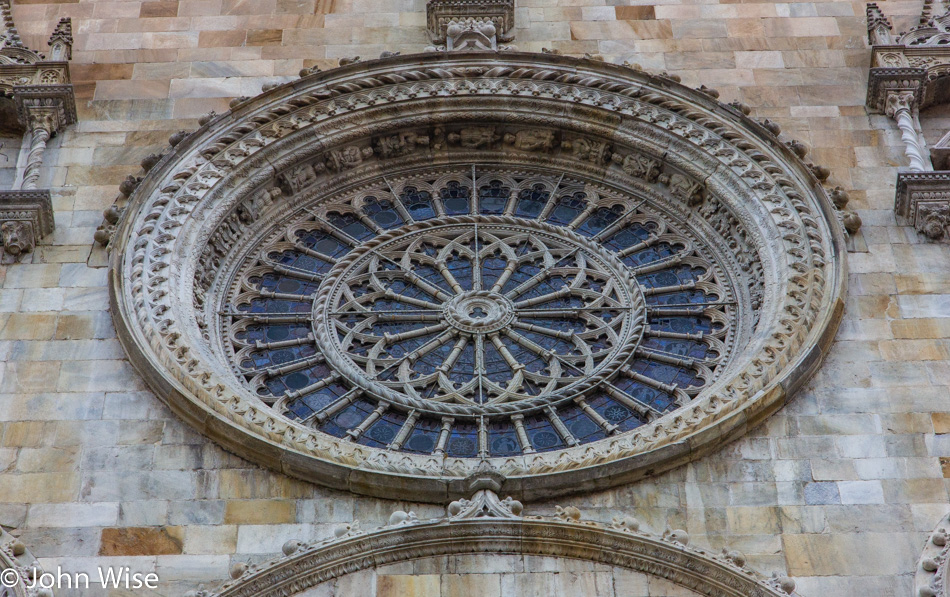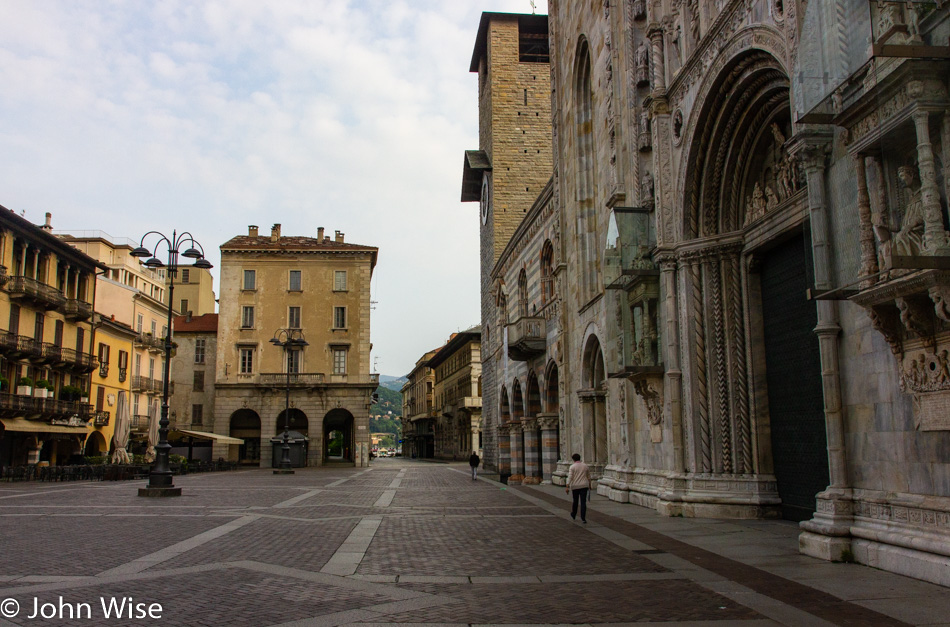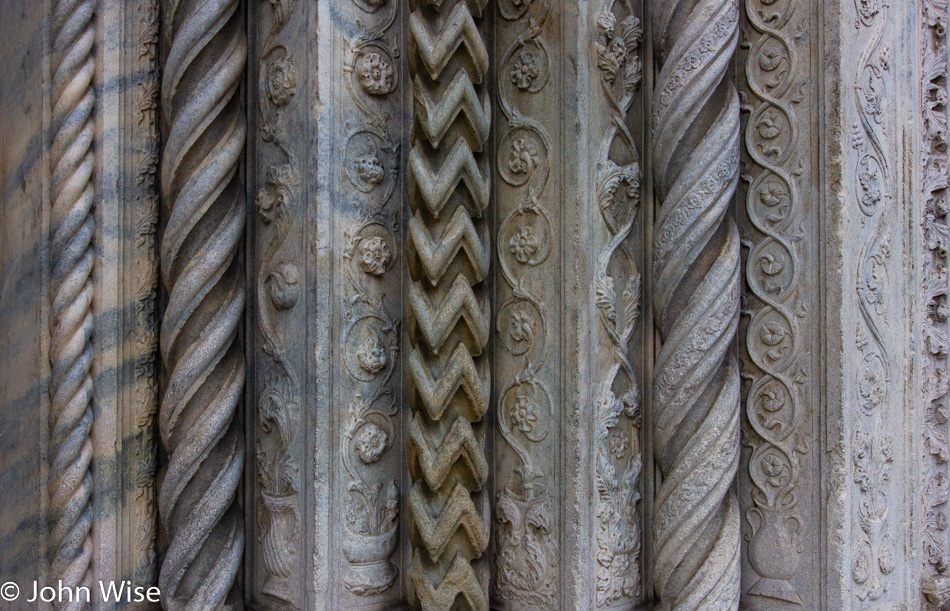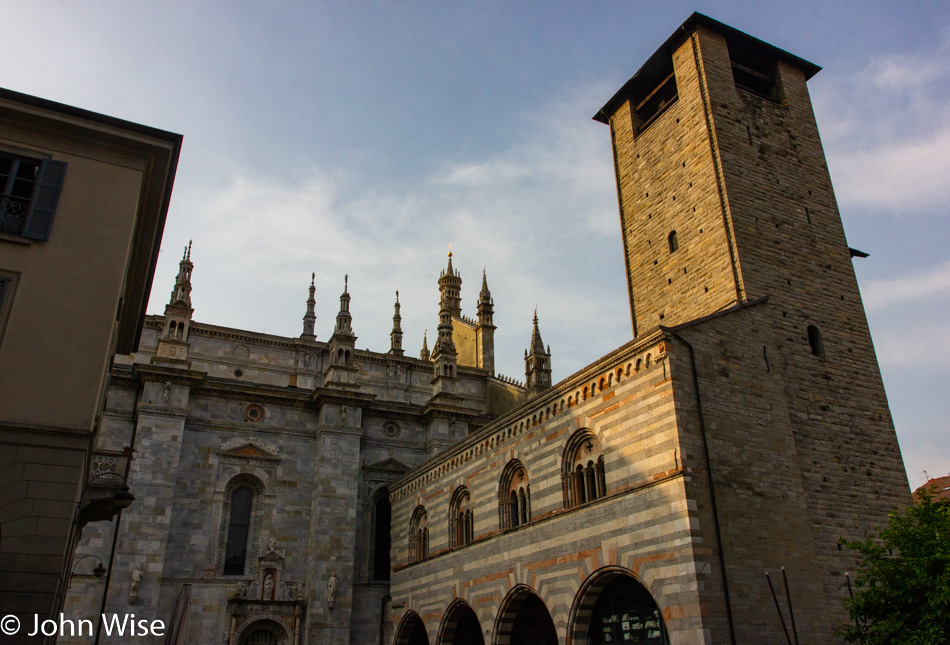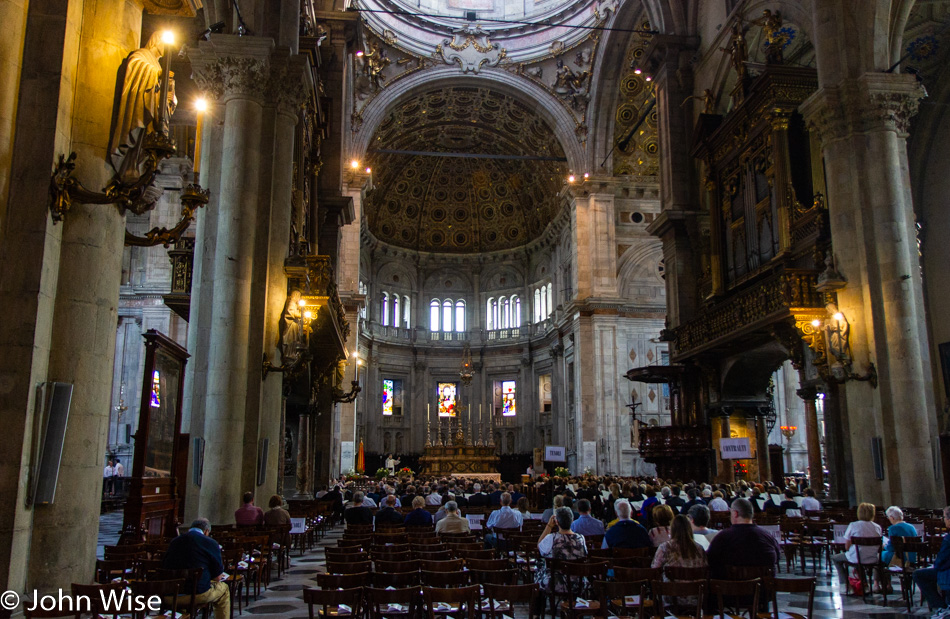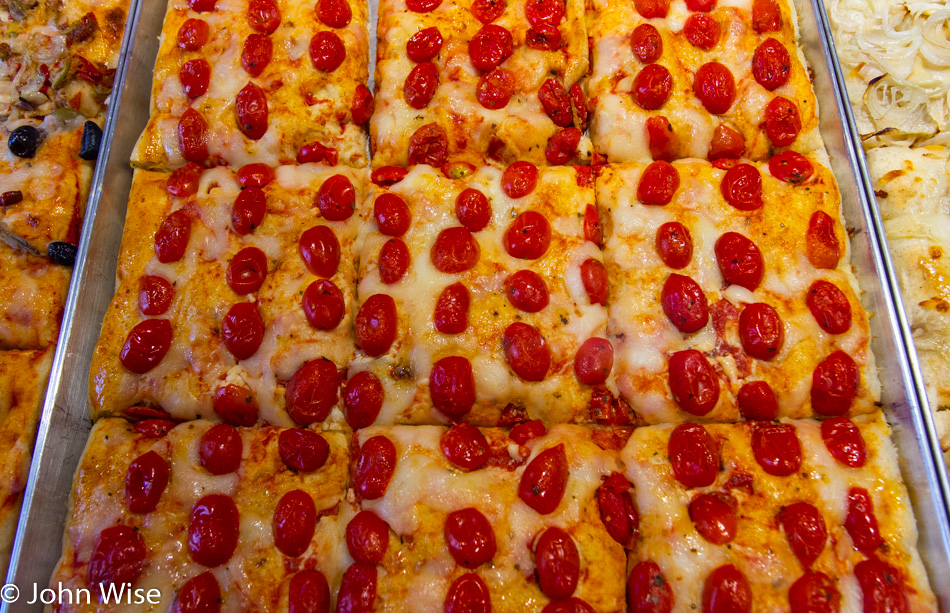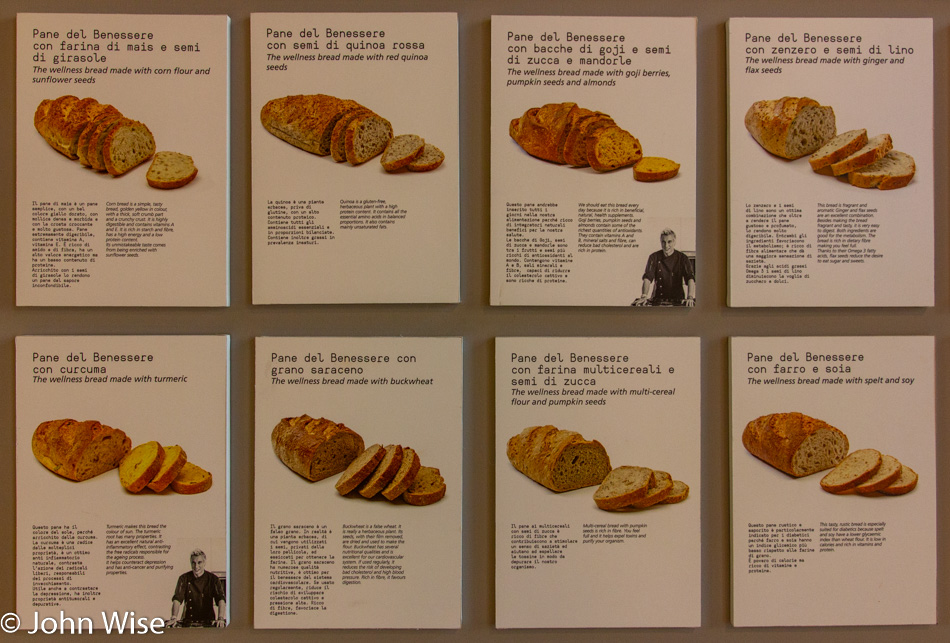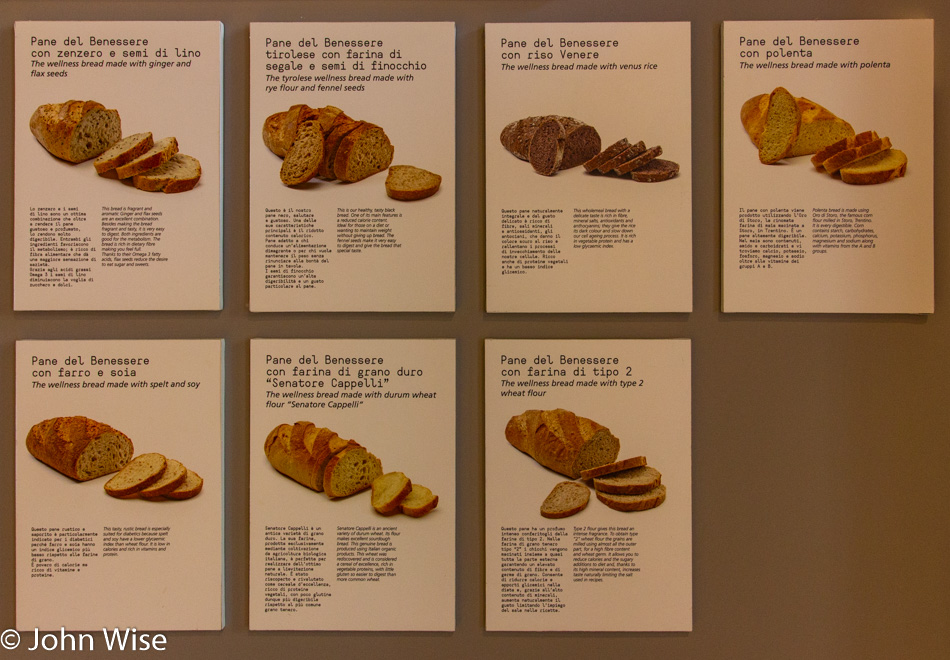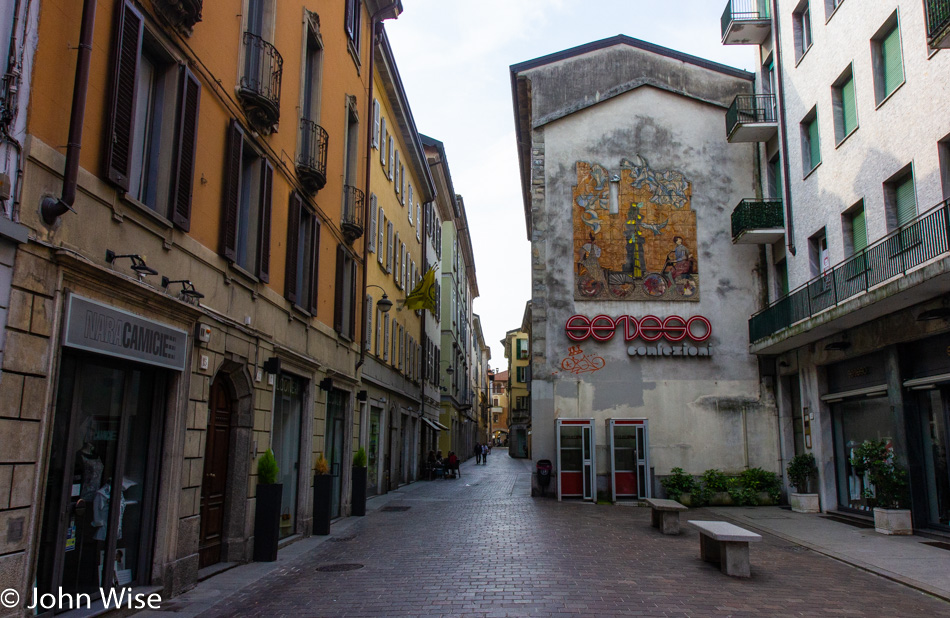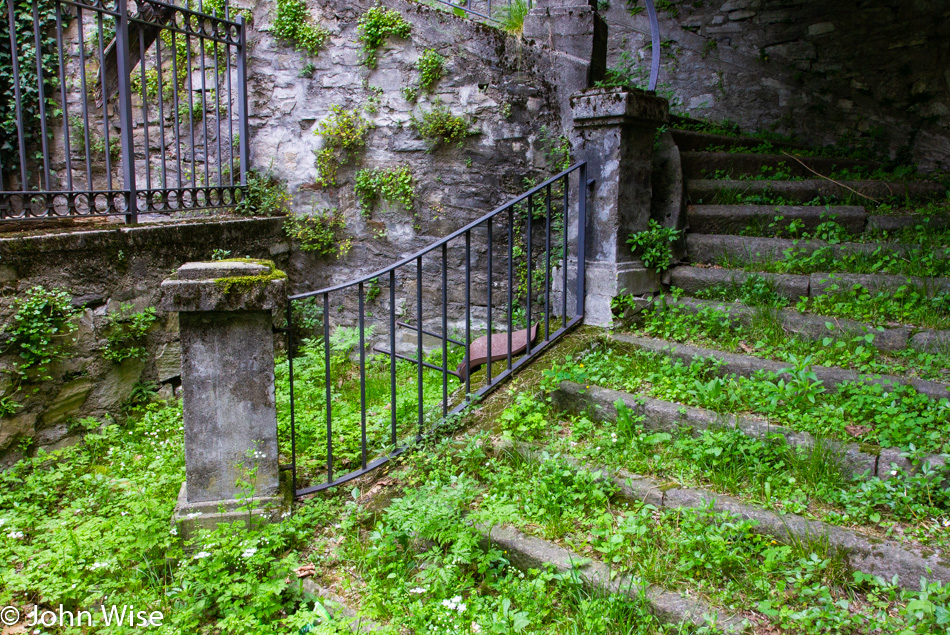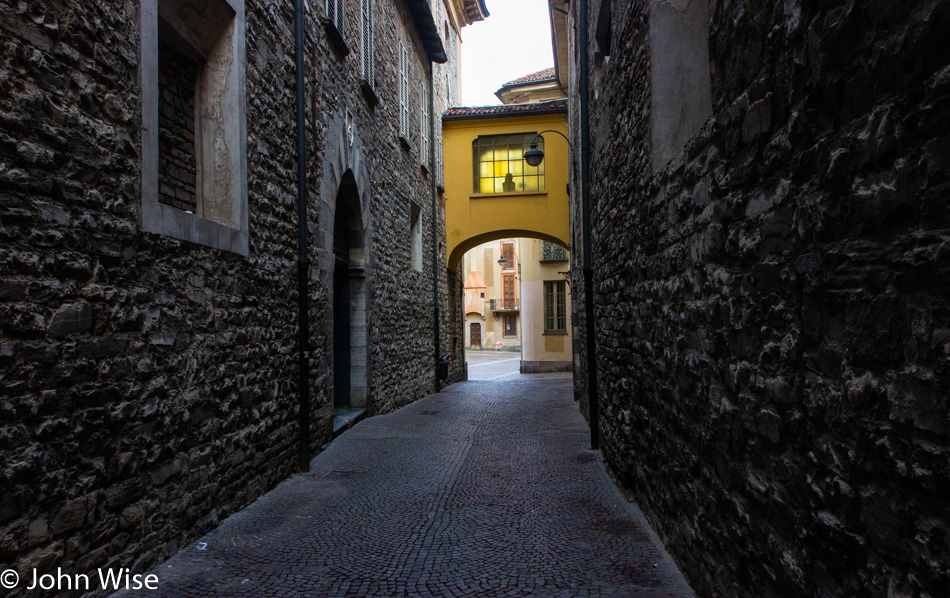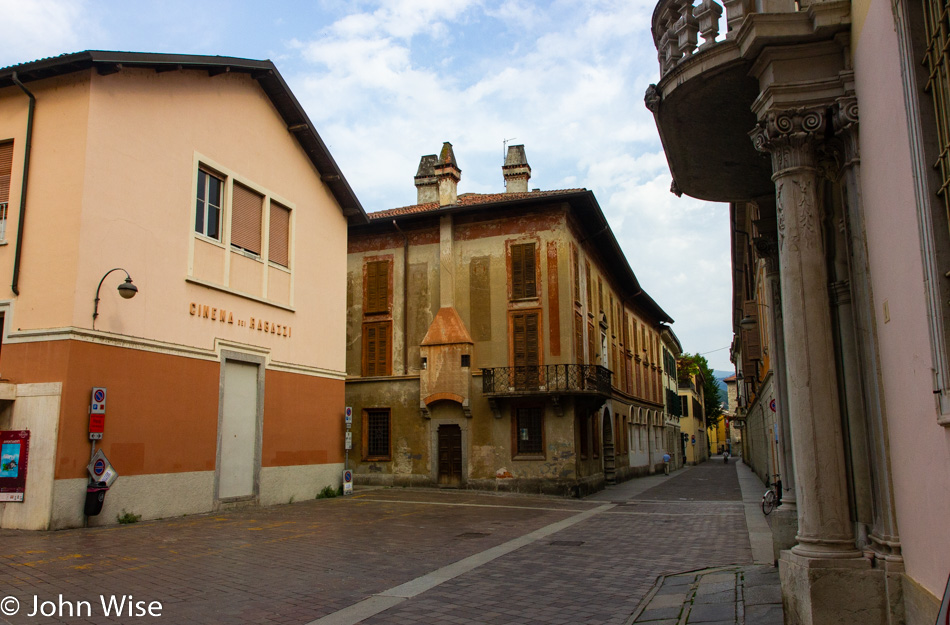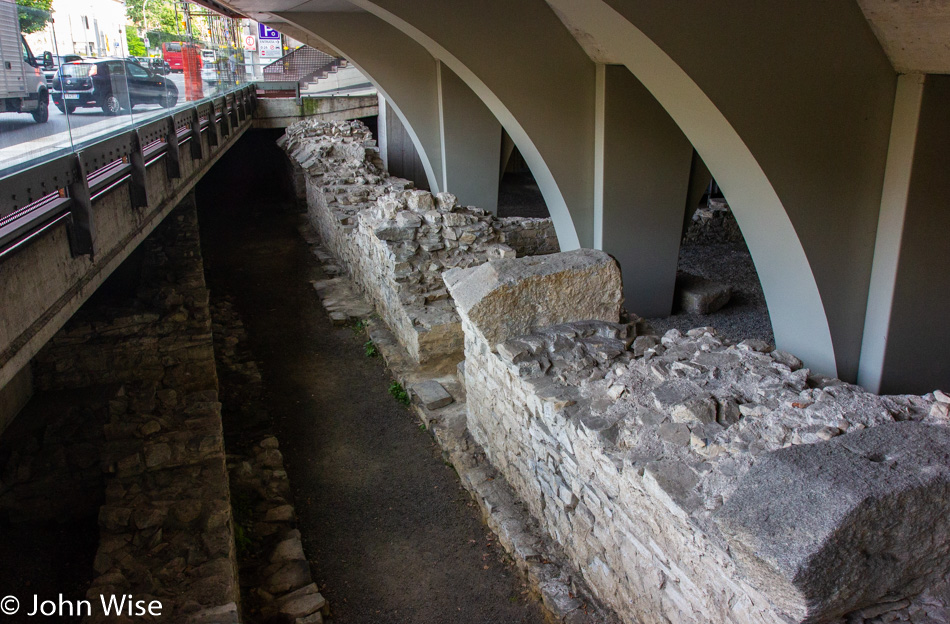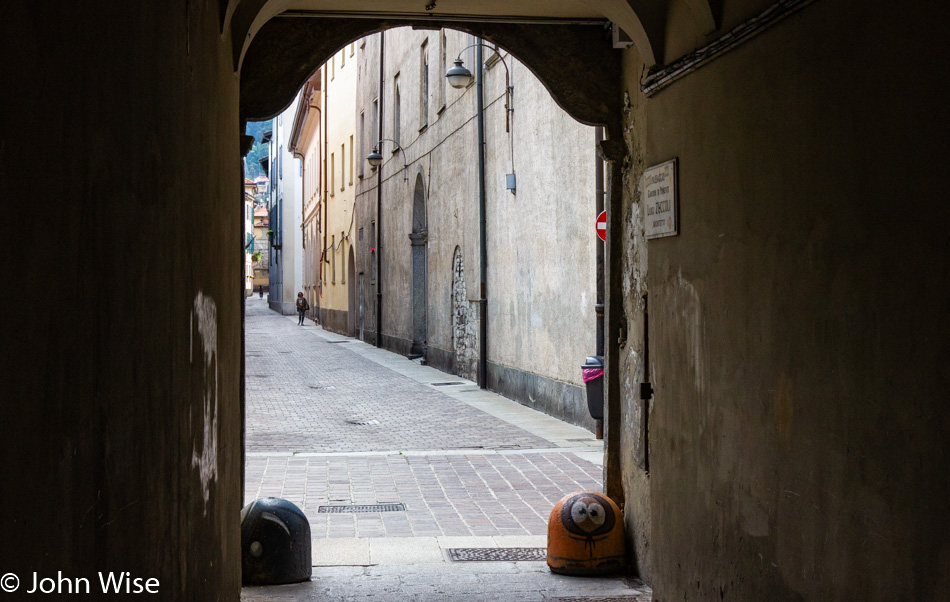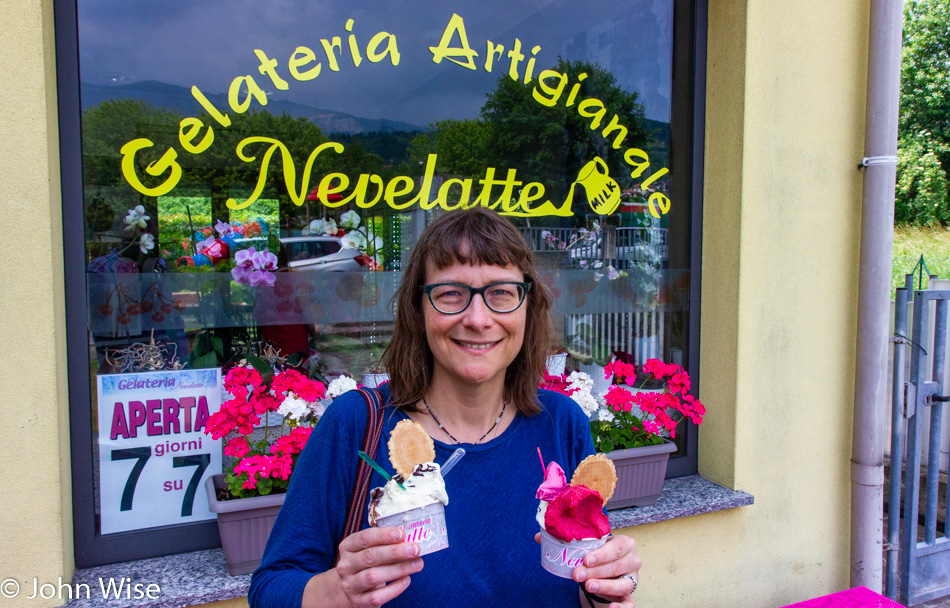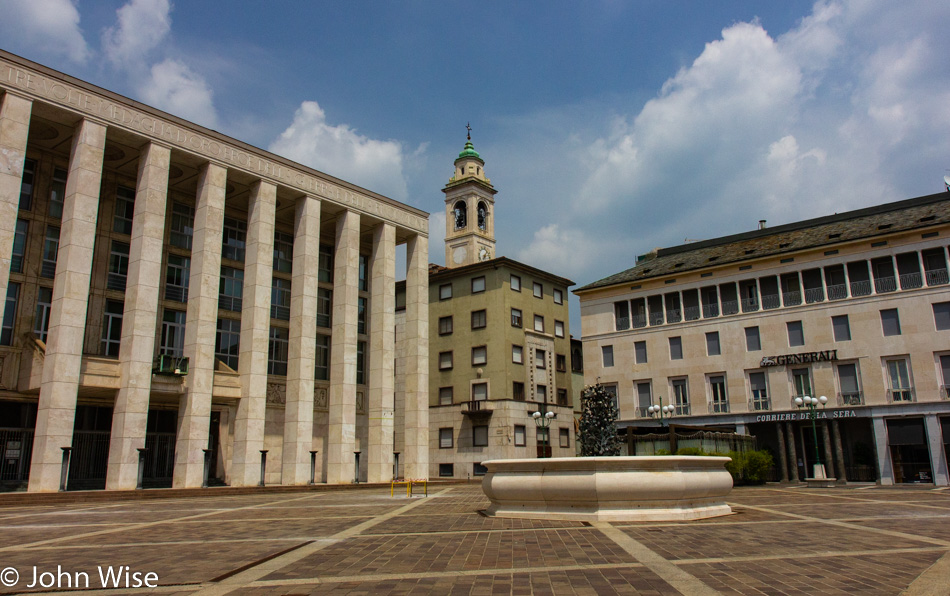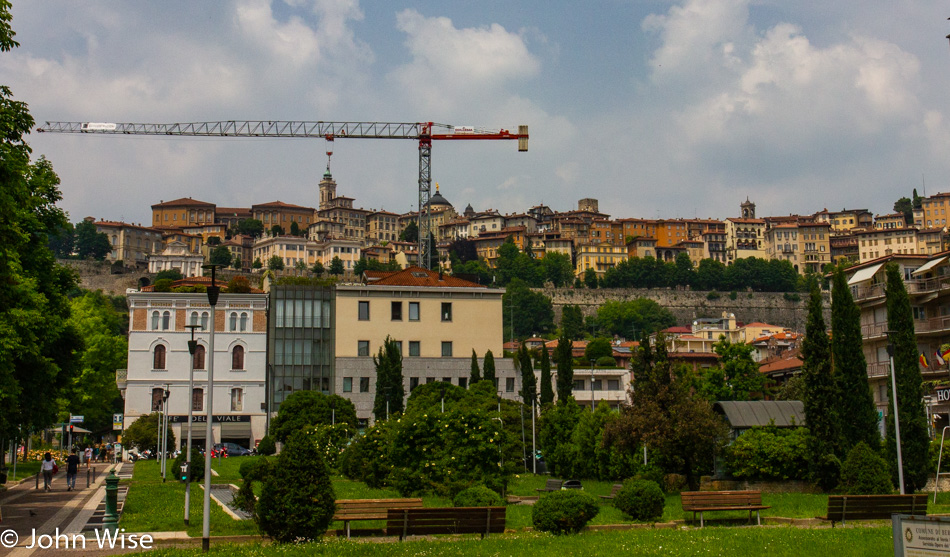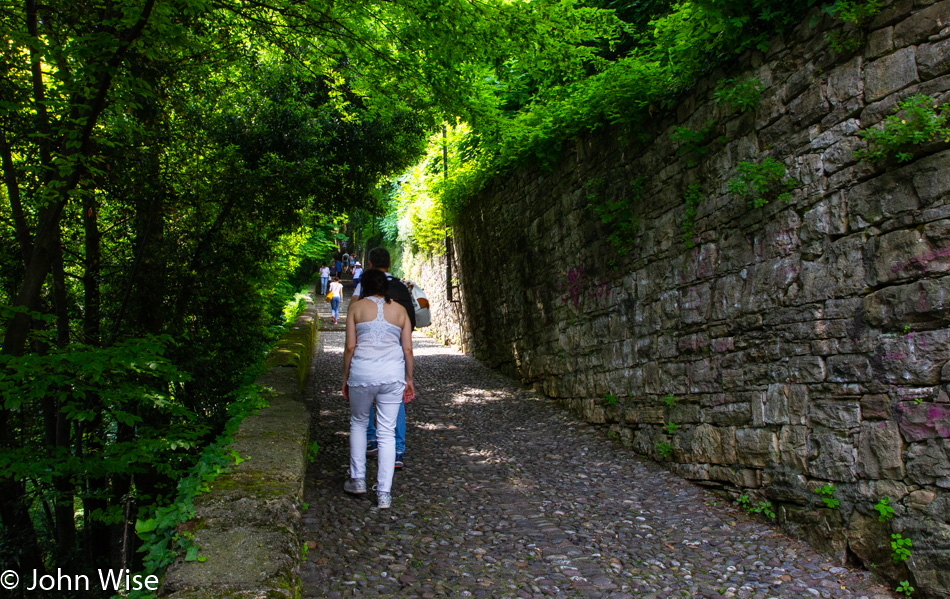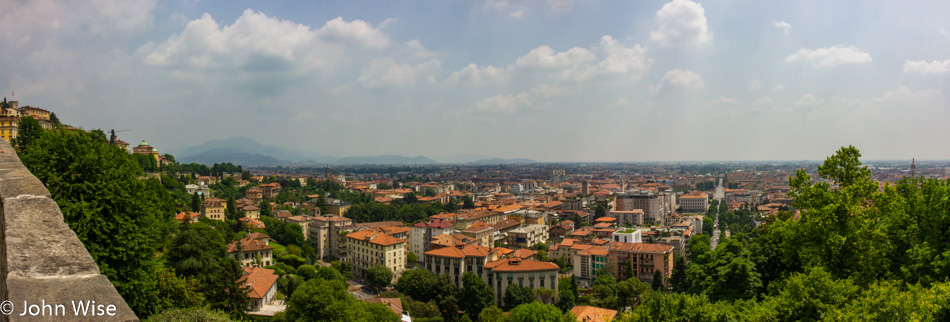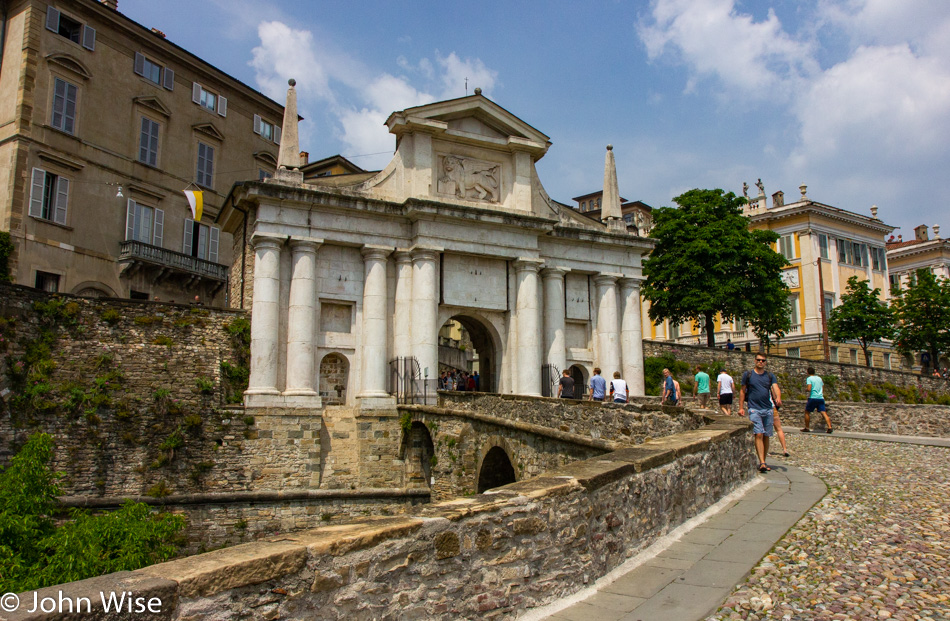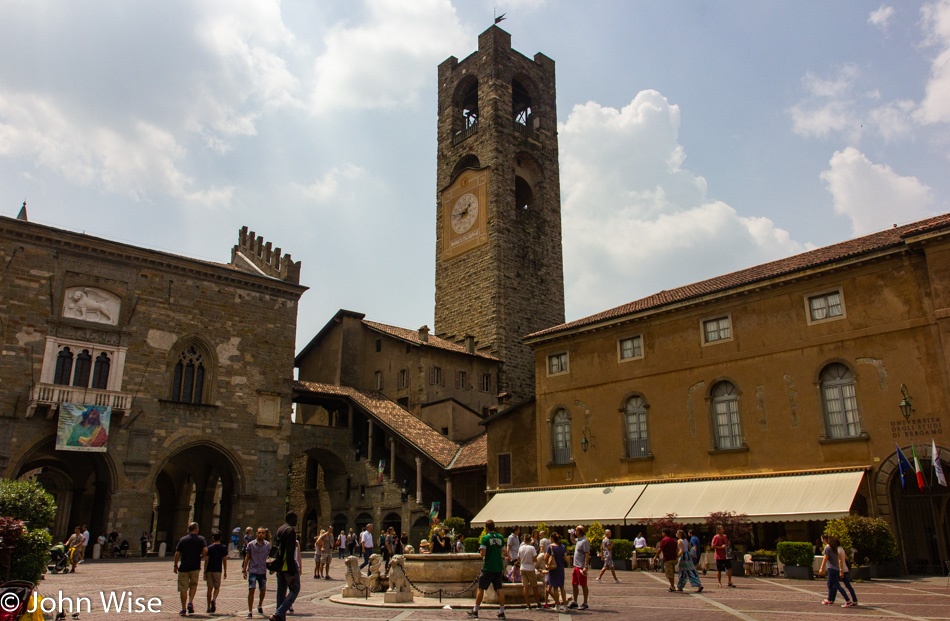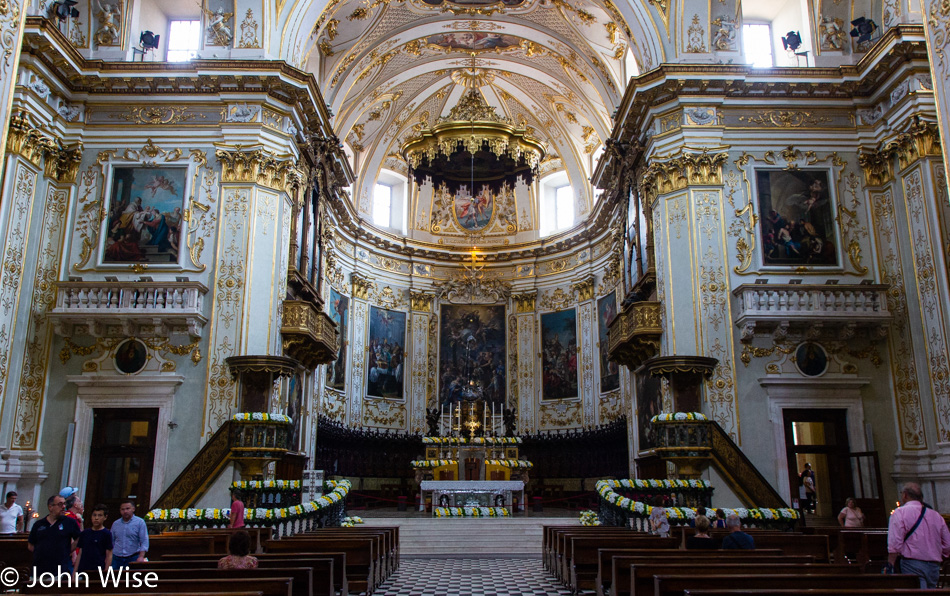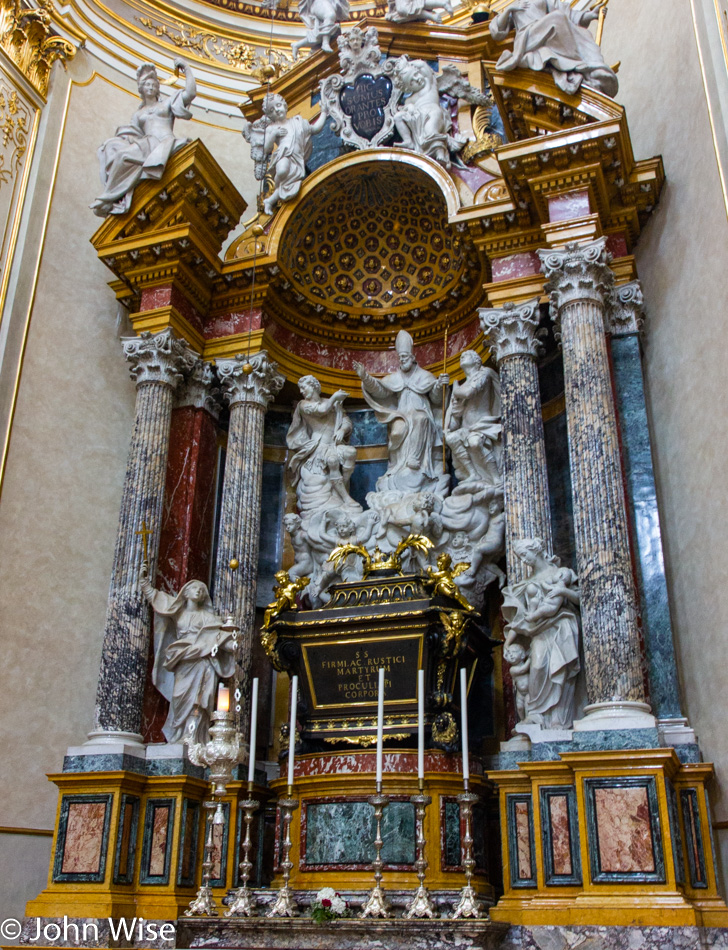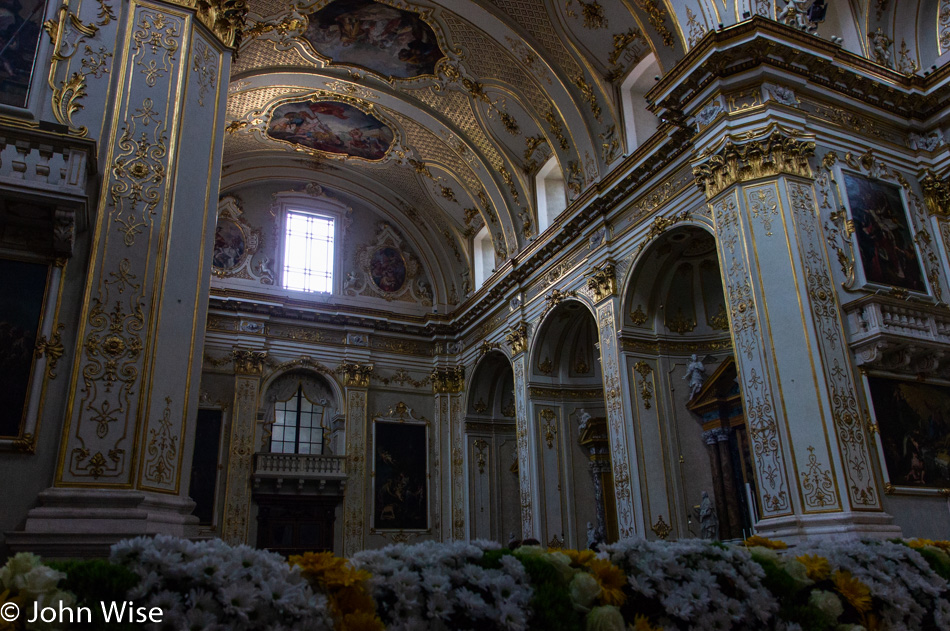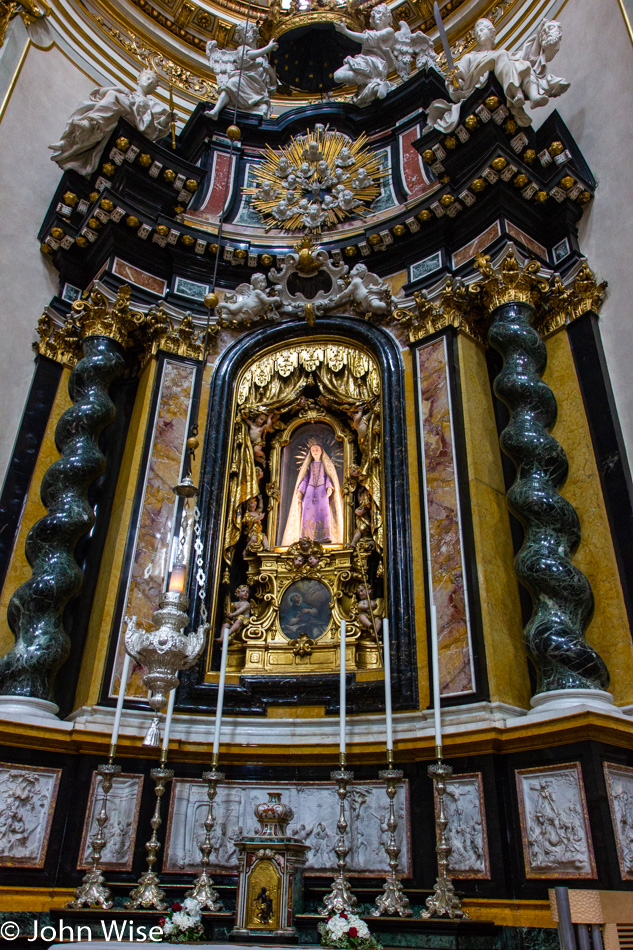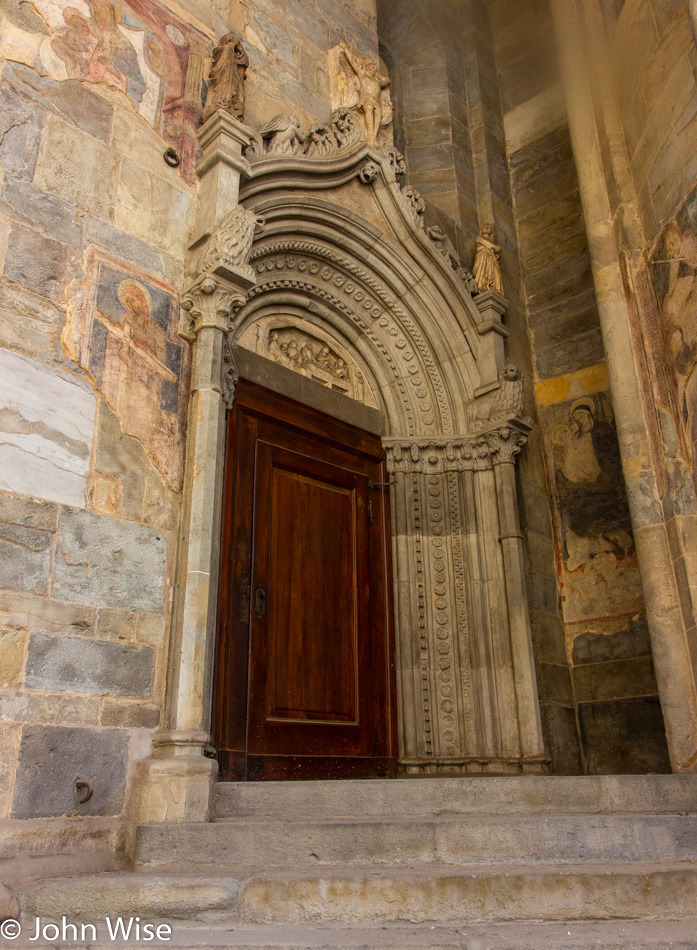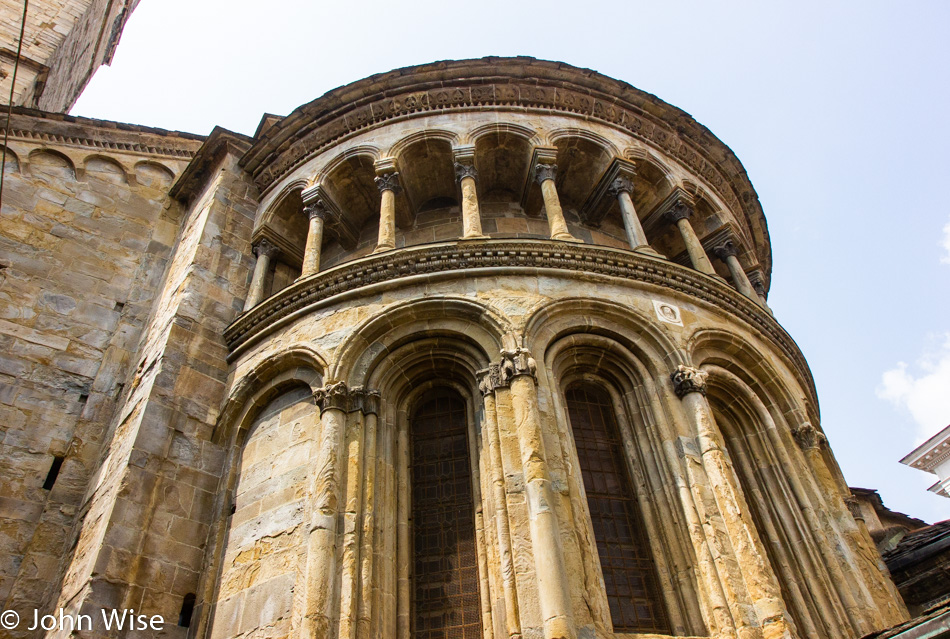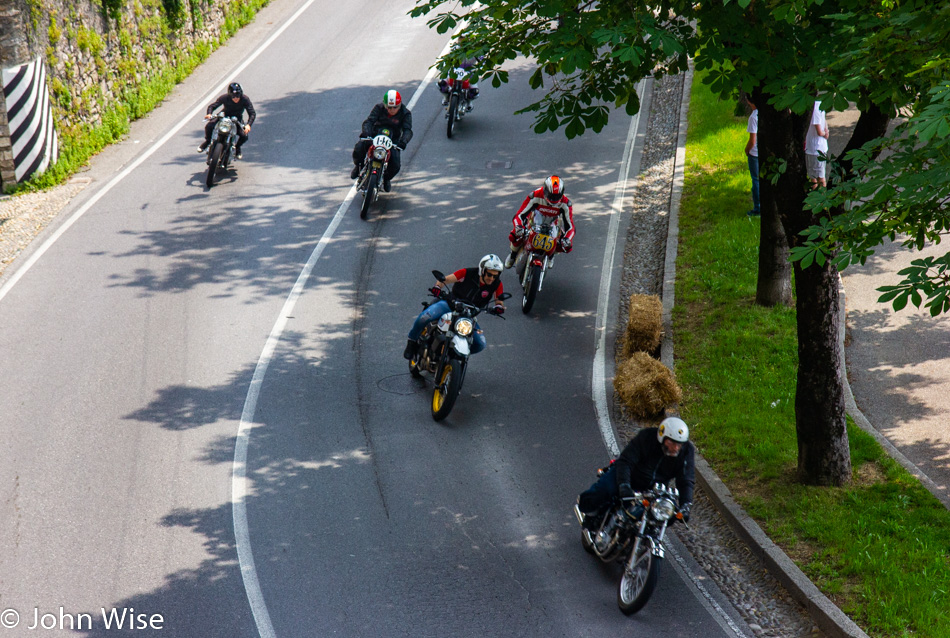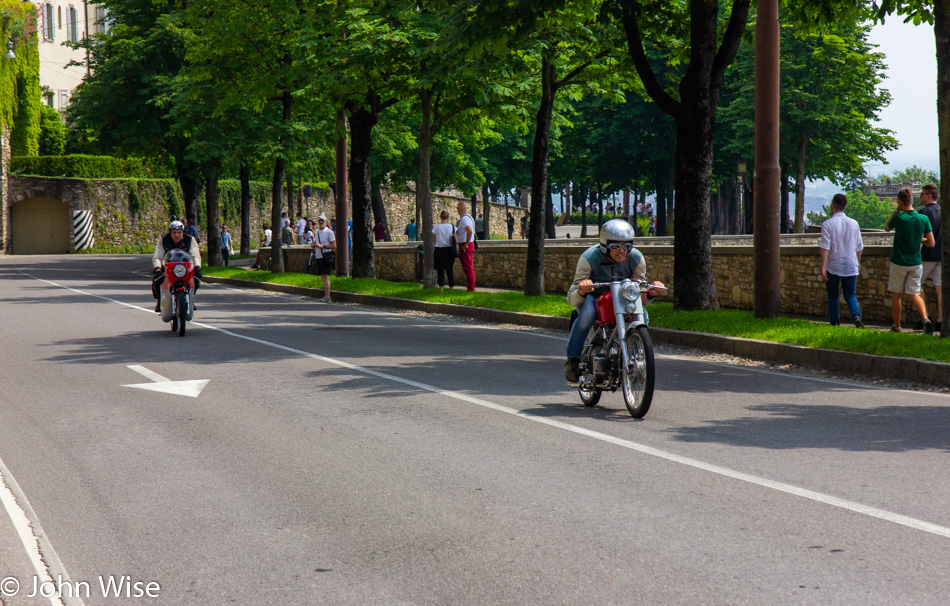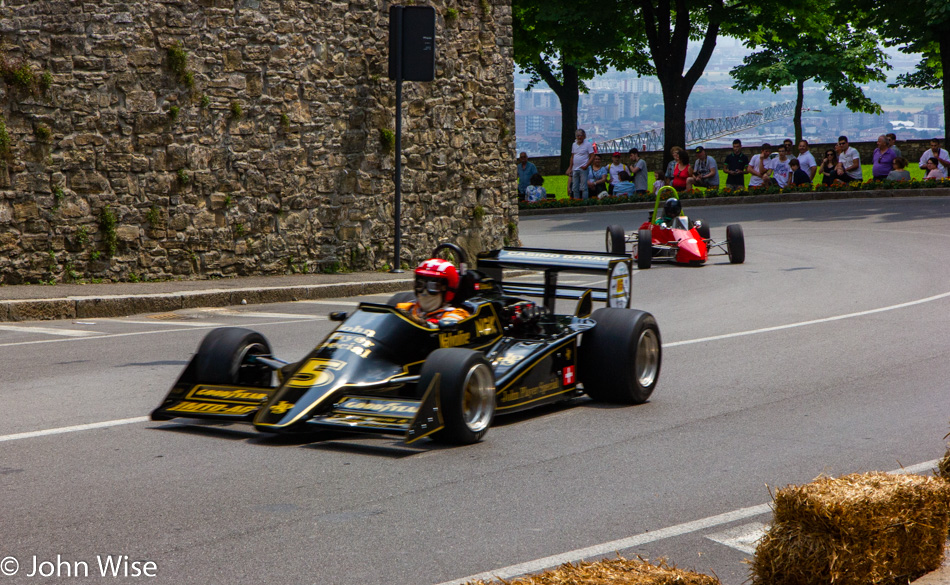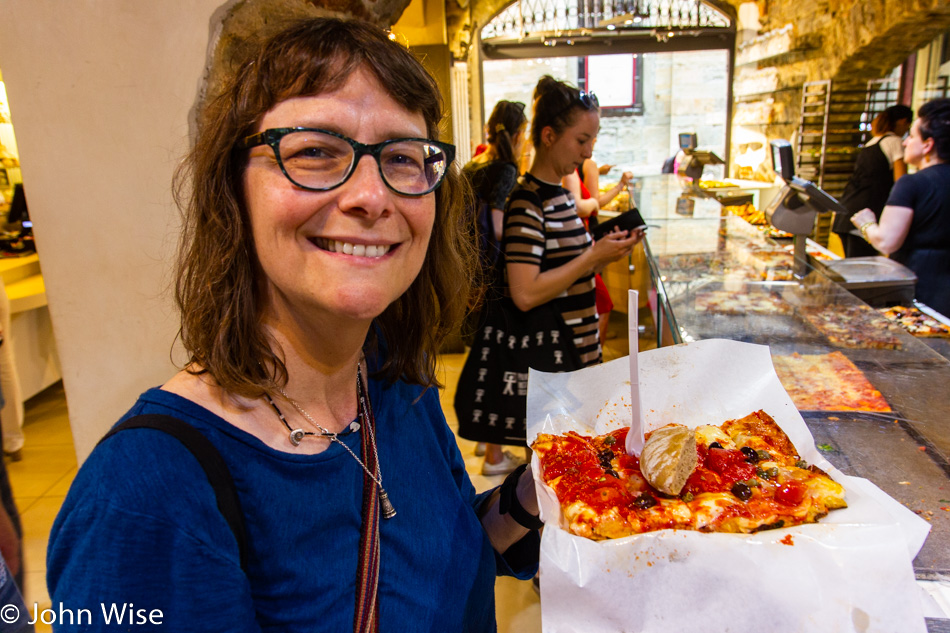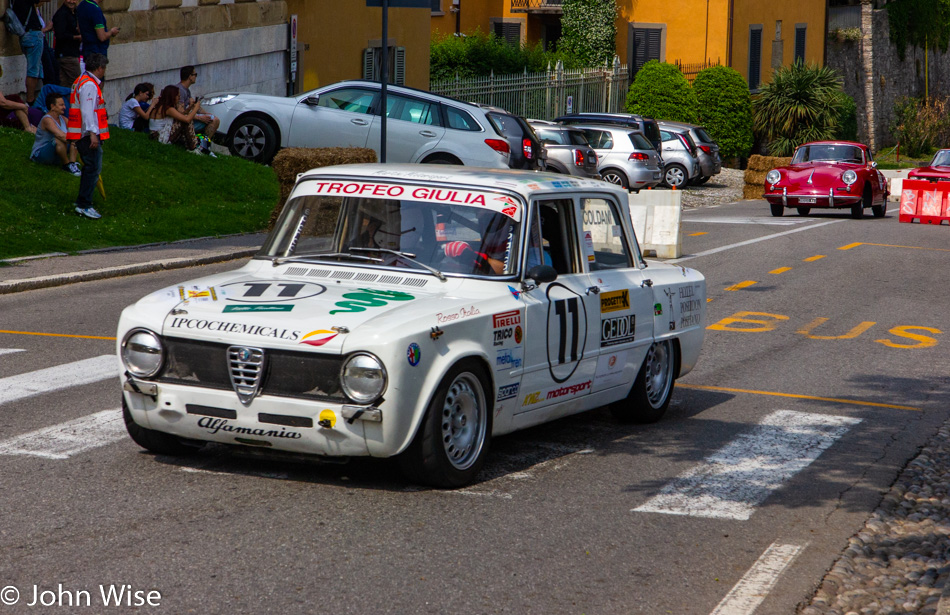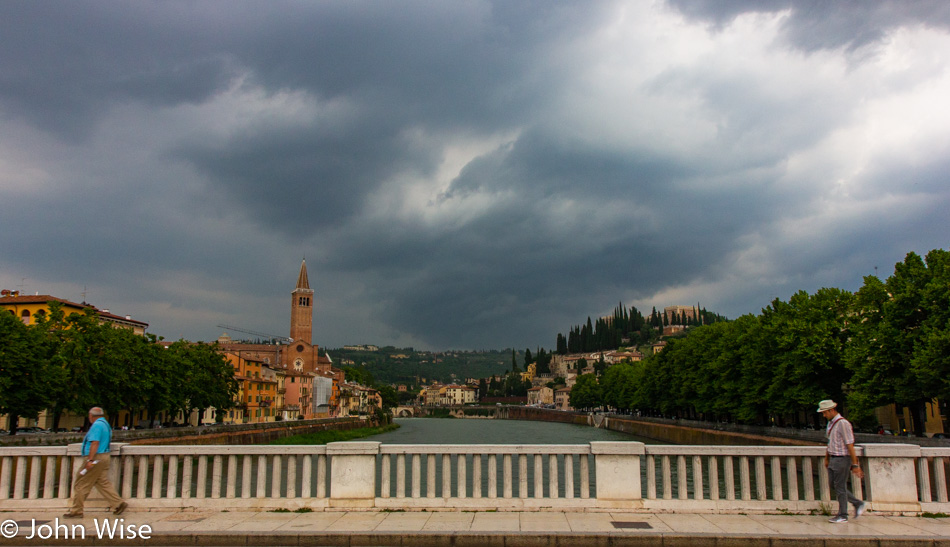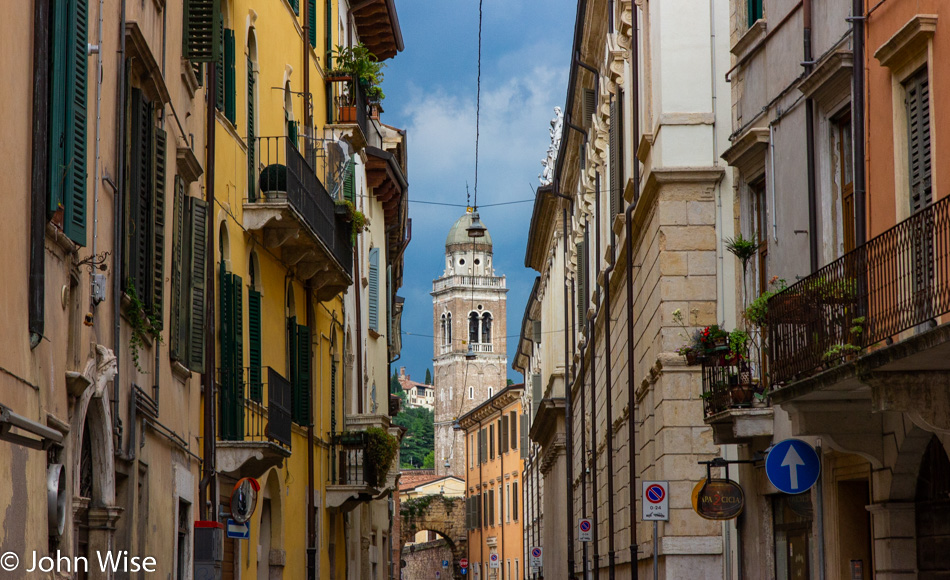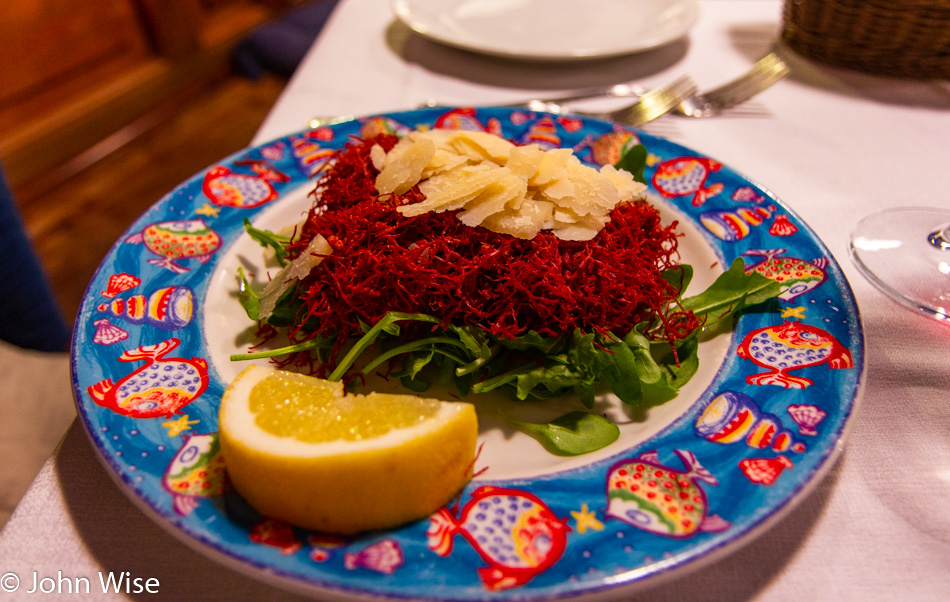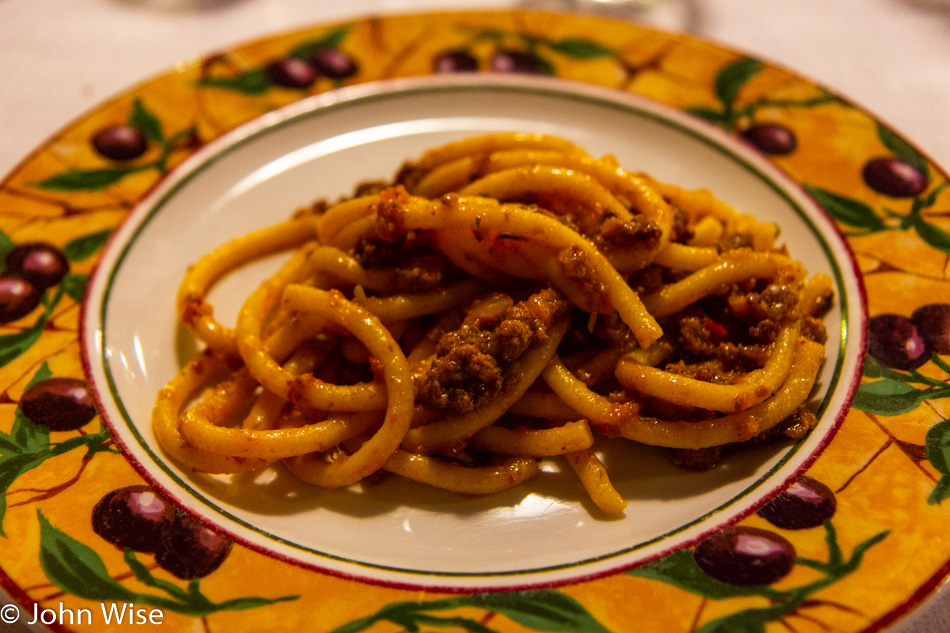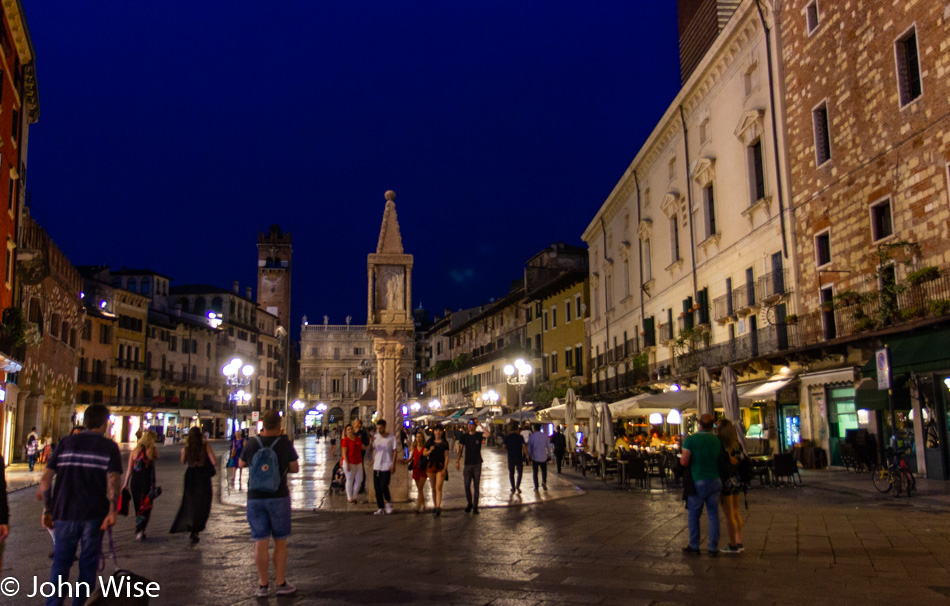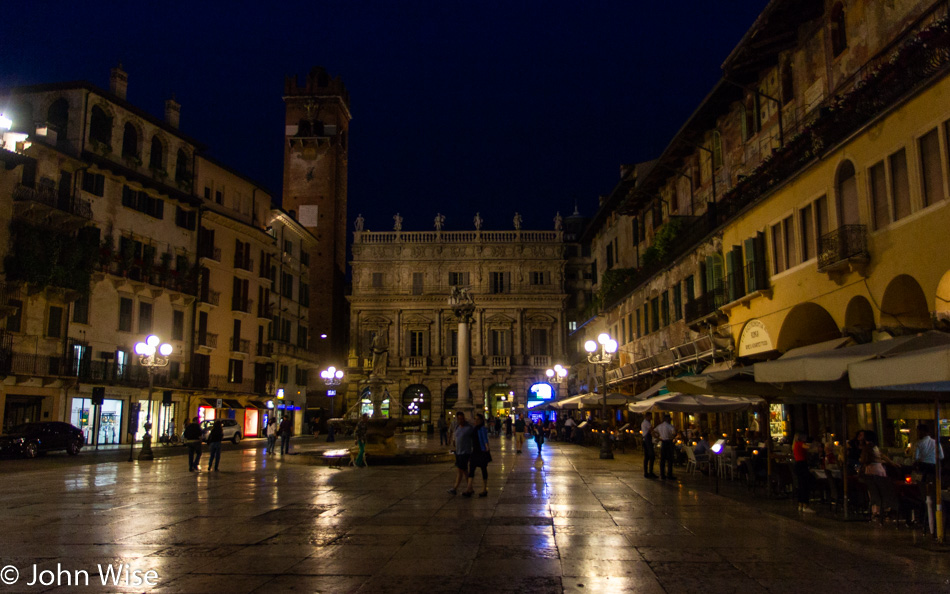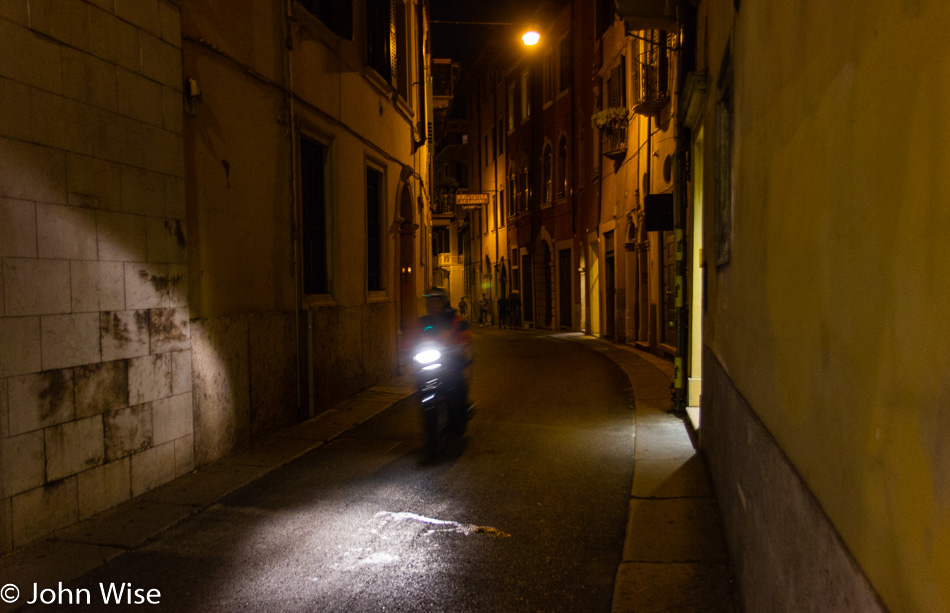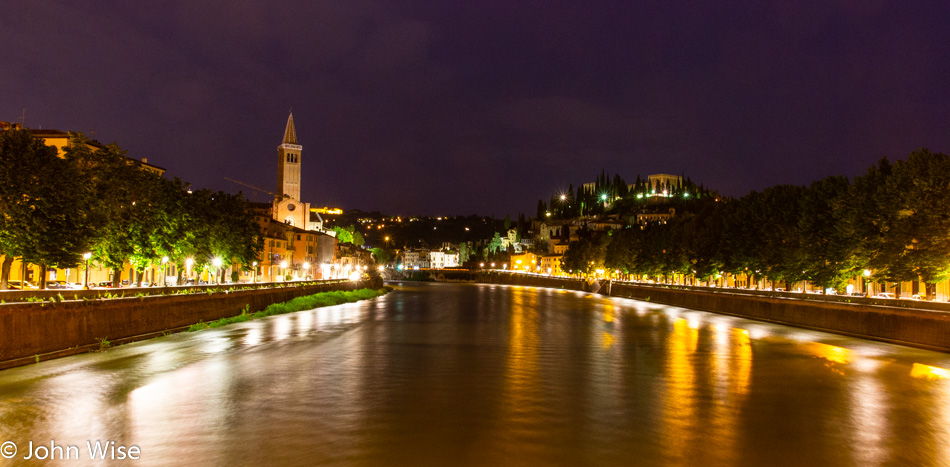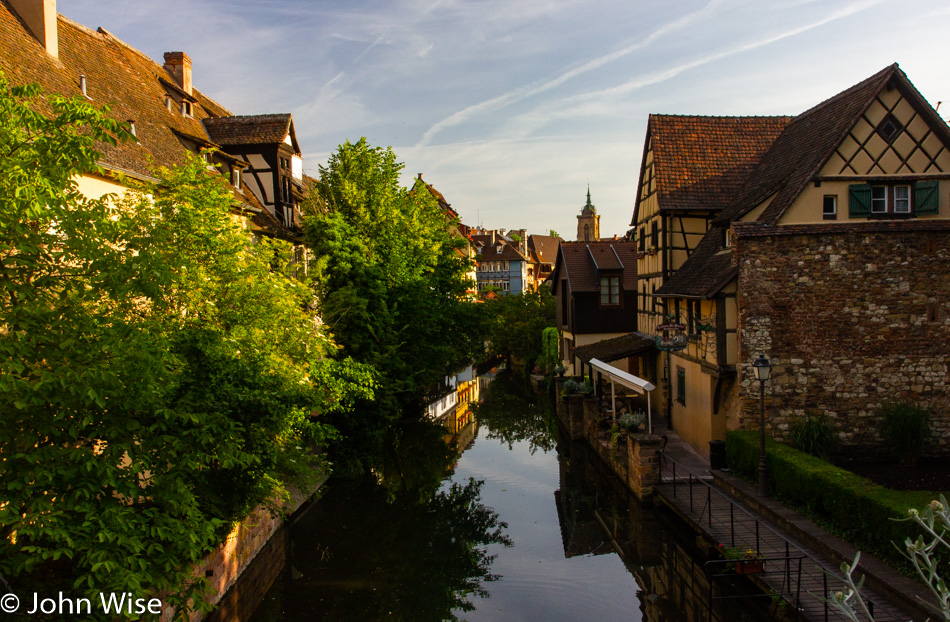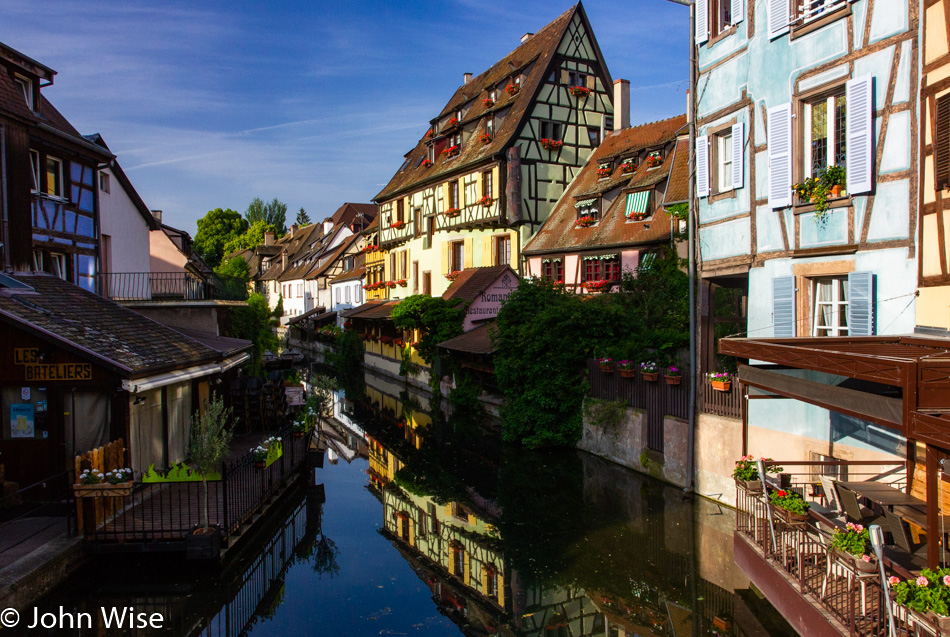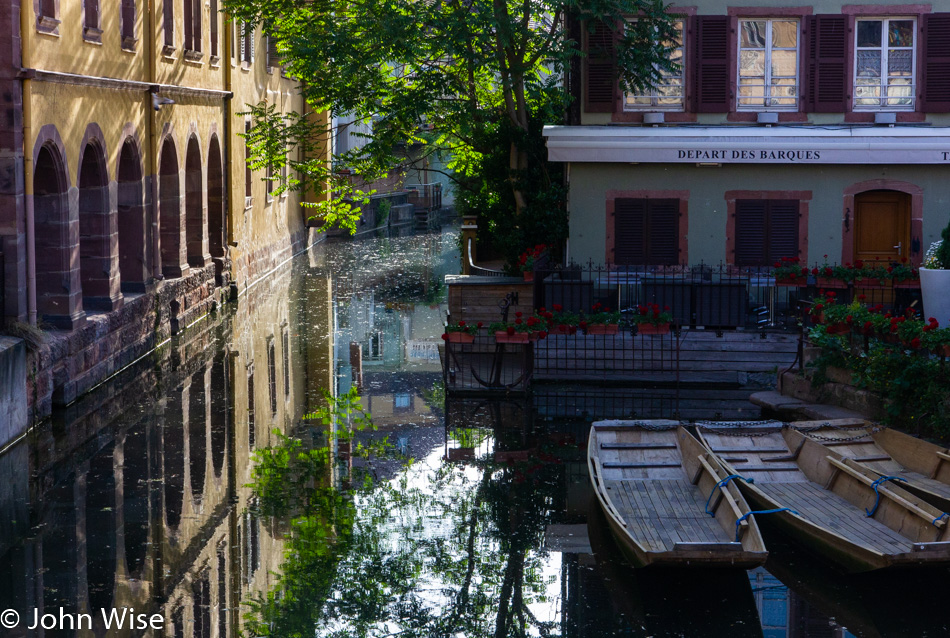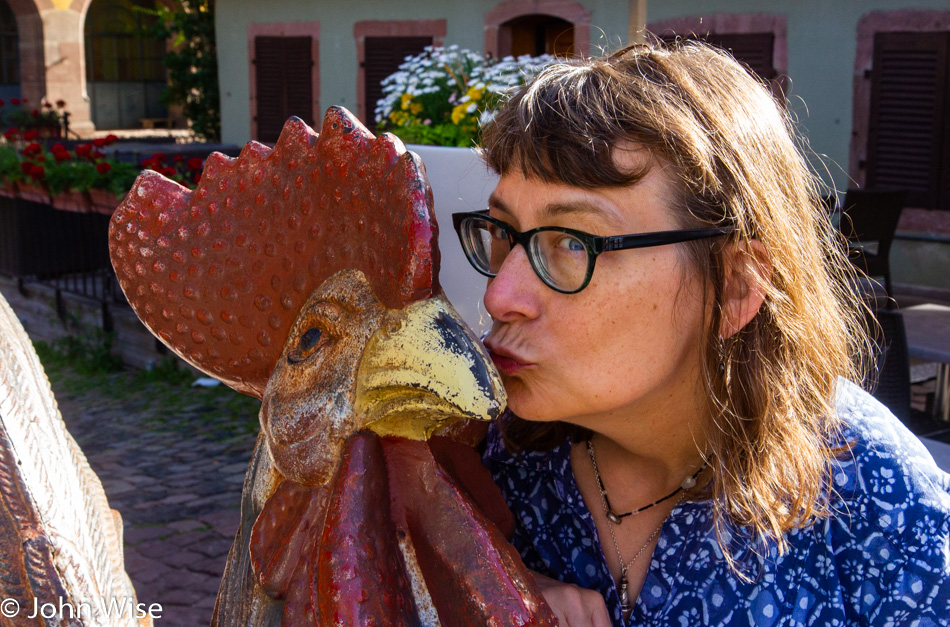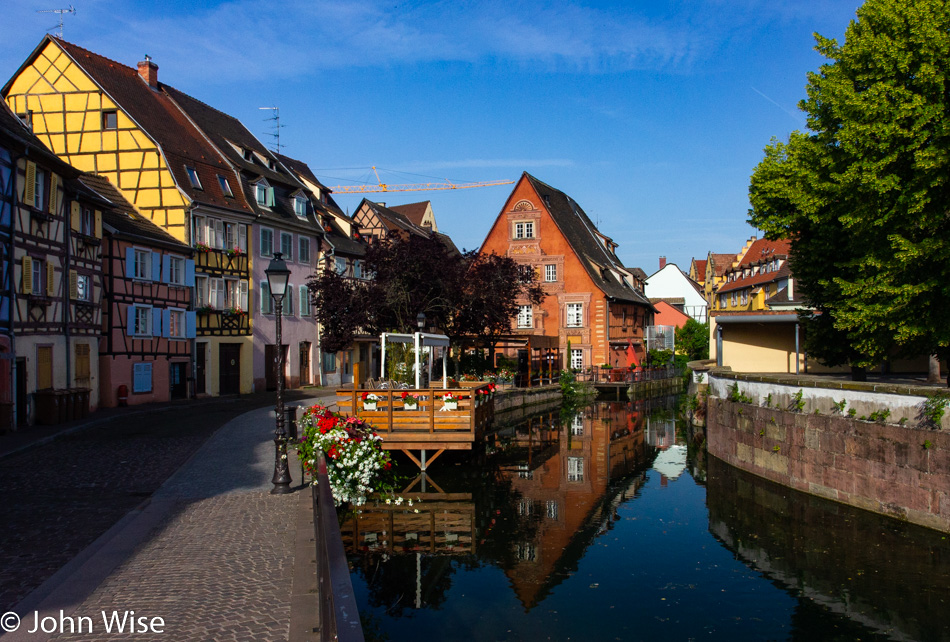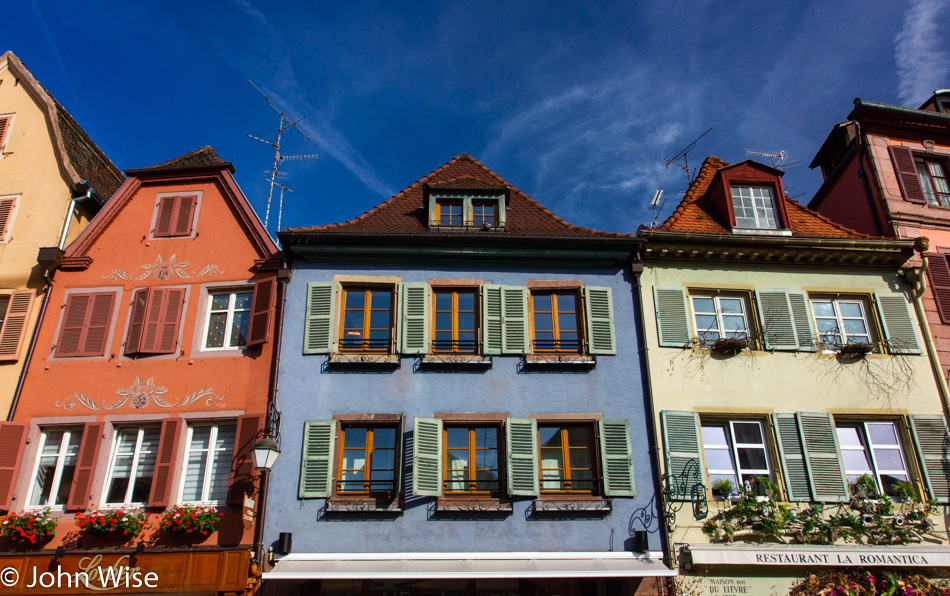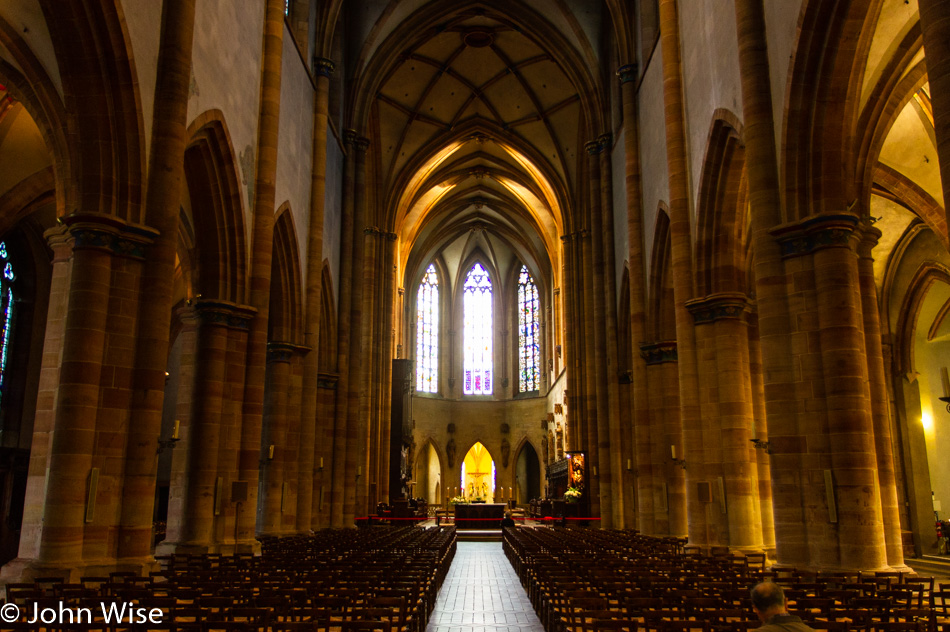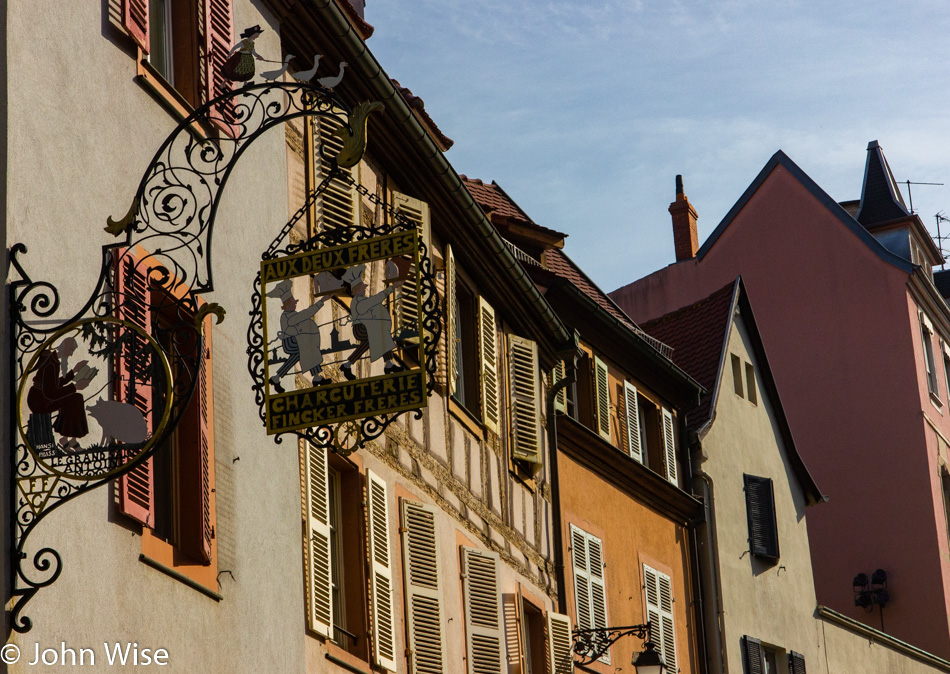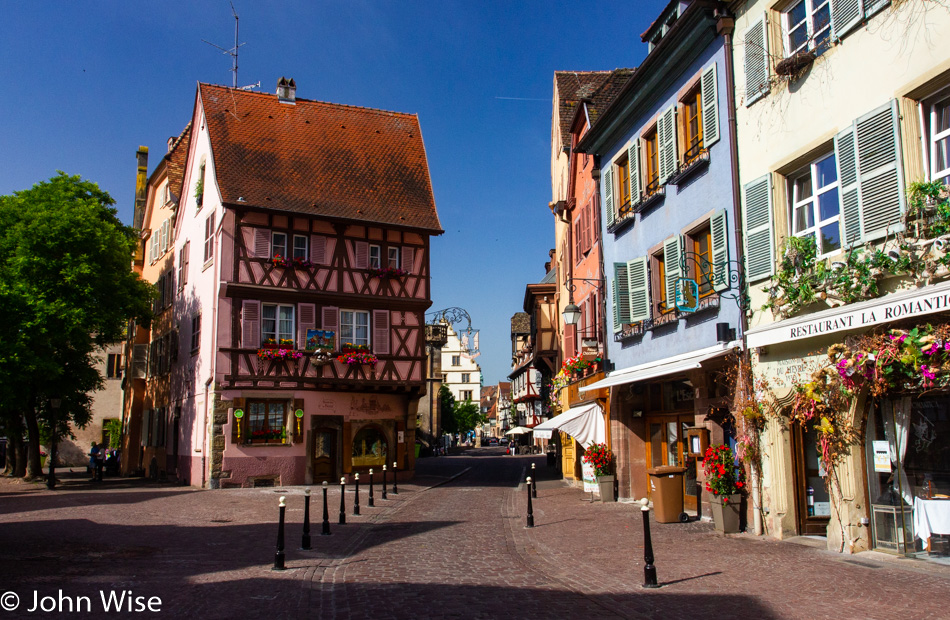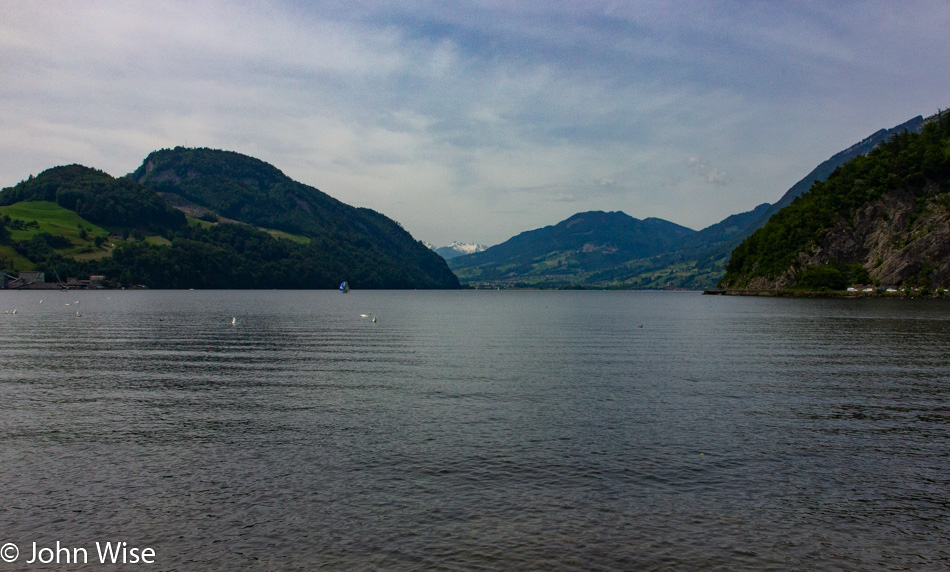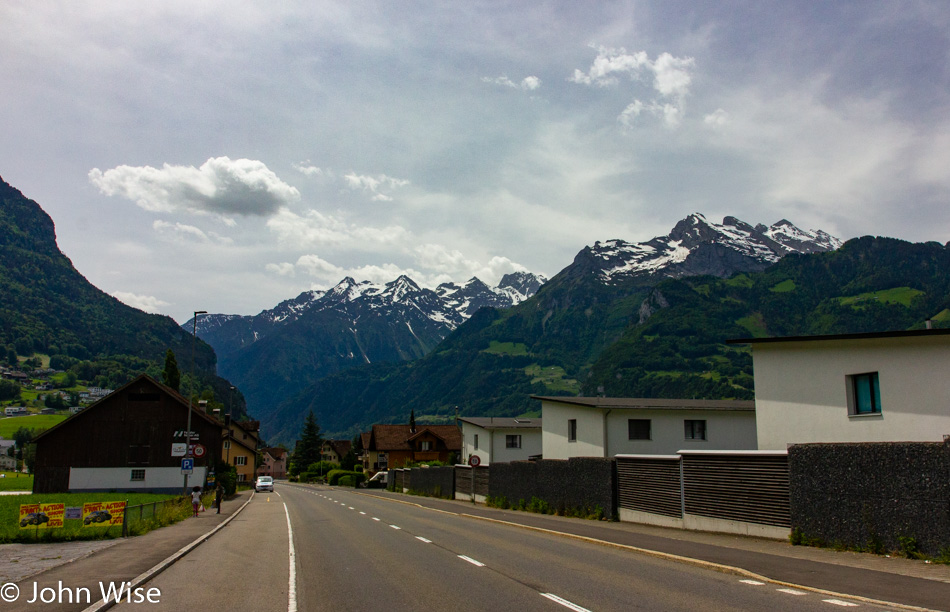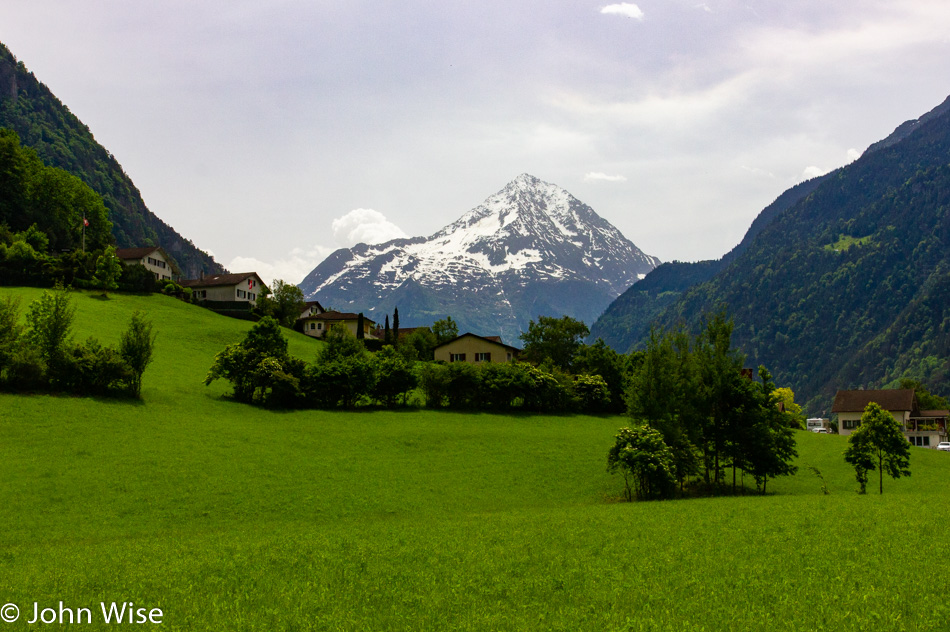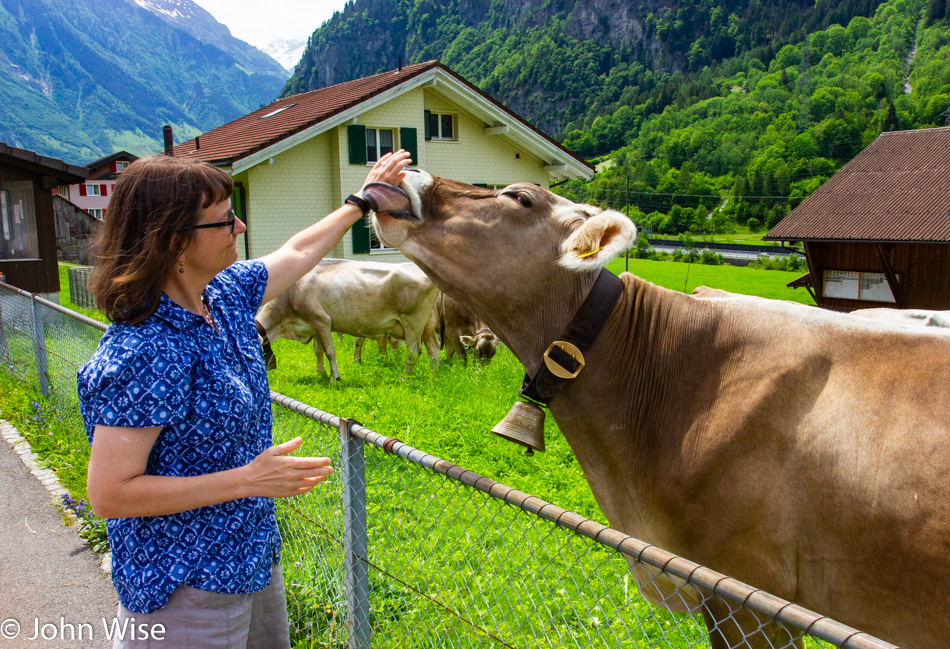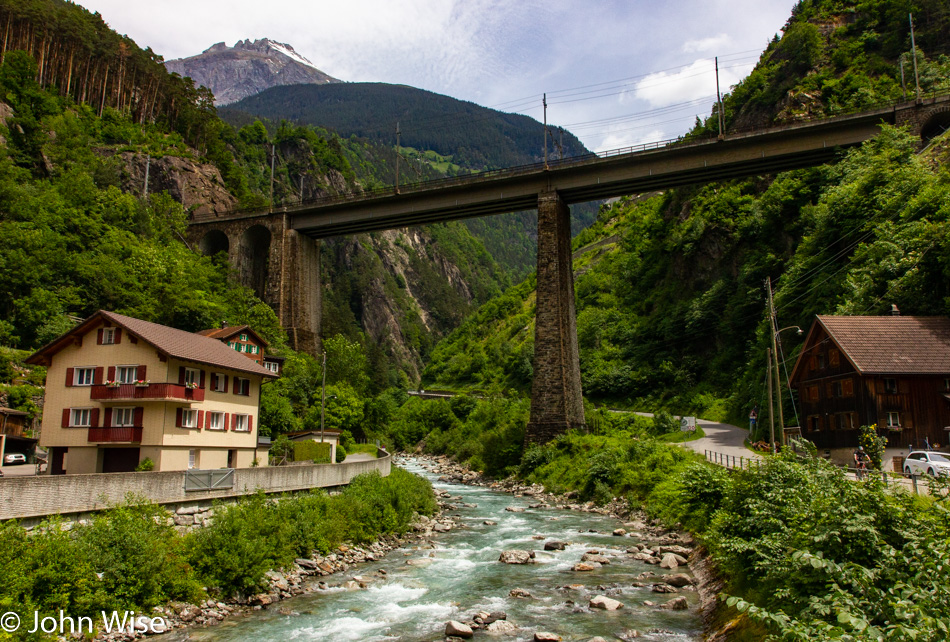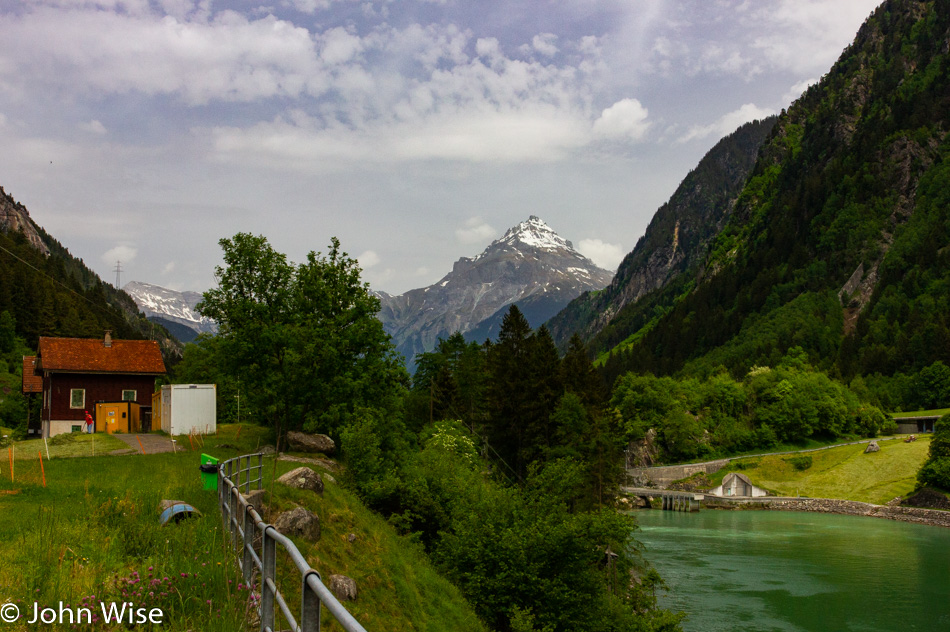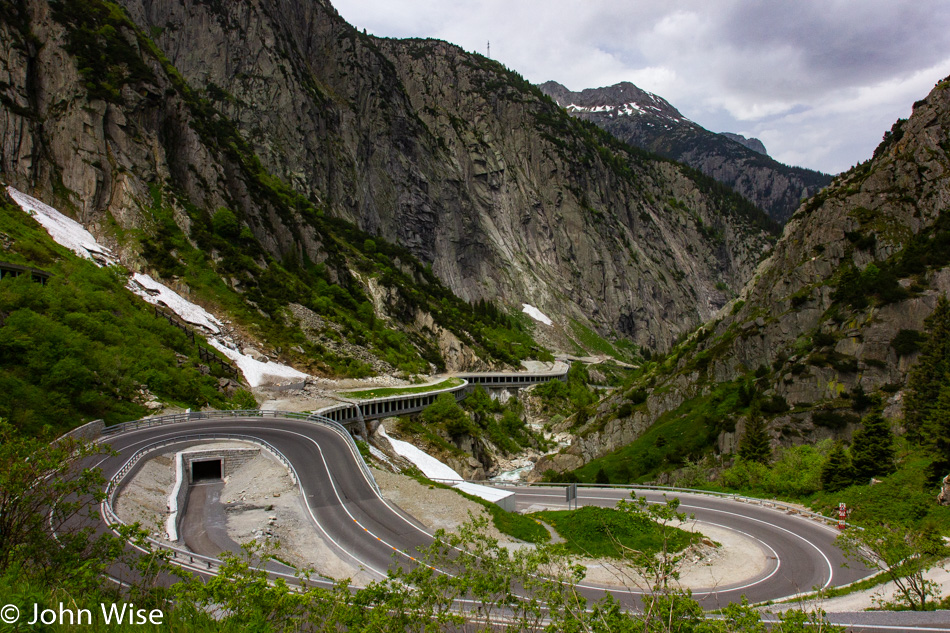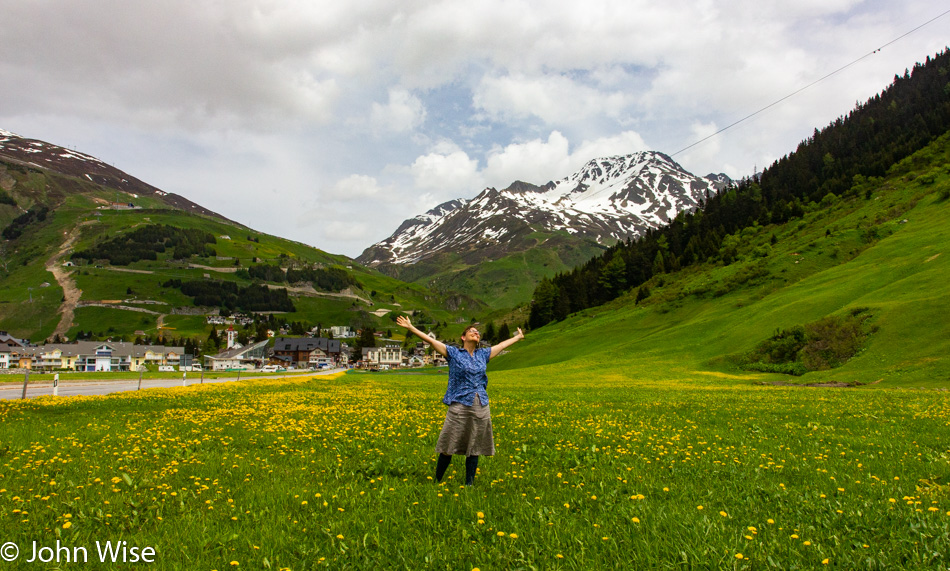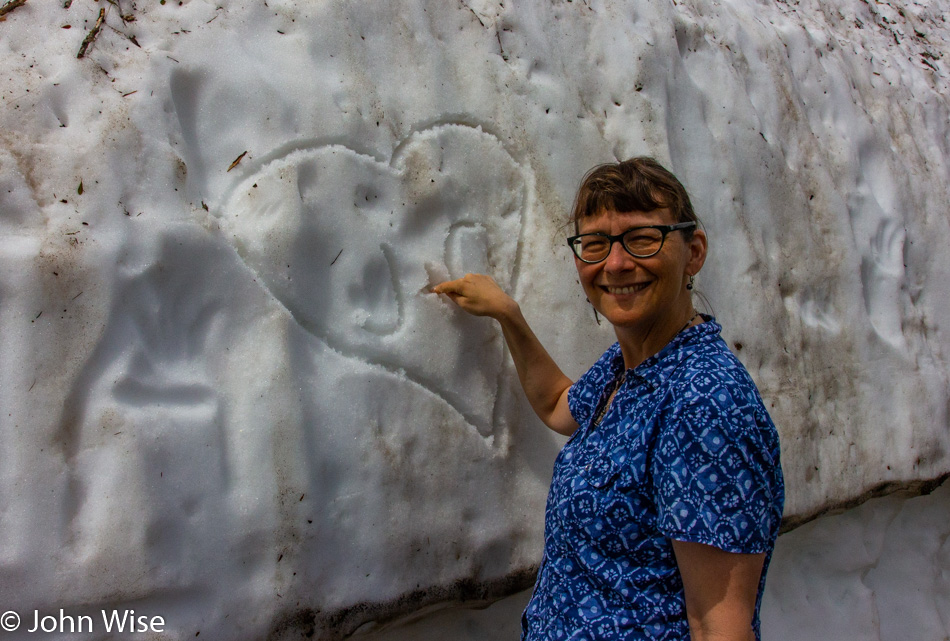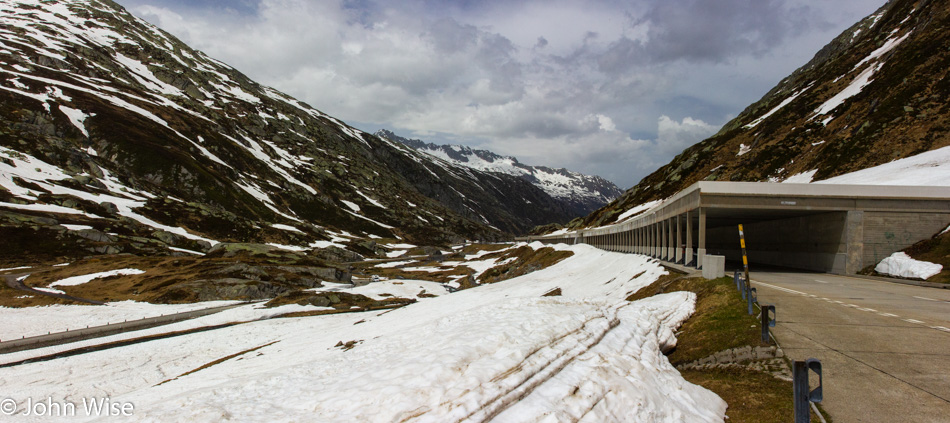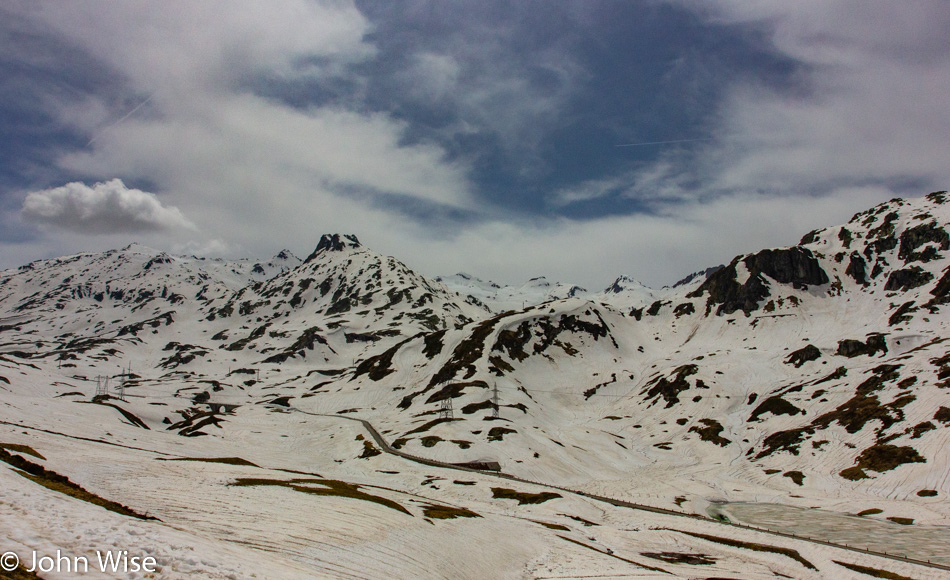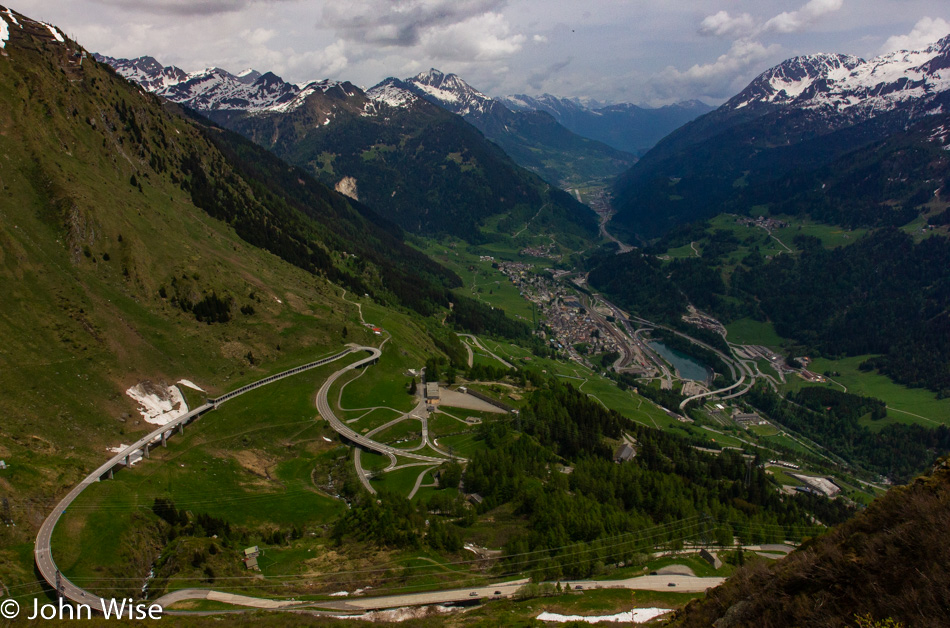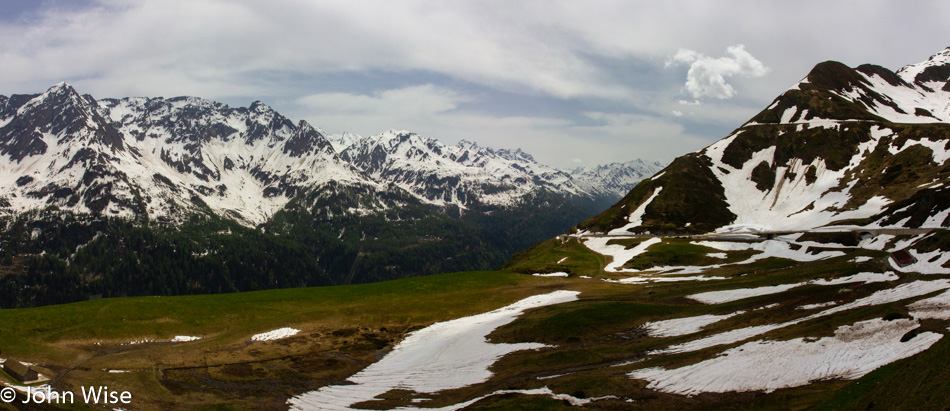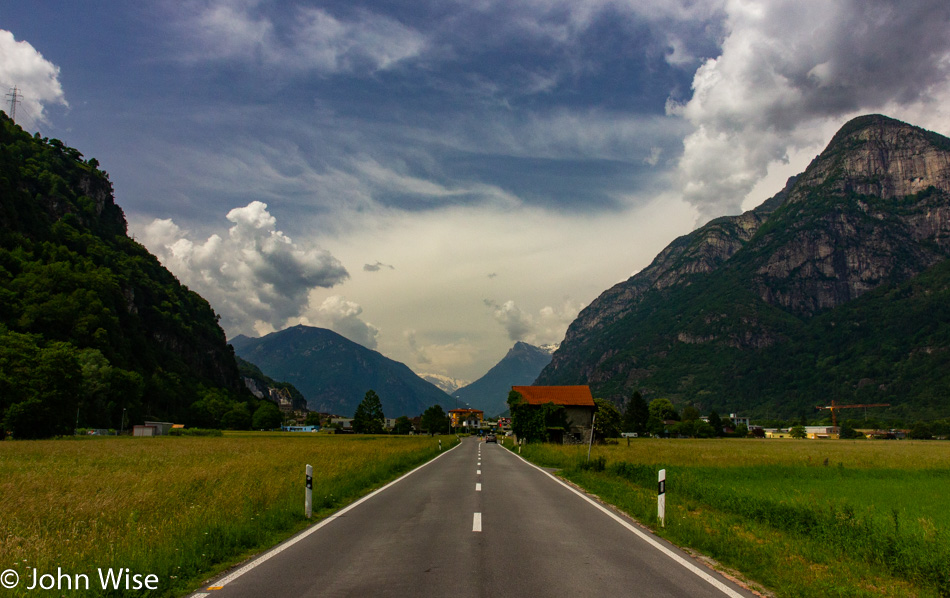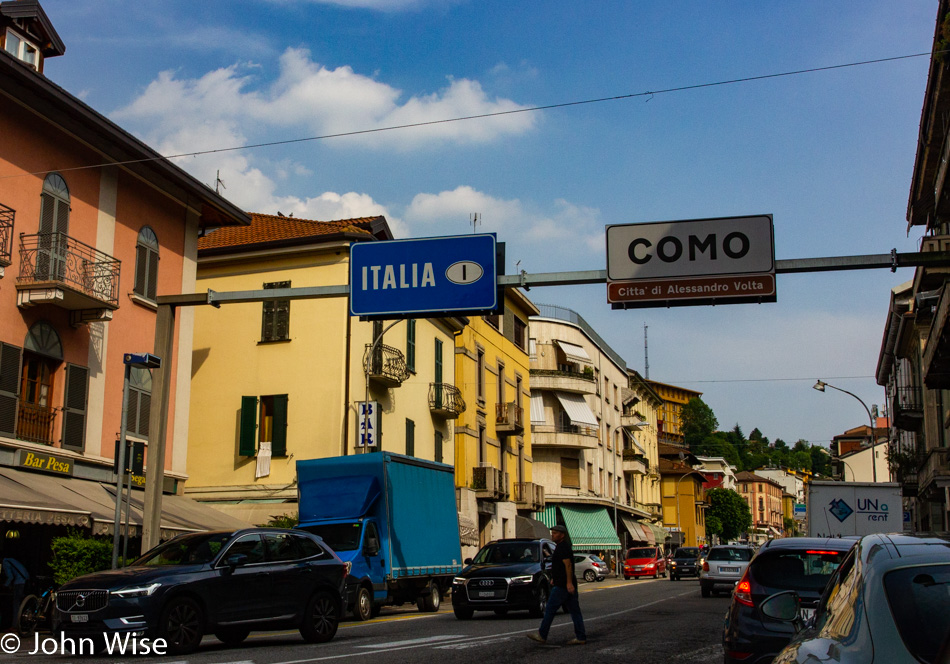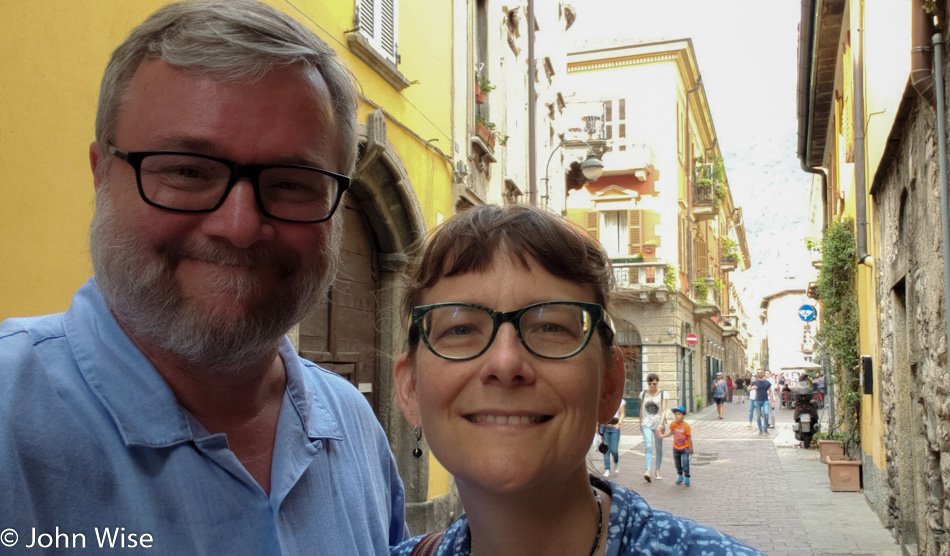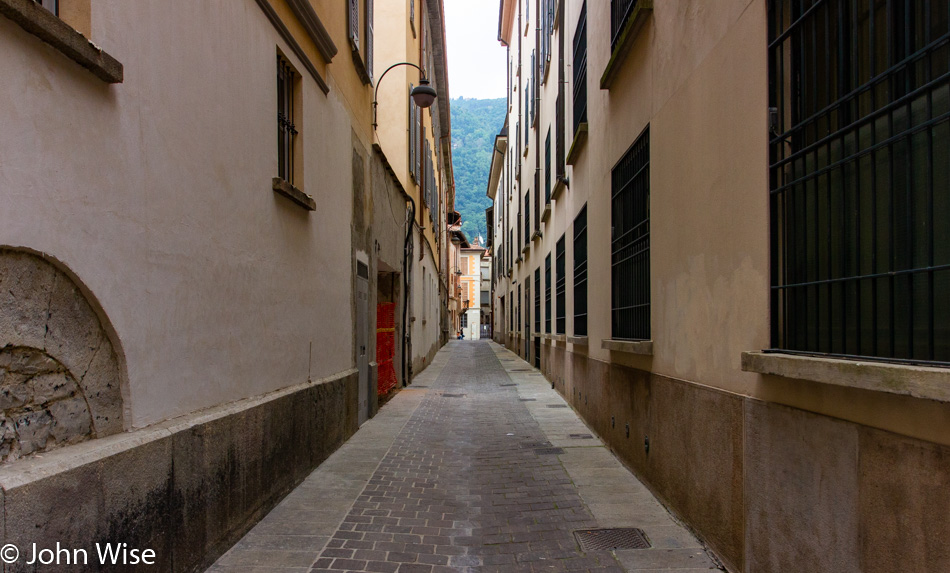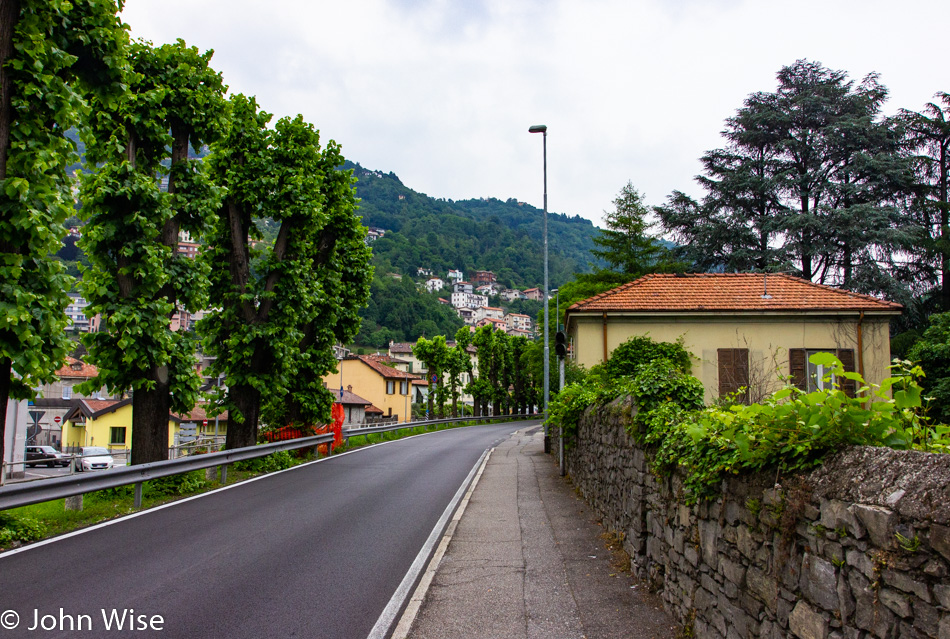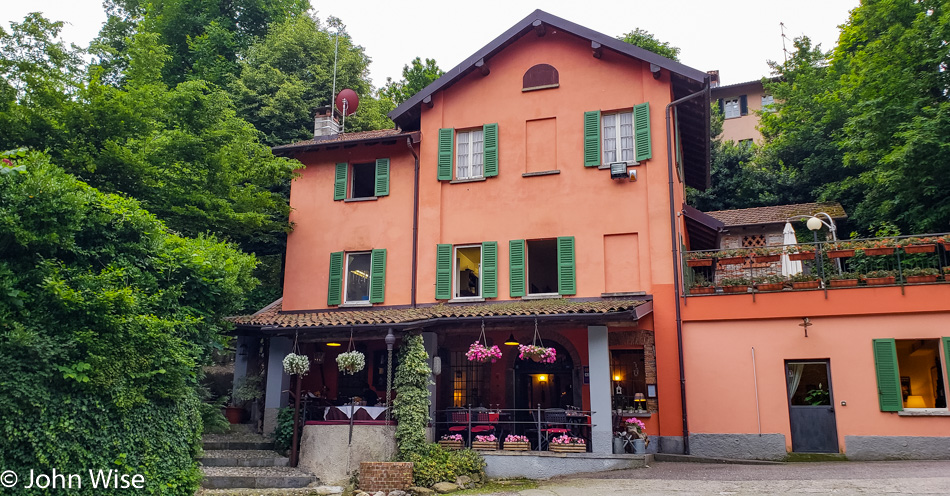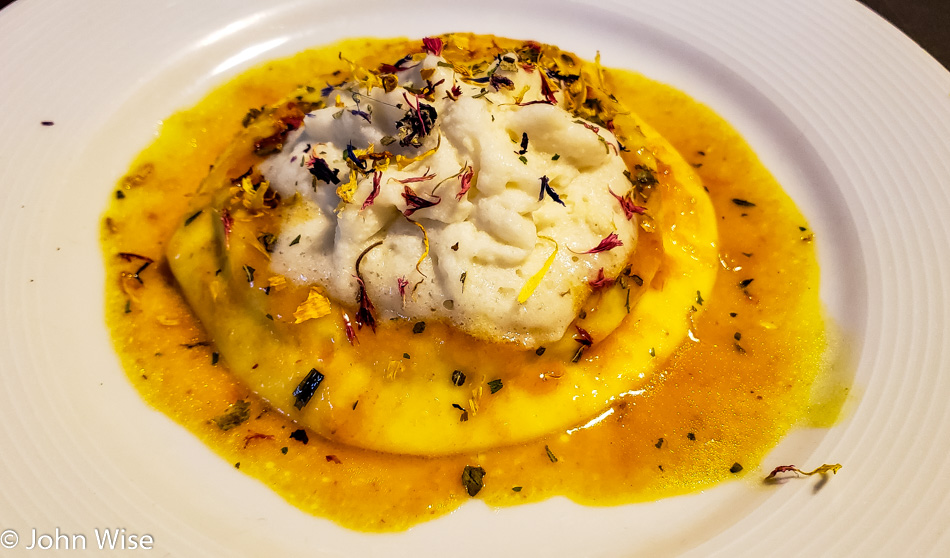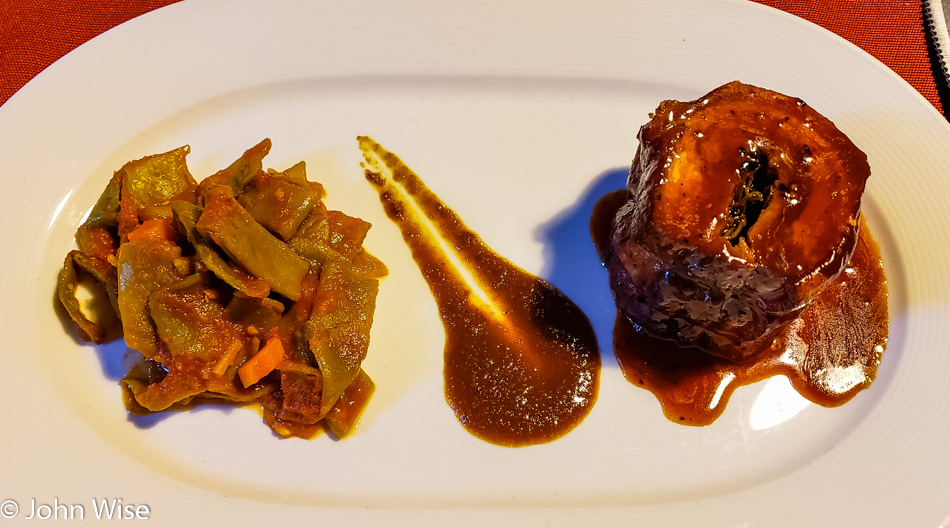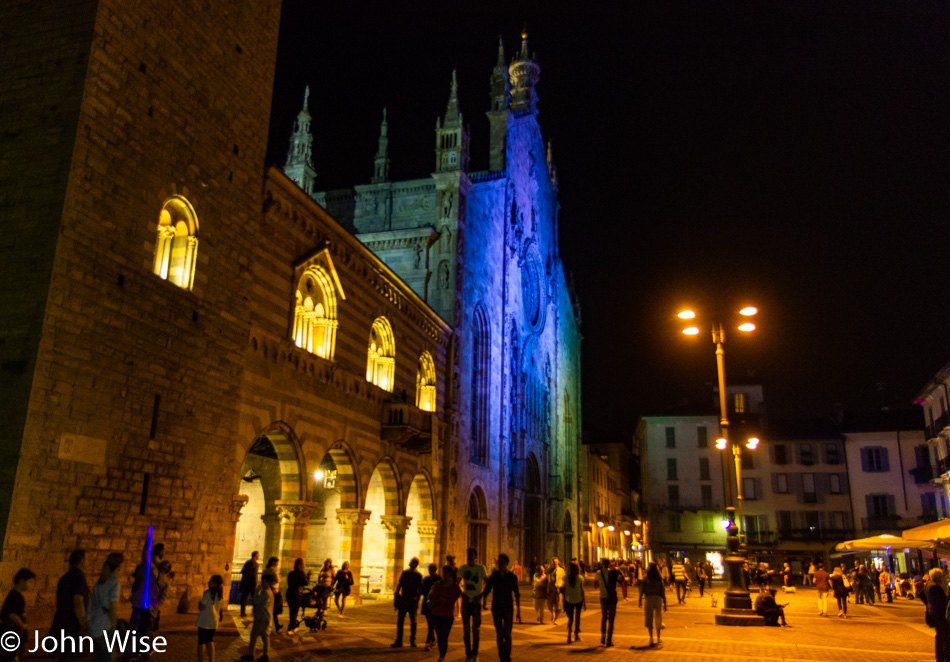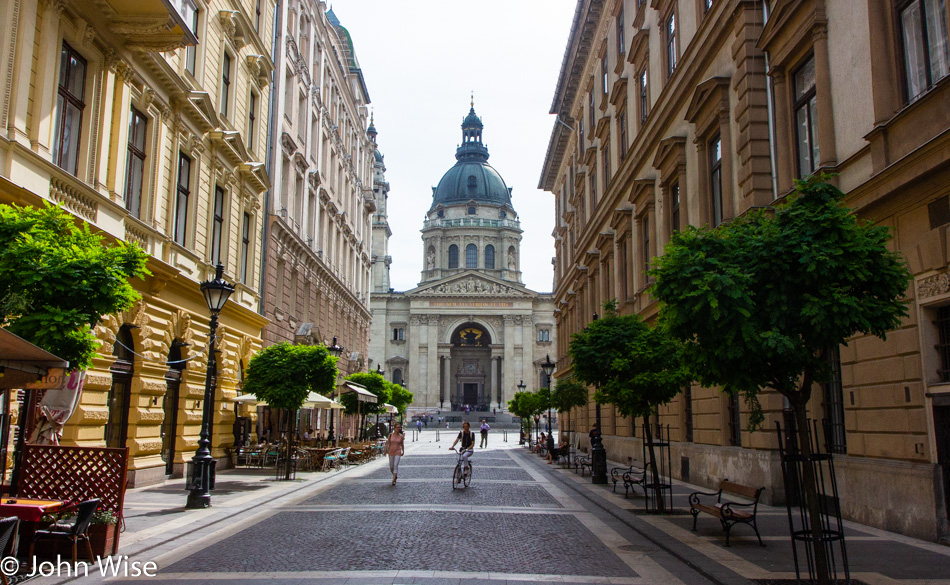
We have a list of sights we intend to visit while in Budapest, and initially, we are foregoing looking at it and are just venturing out to see what we stumble upon. Wouldn’t you know that a church would show up so quickly? Churches are easy targets, to be honest, as they are visual focal points easily seen from various vantage points across a city. Knowing that a large Gothic or Baroque building is just over there lets you assume that there are probably some other interesting things to see in its immediate vicinity. Believe it or not, we are not going into that church just yet.
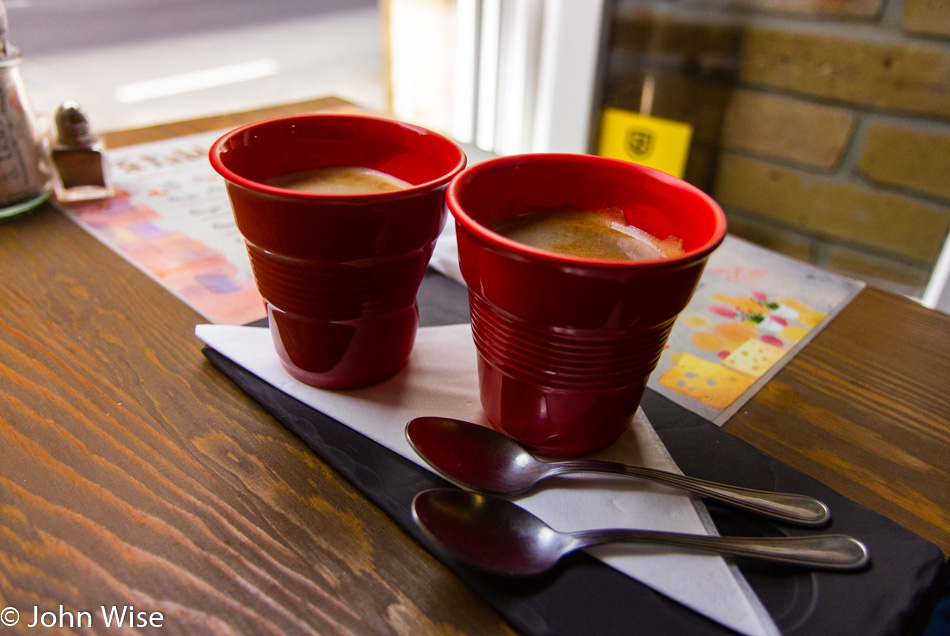
Breakfast was calling from “A Table” over on Arany János Utca, and we answered by grabbing a couple of americanos and a hot breakfast Hungarian style. The tip for this place proved worthwhile, though most of the visitors were speaking English. Next time we visit, we need to discover where the locals go. It seems that it’s mostly Americans who use TripAdvisor.
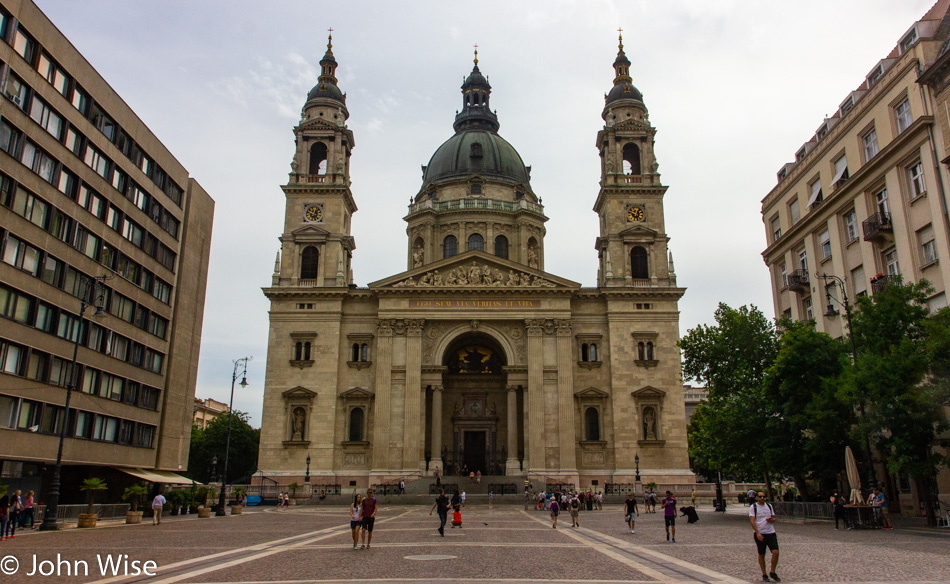
Back to that church, we held off on visiting. St. Stephen’s Basilica is named after King Stephen (Istvan in Hungarian), who lived between 975 and 1038 and was the first king of Hungary. It’s a relatively new building, having replaced a theater that stood on the site back in the 18th century. The consecration of St. Stephen’s was in 1905. After another photo, I’ll take you into the church, but pay special attention to that center dome, as there is a narrow circular stairway that is well worth your investment to crawl up. But first, I give you the following.
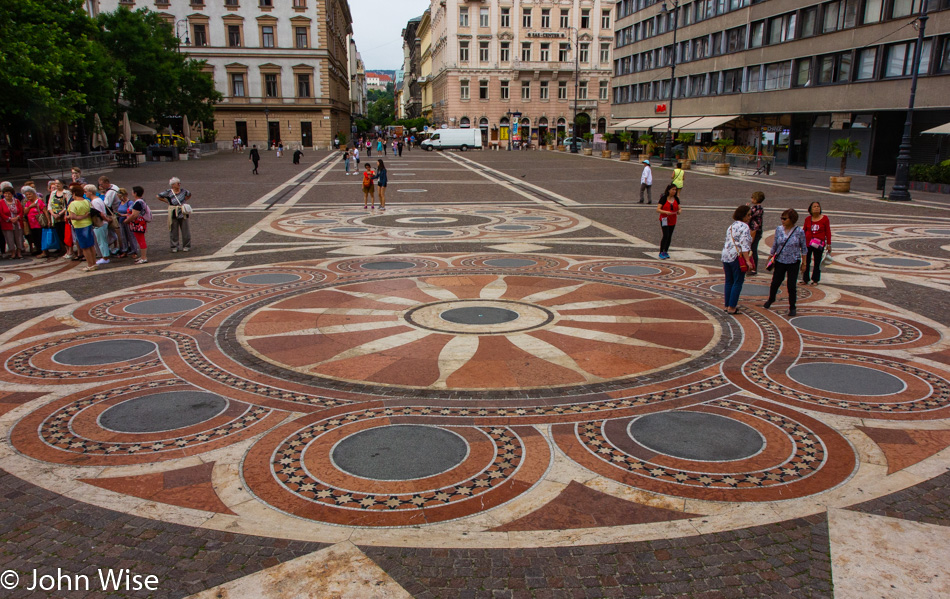
The stonework directly in front of the church could easily be overlooked as you gawk at the imposing building in front of you and race to the door to start learning of the history and opulence contained within, but you should stop to admire this beautiful piece of art. Anywhere else, this would be a centerpiece within a lobby or otherwise drab city hall; here in Budapest, it is but one tiny part of a 360-degree view that is embedded with details out of a mandala.
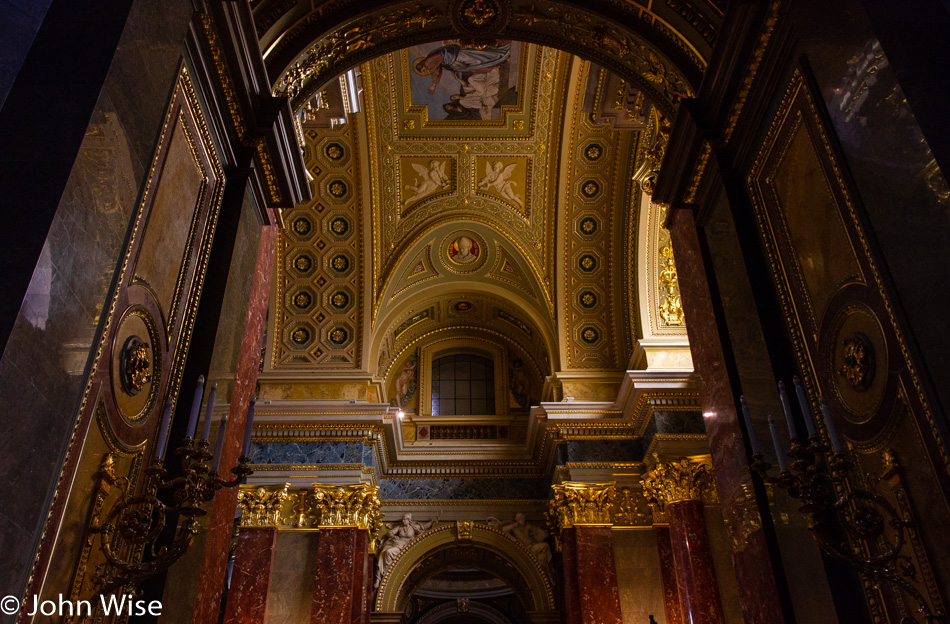
These next 14 images are going to go into some of the details that caught my eye. I shot a lot more than this, but most are of poor quality, and while there are more than a few more that I consider worthy, this is already going to be too many images for some readers. Then again, I’m not writing this blog for visitors; it is here for the sole purpose of serving my wife and me. For those of you who might endure my blathering on and on endlessly about my interpretation of things or are simply happy to see what a person can accomplish on a single day in Budapest (though we have roughly three days here in the city), I invite you to indulge with me, and maybe you too can delight in the extraordinary lines, arches, decorations, columns, and rich, warm light this church bathes in.
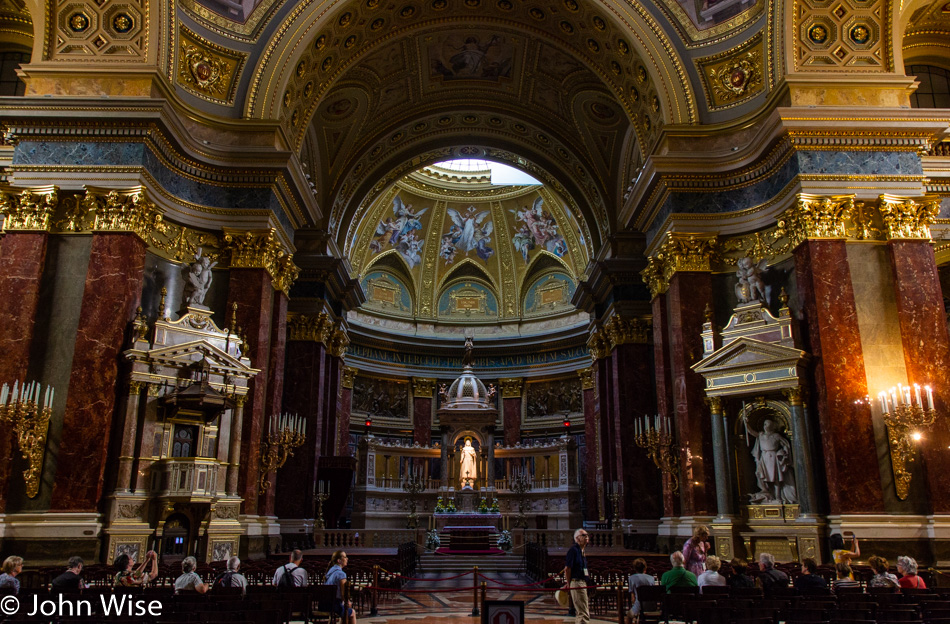
I present the altar. Just one of the columns on the left or right of the altar would turn one of those local fairly plain churches into a destination that those of the Catholic faith would make a pilgrimage to. So I’m projecting here, and maybe they wouldn’t, but obviously, it would draw Caroline and me in. I’d like to note that Caroline has a preference for Gothic churches and finds some of the gaudier Baroque churches to be too flamboyant and ostentatious. As for me, I love them all and would love nothing more than to visit all the major cathedrals and basilicas of Europe, South and North America, and anywhere else people have invested hundreds of years to build such monuments.
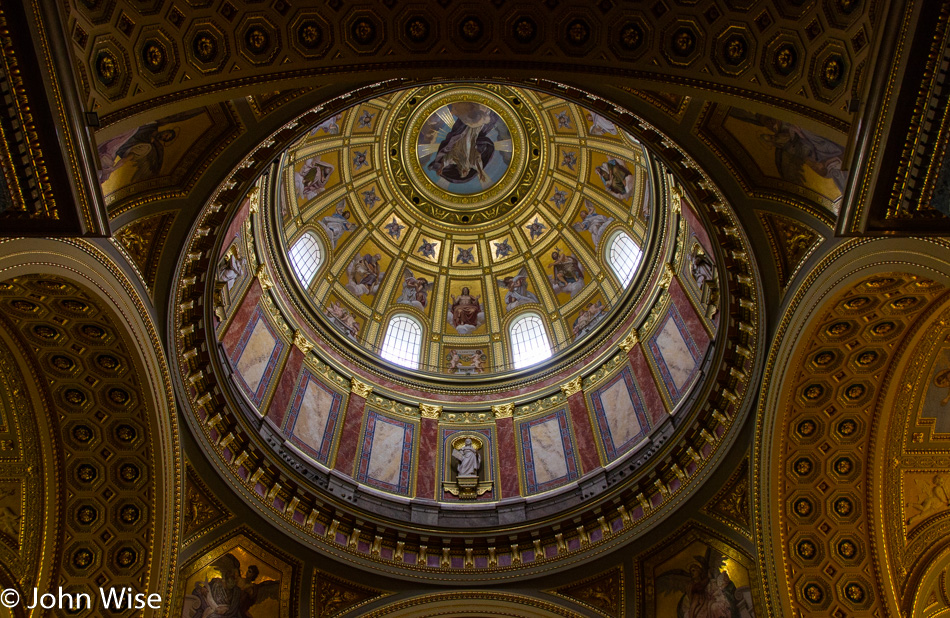
This is the main dome over the nave and not your only view of it.

The dark warmth and glow here are magnified by the contrast of dark woods and marble embellished with gold and lines that pull light and distribute shadows in the most seductive ways. If I had to guess, I might venture to think that the clergy doesn’t want visitors to associate seductiveness with the church but rather solemn reverence for God while visiting. Maybe they could also be happy knowing that visitors find such pleasure in these houses of worship.
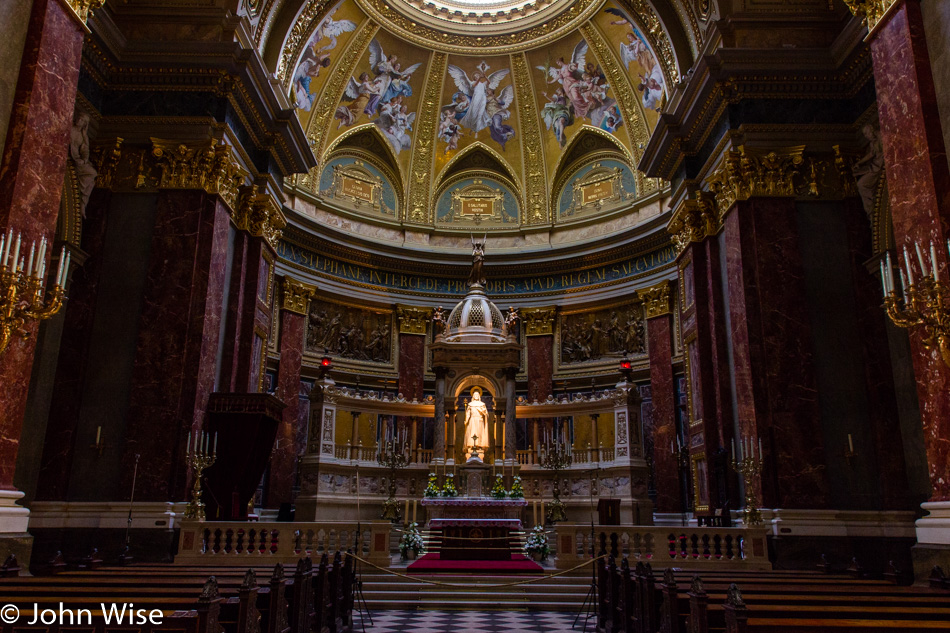
A closer look at the altar and the world within the larger world within the universal one we all inhabit can be seen represented here. The metaphor of one looking out over another who looks over the many is a poetic notion that, in a romantic view under the best of circumstances, seems too oft corrupted by our base human nature wanting self-aggrandizement. This embracing of power seizes the alpha animal, allowing his position as an apex predator to initially, with benevolence, guide a people. The flocking or pack mentality of his followers is easily abused when the senses of the leader are drawn into the luxury that accompanies the opulence of privilege. When the wealth of knowledge and wisdom begins to replace the narrow-mindedness of the adolescent ego, we start to ascend to greater things and higher potential. Sadly, this cannot be fully understood by the young, and even among those who are becoming older, many will fail to find the truth of conviction and purpose while they can still enjoy its magnificence.
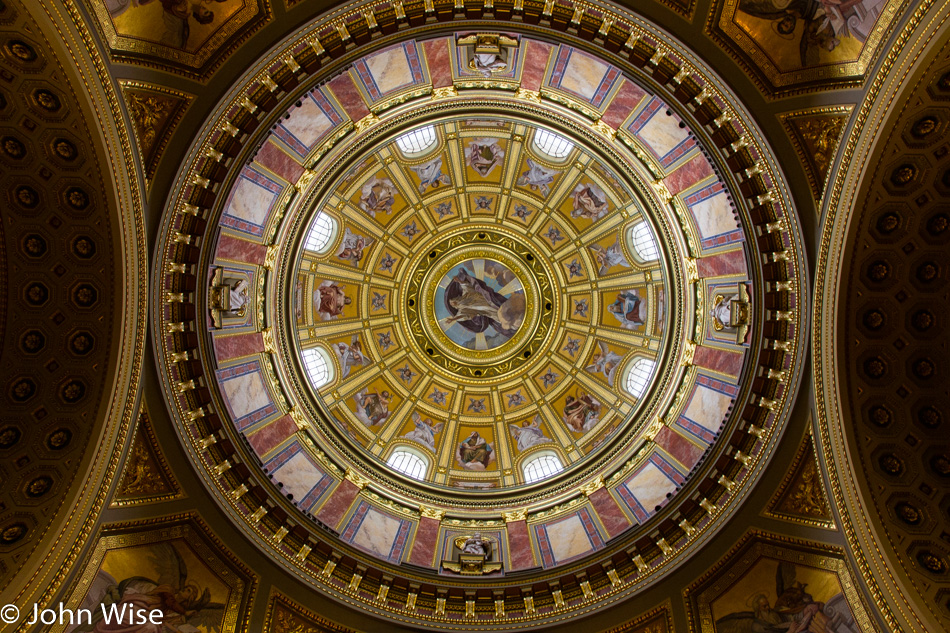
This idea of looking up and to the heavens for our source of life and guiding light, while relatively simple, is a complex interpretation of looking to the sky for the sun that grows our food and the clouds that deliver freshwater to grow our crops. We as a species (except for us atheists) look to God to grow us spiritually and imbue us with life while nourishing our souls on our journey of transformation from nothing to life, to death, to rebirth. The genius of early humanity to translate the cycle of life into one of the spiritual, intellectual processes is brilliant in its own right, though hypocrisy has tainted the potential of its message to engage me at an appreciable level beyond my recognition of its mechanical functionality as a primitive control engine to breed complacency and blind faith.
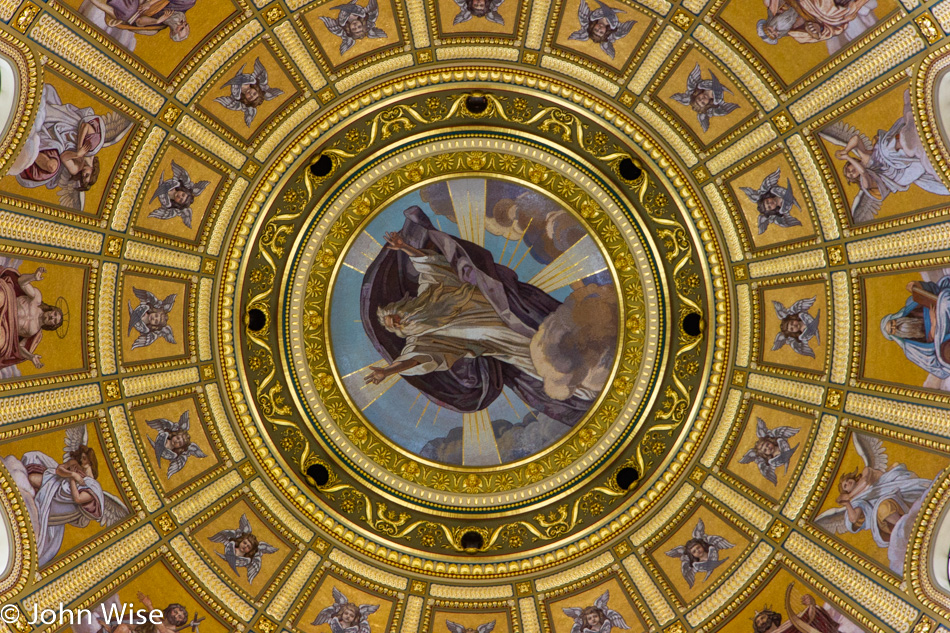
Still, we must look up and within. Not just into the heavens and a godlike figure, we must also look within and find the greatness of what we postulate in the essence of god within ourselves. Our philosophers for the past couple of hundred years have been trying to show us the way to self-fulfillment, but in times of uncertainty, we look to the strong man instead of the strength we can find within; this is the work of fear or through the eyes of the church maybe this is the root of evil.

And he said unto them, “Let there be music,” and the organ pumped out the jams. The language of music is not the tyranny of thought and words; it is the elixir that stirs the body into movement and the mind into the trance of ecstasy. Johann Sebastian Bach was lucky enough and alive at a time that allowed him to celebrate bringing Europeans further into the Enlightenment by unifying their souls in songs of celebration, loss, mourning, and creation. To hear the organ resonate with the choir, bringing the angelic voice of innocence to the bellowing of the Earth being tamed by humanity, is maybe a kind of early mind control that allowed the people of this earlier age to stand before their own naked potential.
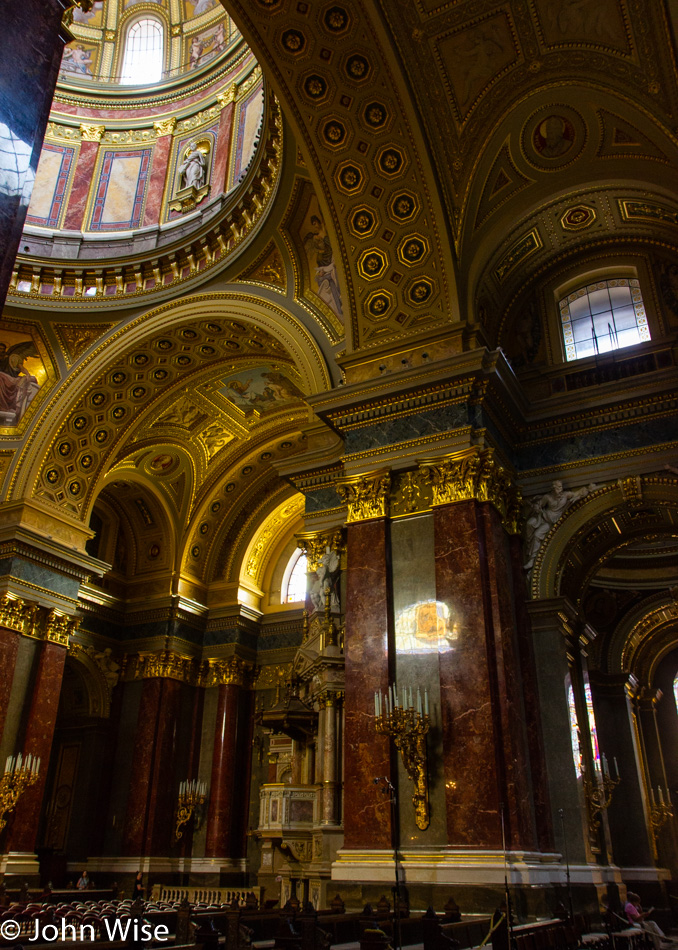
Are your eyes able to see all the details at once? Is your mind able to catalog the myriad of meanings engraved, etched, and presented to your senses in a moment? Can you learn the lessons of life in a year, twenty, or even fifty years? All of our lives, we search for meaning in the little and big things our minds and bodies are able to encounter, and still, we are left with more questions than answers as to what it all might mean. There is a part of me that feels that the building of the church itself is a large question looming all around us that asks us to see the outside as the monolithic object that draws us in to start looking within. And when we understand this larger purpose of finding beauty and meaning in the tiniest of details, maybe we can start to understand that is in part the tiny details of who we are, what we eat, the words we make from letters that only represent tiny sound fragments that find meaning when strung together much like a life brought to fruition in the stringing together of millions of tiny events and circumstances that create the individual within the larger system. Just as the church is a building for finding spirituality, maybe the container of the human is the building where we are supposed to find culture and, ultimately, enlightenment.
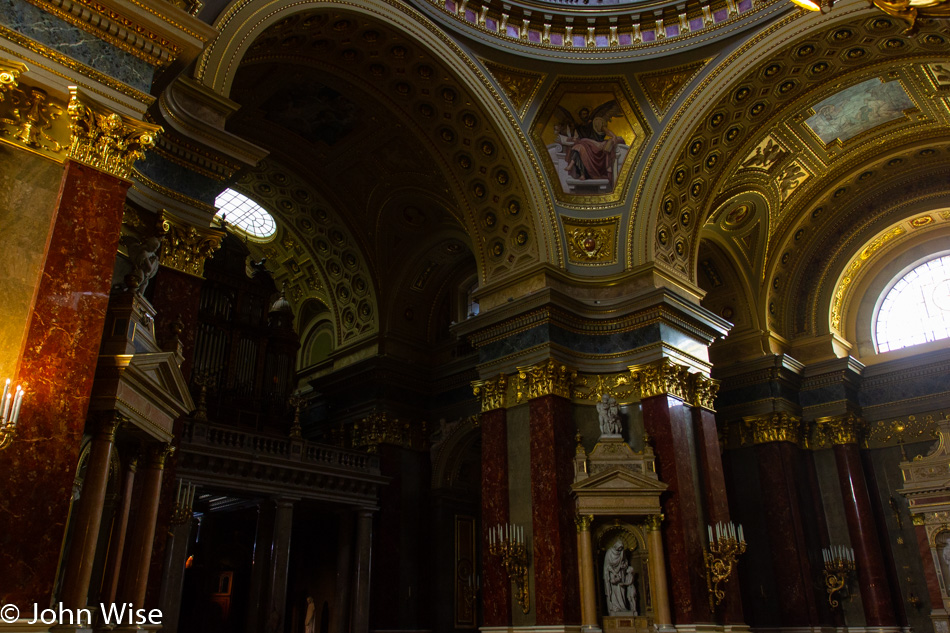
Look into the shadows, for though you cannot see, there is no reason to believe there is nothing there. Light in the darkness illuminates a reality you didn’t know existed prior to you seeing it. This is part of the basis of both religion and enlightenment: look within your mind and look within your heart to find the power of the intellect of us people or your obedience to a God because your mind cannot fathom the breadth that knowledge can bestow upon you.
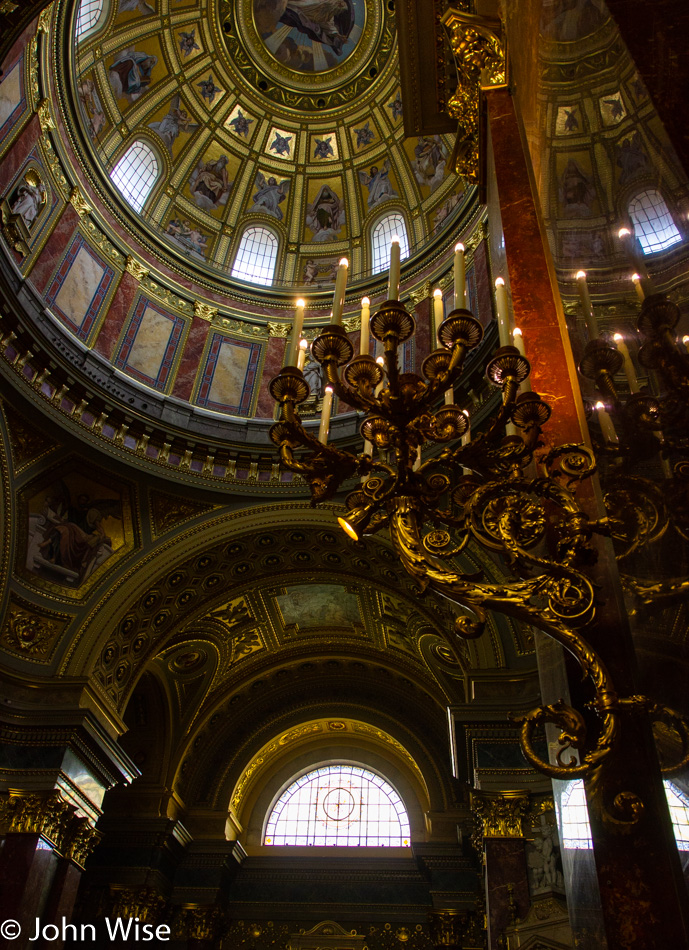
The window allowing you to look out also lets light in, and the candle that burns, destroying itself in the process, illuminates our environment, allowing us to see where the light of the window cannot reach. Deep within the closed spaces of ourselves, we find the greatest darkness and the place that religion and philosophy have been begging us to explore with the help of their light, showing us a path. Maybe I’m lost in metaphors as I write this from almost 11,000 meters in the sky (36,000 feet) on our flight back home, but this idea of the candle destroying itself strikes me in the way that we humans also burn through our own energy source ultimately destroying ourselves on our journey to bring light to others. If we are complacent, allowing others to light the way, how will we find within ourselves the things we do not realize are integral to becoming a greater self?
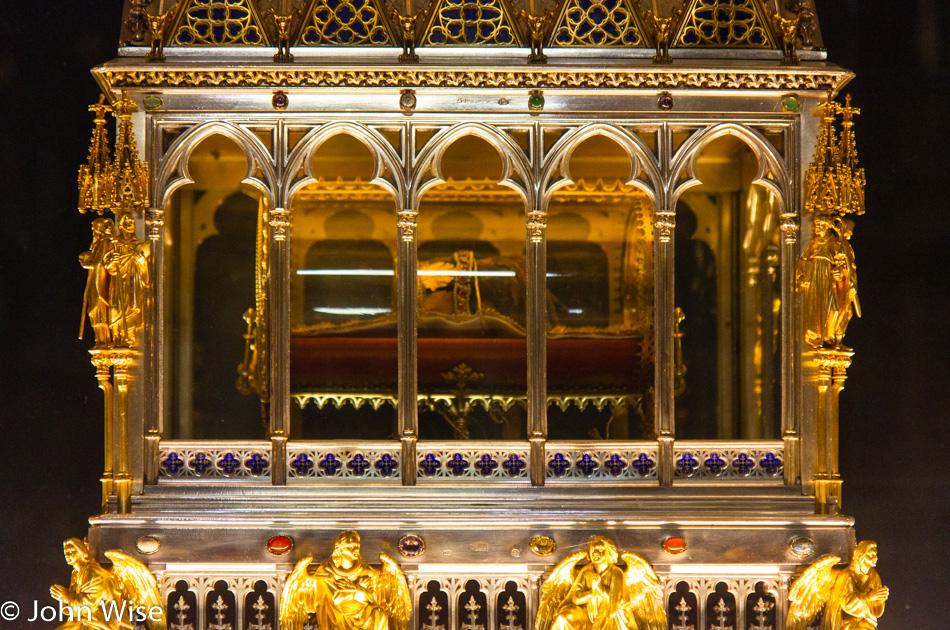
Within this church is a side chapel, and within it is a box, and within it is another box, a reliquary that holds something else. Something the church finds precious and valuable is there for all to see, though none of us can touch it or see it in its entirety; it is the right hand of King Stephen. We are only allowed to catch a glimpse of his hand, and even then, we are denied to view or examine it on a cellular or molecular level. The onion skin’s layers are many, but never do we get to the ultimate possession of knowledge that allows us to know it all; we are forever in ignorance of universal knowledge. We are only people visiting the artifacts of our ancestors, and rarely, if ever, do we truly understand where we have been or where we are going.
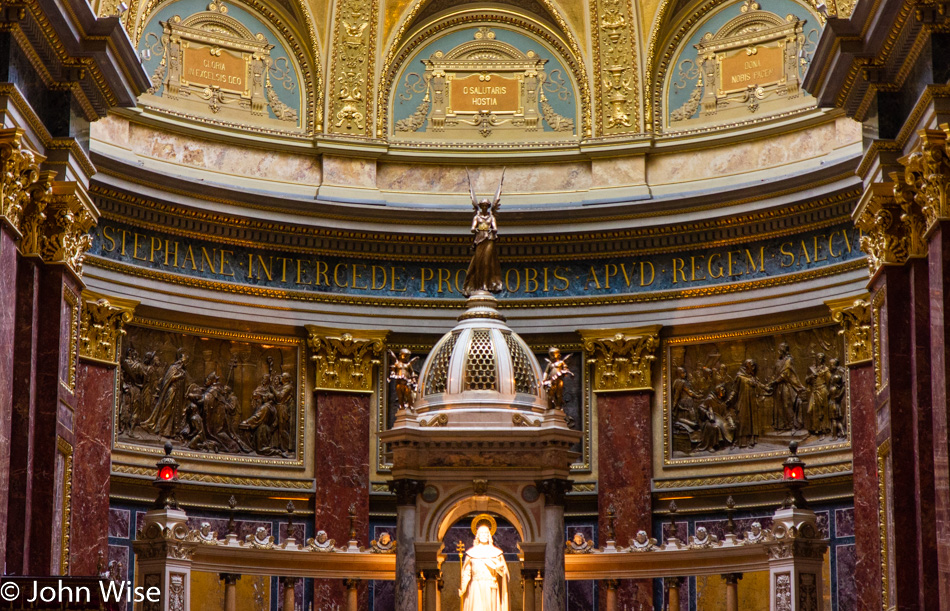
We look deeper as time goes by. We do not enter the center, the top, or in the depths of our world. We must move through the door and choose our path, and while we might see what we think is the big picture, we soon realize we haven’t seen much at all until we gather nearer to the source of what created the larger image. From the door, we could not read the text or interpret the panels, nor could we move from the door into the inner domain of the sacristy, which is usually beyond our reach anyway. The lesson for humanity is writ large within the physical constructs of the church in a symbolic representation that is beyond the clergy. The priest only exists in a fraction of the time that the church and its ideas are representing. The priest is here as a caretaker and person to welcome you for you to find your way in a universe that does not come with GPS or a road map to show you a way on your journey.

Again, we explore the seductive lines on the edges of what our eye first sees, but beyond that lie greater questions that beg for answers. We cannot find our lives in the confines of the television or in the instant gratification of sending our friends a photo on Instagram. Curves of the body may entice us, but they are only a small part of the story. What does the smile tell us? What does the scent allude to? Where do the connections and passages lead to? These questions are not just about the church or religion; they are about human will, relationships, intellect, and emotional well-being. Shelter is only found within, and the hearth will grow cold when we fail to fuel it. This is true about the essence of us people, too; what are you fueling yourself with? Hopefully not strictly junk.

Now we go up instead of within, and here we find not the top as we might have expected, but the top as it is with still another layer above us. On this side of the dome, I cannot imagine what might be on the other side had I not previously been below it. Even though I have seen the dome from below it’s difficult to not place the art and ornament in its proper place that is just on the other side of this structure. I do not know how sturdy this is, how thick it is, or how much it might weigh, but I do believe that what I think is on the other side is actually there. This is my Schroedinger’s cat as found in a church.
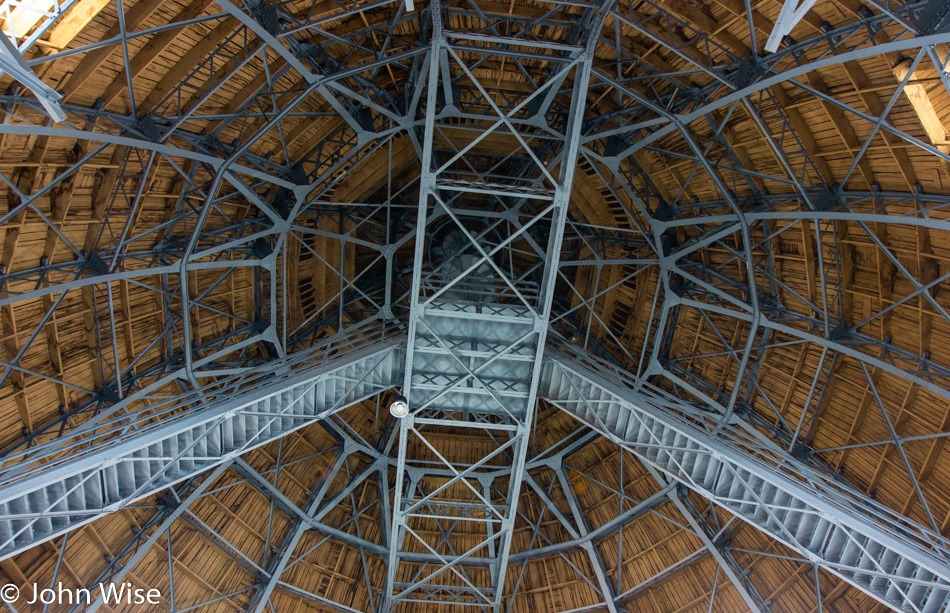
So I look up, and now I see the top, or do I? I do not, not even close. It is too dark and obscured at the top to see what is up in the scaffolding. I do understand that the stairs lead to another passage that would take me to the cupola and surrounding me would be a roof clad in copper, but I’m not allowed. Above the cupola is a base where a golden cross is mounted. It’s time to step into the sky. Before I do, I realize my assumptions are wrong because the cupola must be sitting above the bell tower. A few more steps and my investment in walking up all these stairs might deliver some answers.

My first step into this new world and perspective is not met with proof of a bell tower but with a view of the world as I’ve never seen it before. How many other perceptions of reality exist out there within the many buildings and people who move between them?
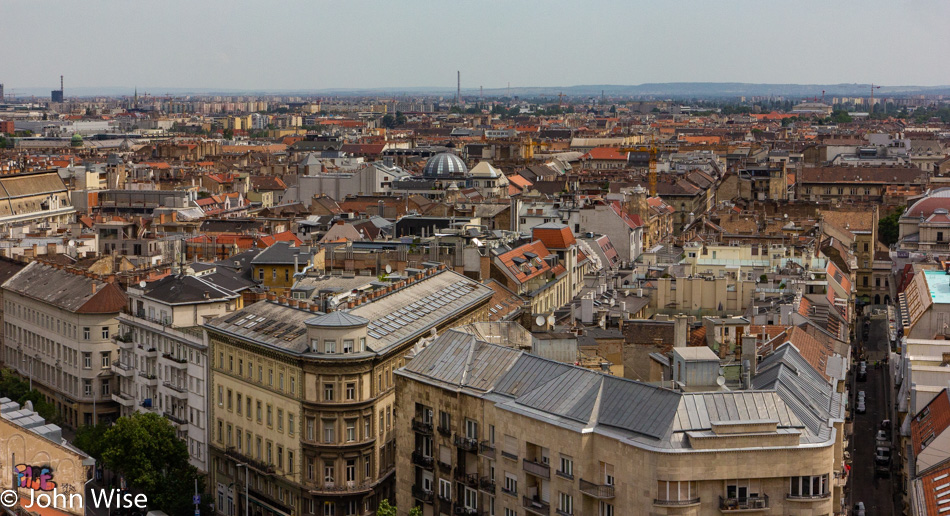
Another view and another unfathomable multitude of potentials waiting to become realities.
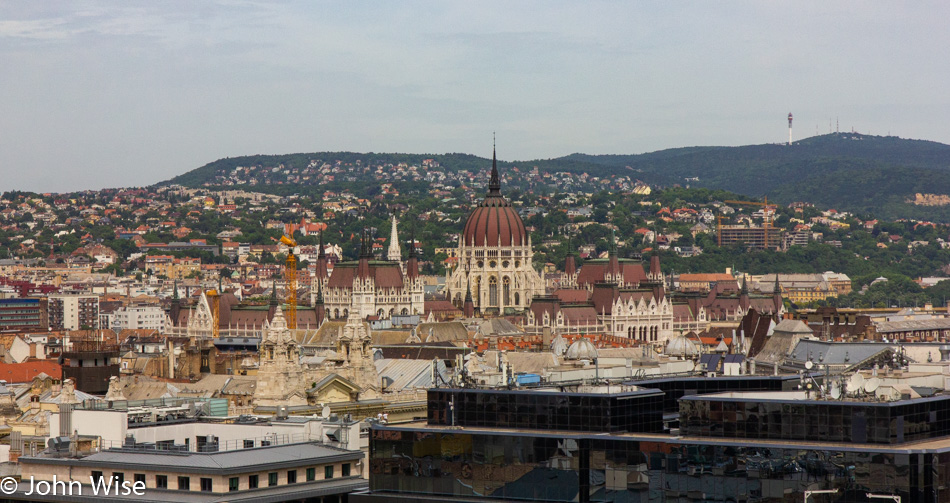
This angle produces yet more options and outcomes. Should I now aloft myself to the International Space Station how might my understanding shift yet again?
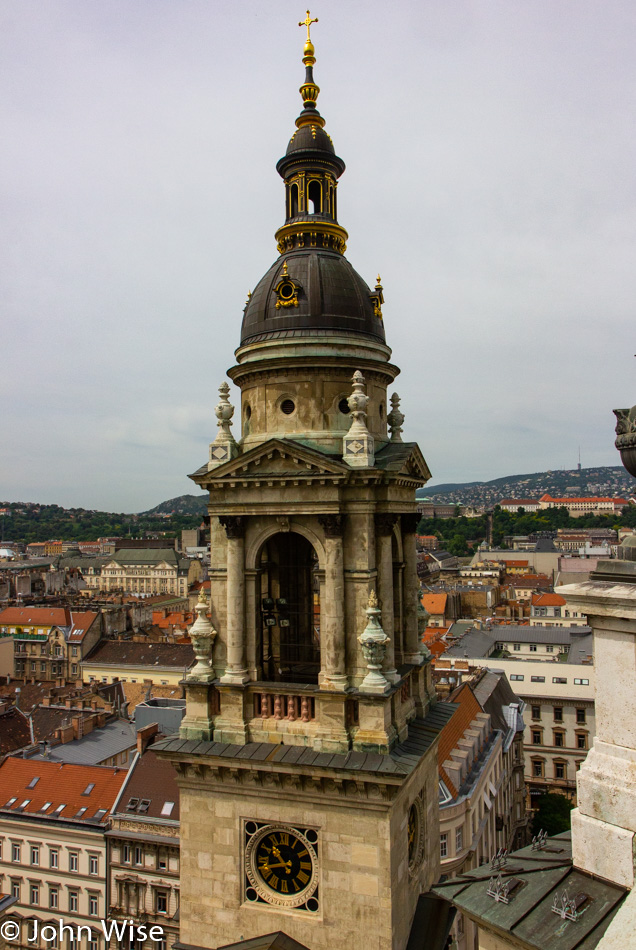
The bell towers turn out to be in the left and right smaller domed towers. Funny how it’s hard to perceive all angles of a potential reality before you’ve stepped into them.
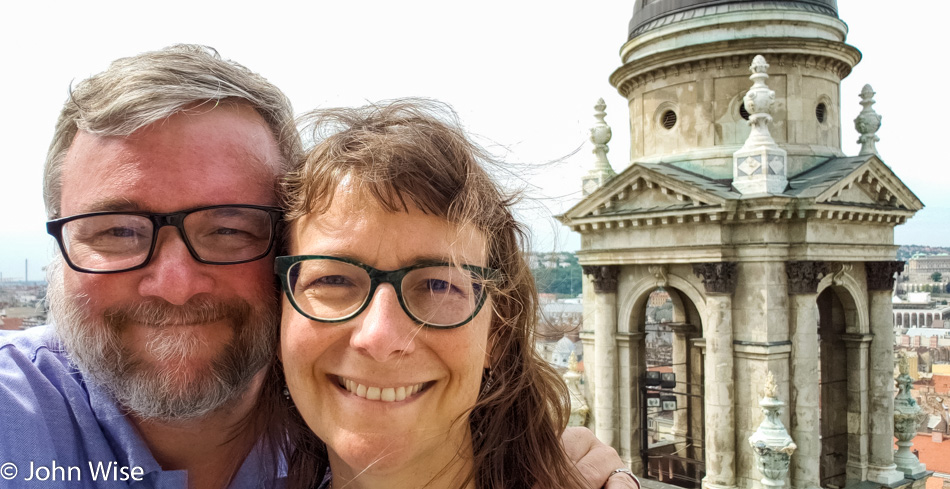
How do I know I’ve been to these places and been able to consider the things that have coursed through my mind and lodged themselves in my memories? I have this image that proves that Caroline and I have been in the presence of the top of the exterior of a church in Budapest, and yet I cannot accept the images and icons of organized religion as similar proofs. Seems that my perspective is biased and possibly flawed; I’ll have to keep on trying to light the shadows within my mind in my continuing search for answers.

Like magic or by the elevator, we are transported to the adjacent south tower where the treasury is located. And as you’d expect, it houses a collection of treasures.
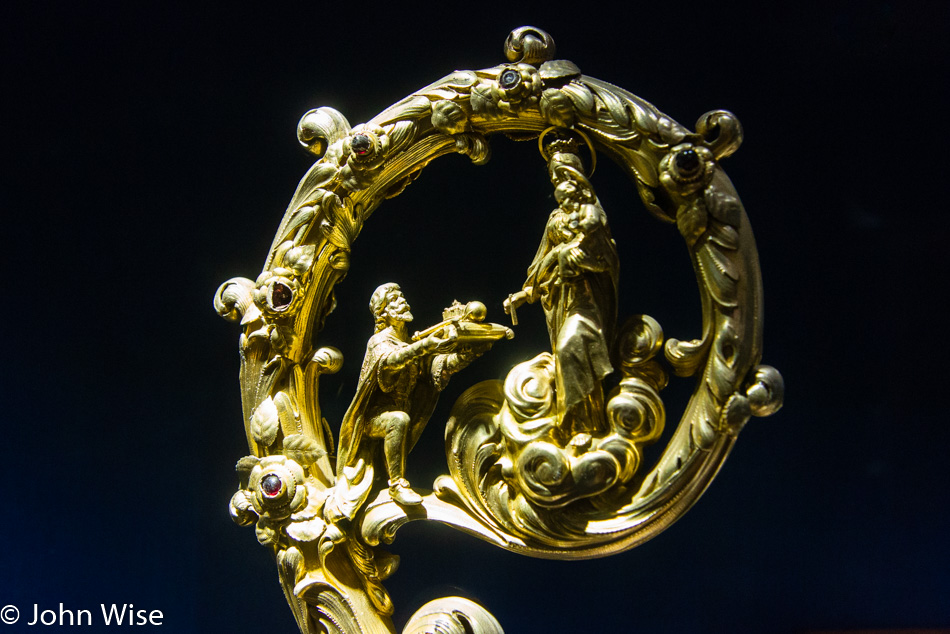
From clothing to trinkets, goblets, and religious artifacts that this particular church holds dear.
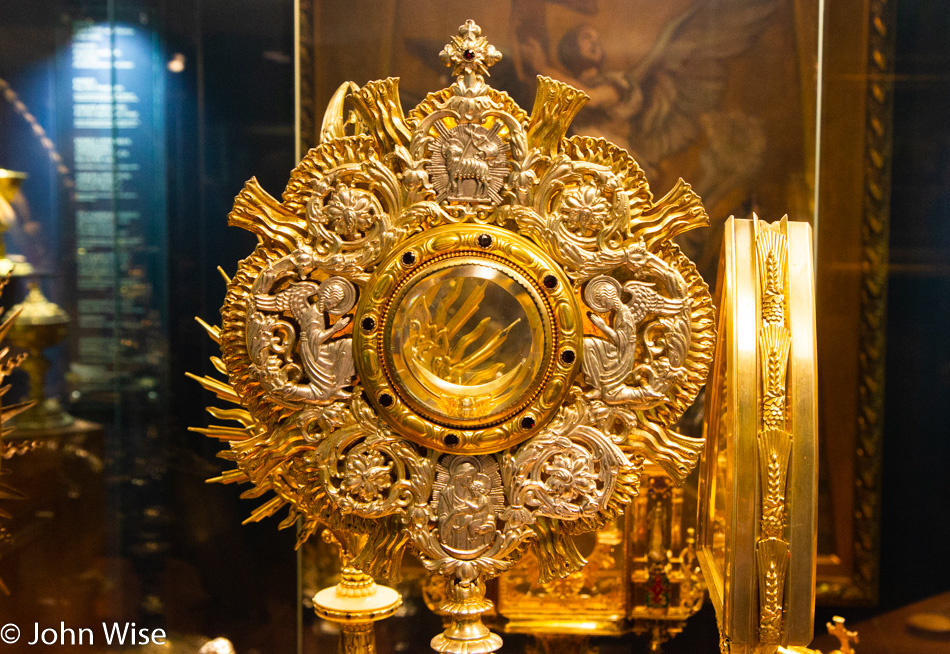
Some placards explain many of the objects, such as when they were created, by whom, when, and of what materials. I pass them by to allow some mystery to continue to exist. Who knows, maybe someday I’ll return and still have something more to learn.
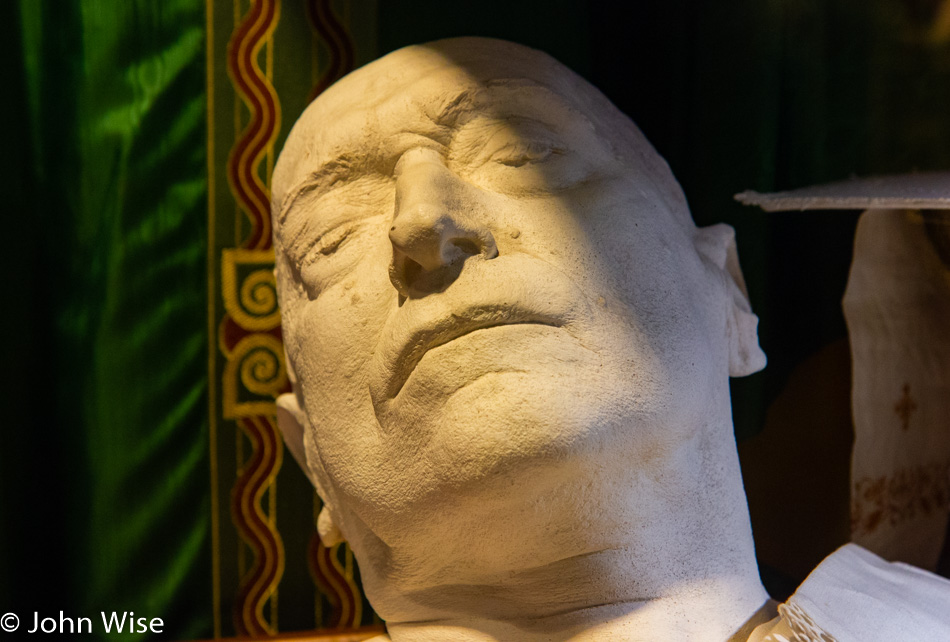
The death mask of Cardinal Mindszenty. During World War II, he was imprisoned by the pro-Nazi Arrow Cross Party, who were responsible for horrible atrocities not only against the Cardinal but the local Jewish population too; more on that later. Opposing communism, he was tortured and given a life sentence after the war in 1949. After serving eight years during the Hungarian Revolution of 1956, he was freed and lived in the United States embassy for 15 years until he was allowed to leave Hungary. He died in exile in 1975 in Vienna, Austria.

How many cultural references are in this image? What is the history of each line, symbol, and material? This wasn’t just made one day from ideas and forms unique to the artist; the person was drawing upon the histories of generations that preceded his own craftsmanship.
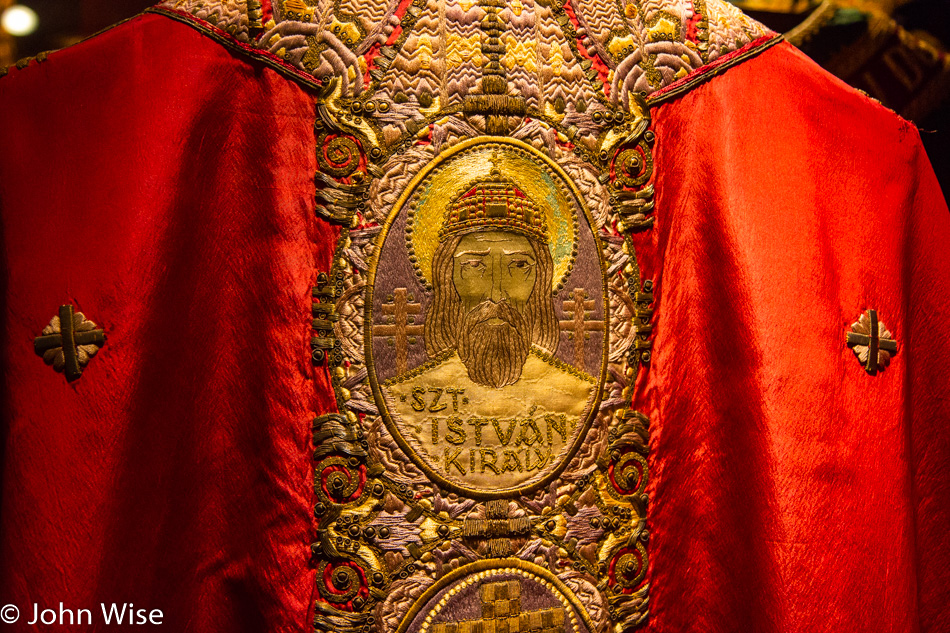
Whose hands worked the needles of this design? Who spun the silk and other materials that the robe is made from? Did certain materials and dyes come from other corners of the Earth? It’s amazing to me to imagine the magnitude of cultural expression and history that can be embedded in a single piece of cloth and our ability to attempt to give meaning to things that bear our imprint.
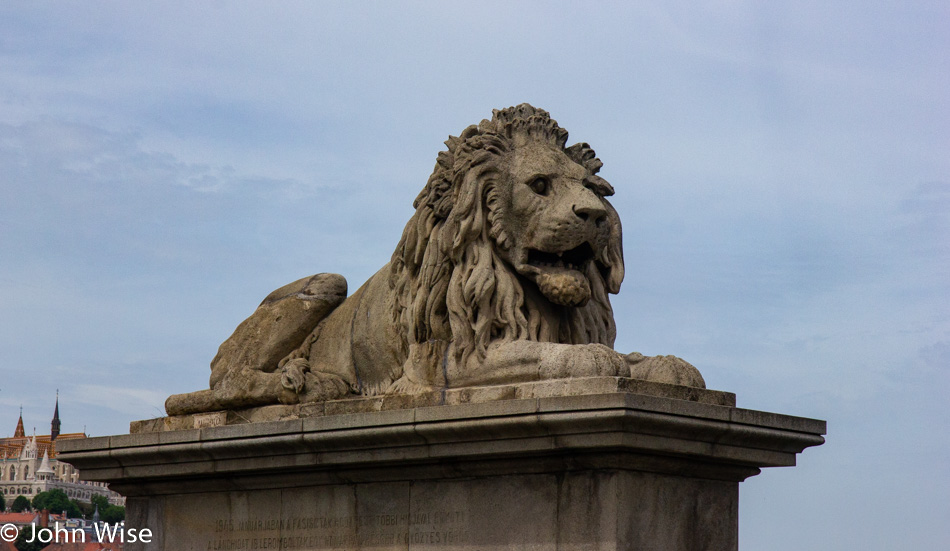
From the animals depicted in Chauvet to the lion’s statues found in many cities around the globe, we humans use fierce beasts, demons, dragons, and gargoyles to ward off our enemies. If only our totems to our aspirations for peace were effective against bullets and explosives.
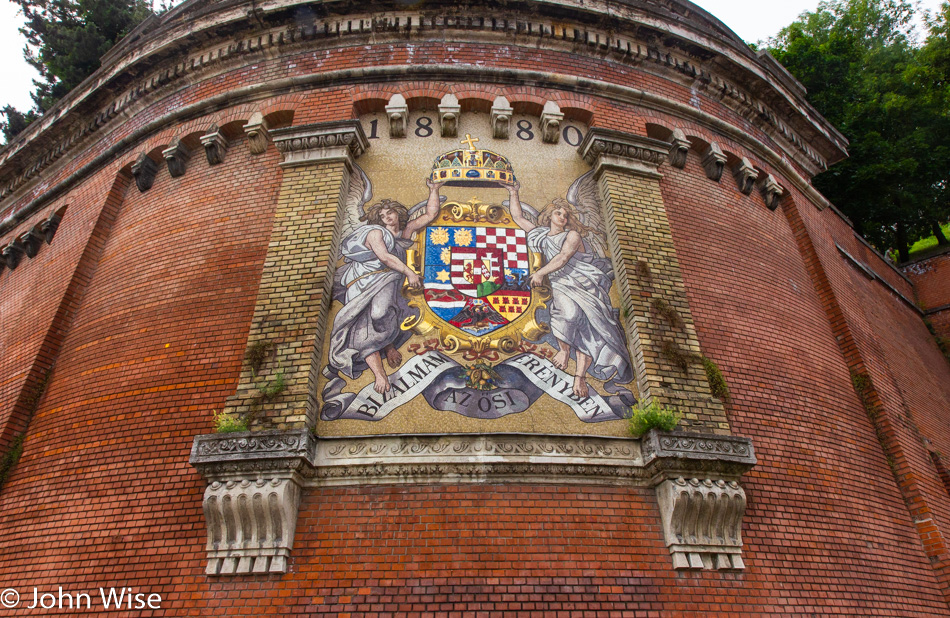
We are heading for the stairs that will take us up to Buda Castle. After seeing the Pest side of the city from St. Stephen’s Basilica, it is time to see the Buda side from Matthias Church.
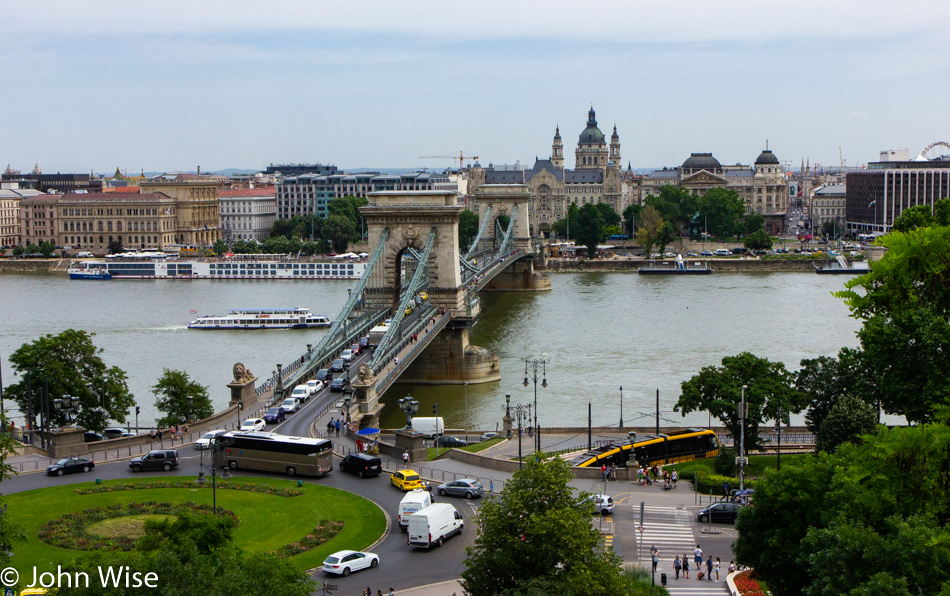
Down below, we could have taken the funicular, but that would have stolen the midway views as we trudged up the mountain. That’s St. Stephen’s on the other side of the bridge that is crossing the Danube.
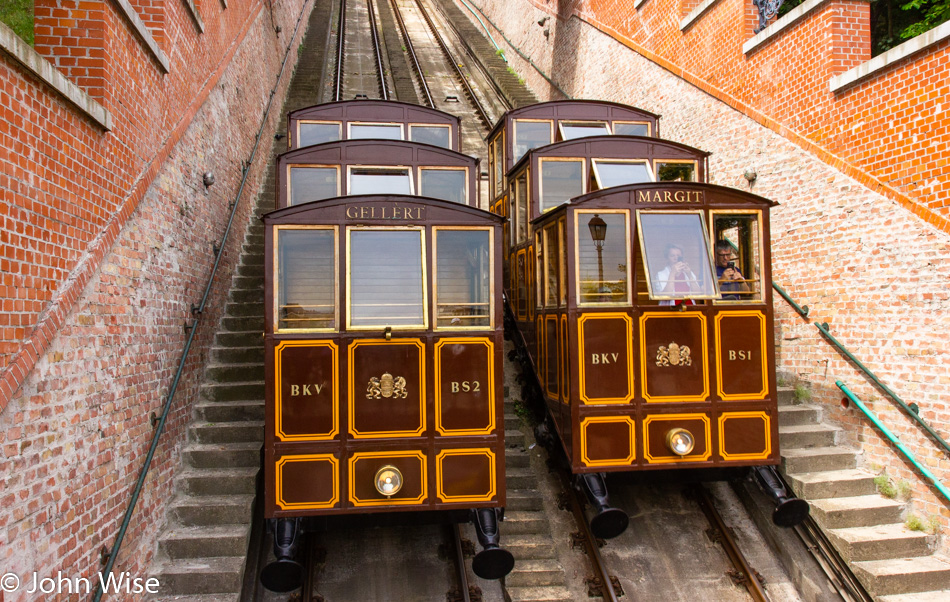
There seems to be a joke here that asks, “What happens when two funiculi pass on the side of the mountain?”
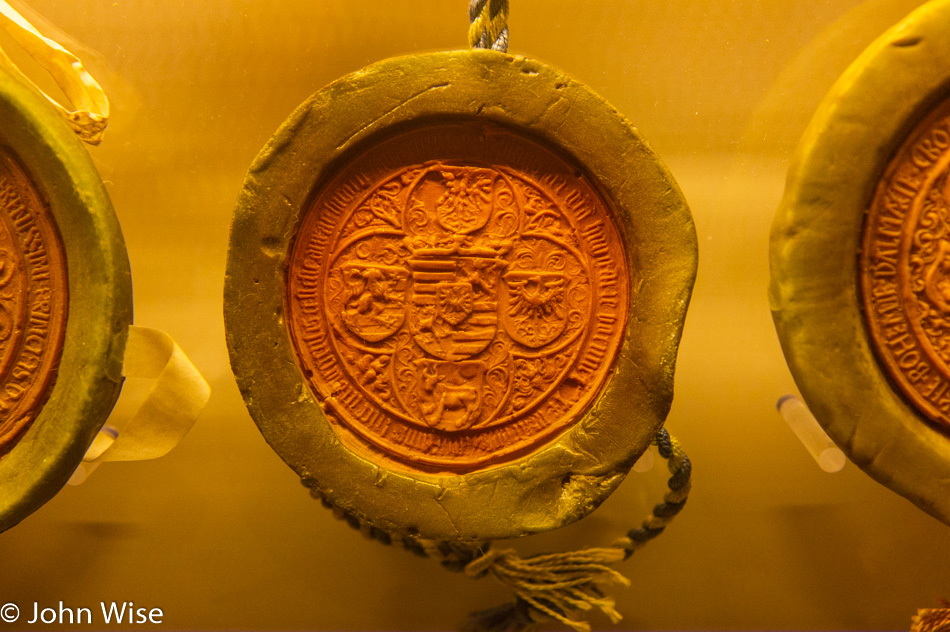
Our second museum of the trip is the Buda Castle History Museum, which is worthy of a visit should you ever find yourself in Budapest. These are royal seals used over the history of the country. Deciding what to photograph in a museum is difficult because essentially everything is of interest, but blog entries shouldn’t have a thousand images accompanying them either. So, I try to choose things that might not always get photographed and that I might later have something to say about. My results are a mixed bag.
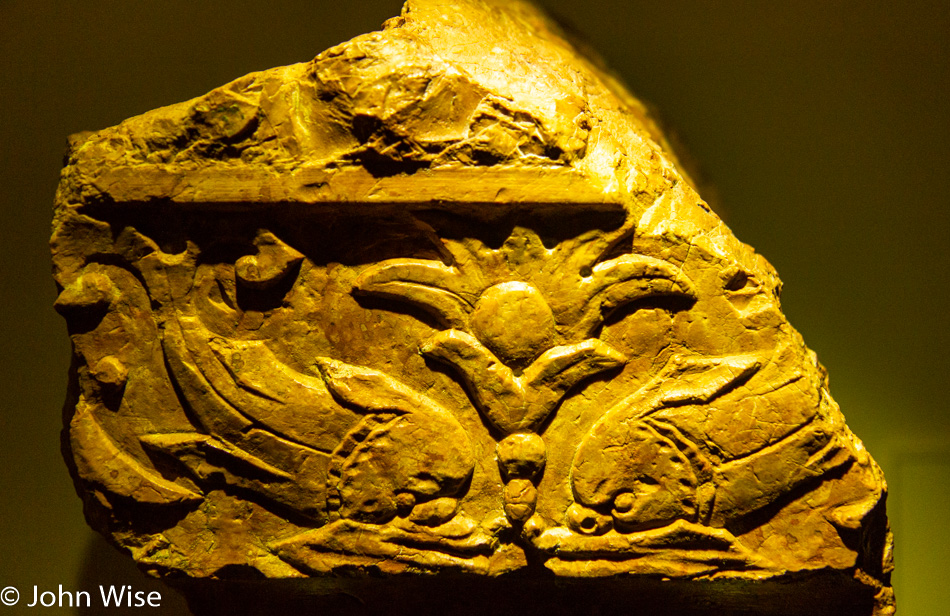
Were there once Danube River dolphins, or are those gills and rabbit ears on those two things facing each other?
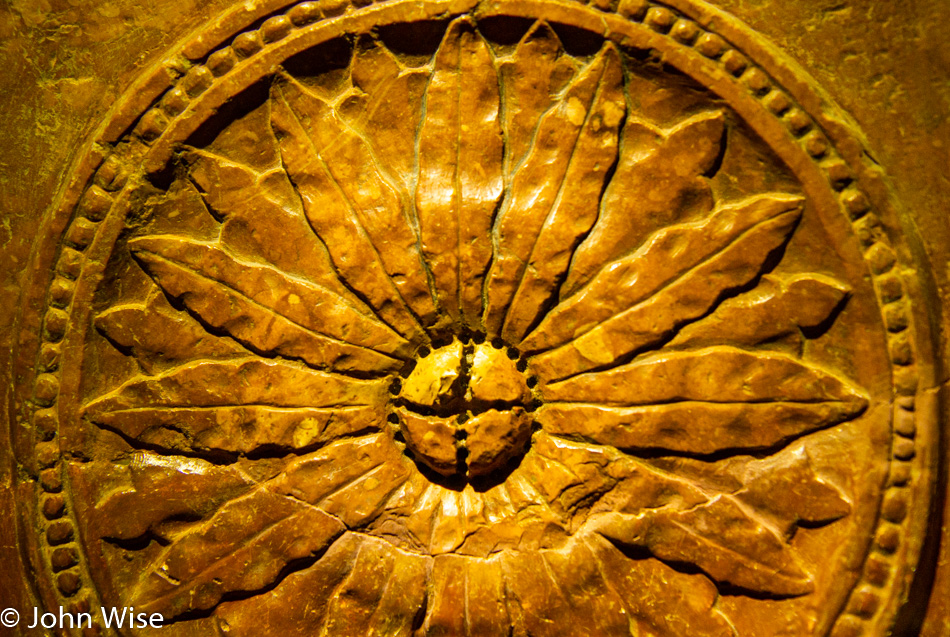
There were dozens of red marble carvings on display; this was qualified as a favorite, so here you go.
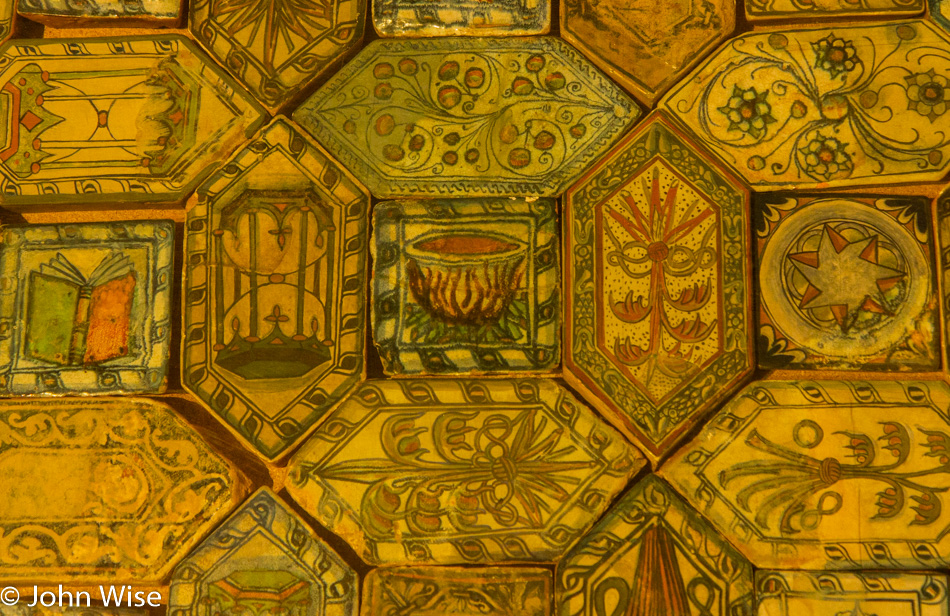
The tiles of a mosaic floor piece in beautiful shape after so many centuries. How many centuries do you ask? I’m not sure, though most everything in the museum seemed to date from about 1500 through the mid-1600s.

The only thing missing is some antlers.
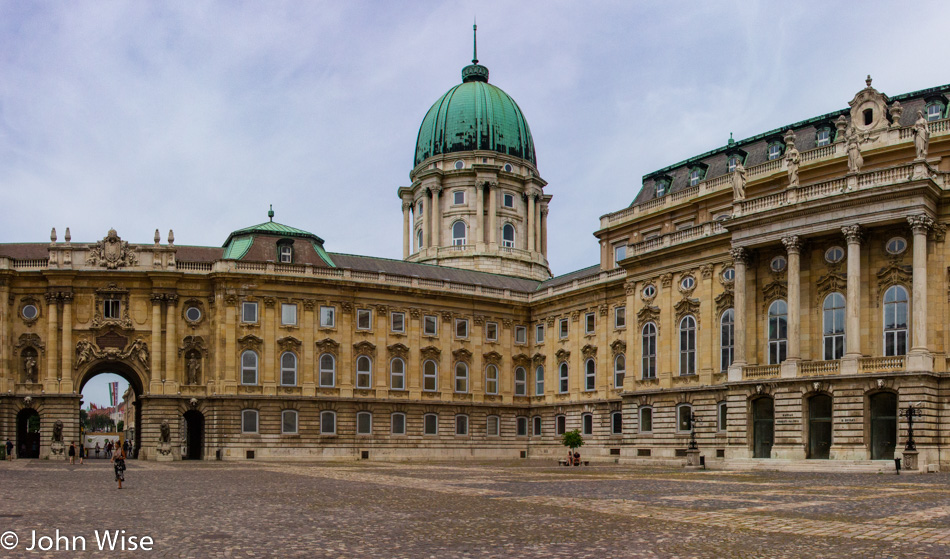
Buda Castle from the inside court.
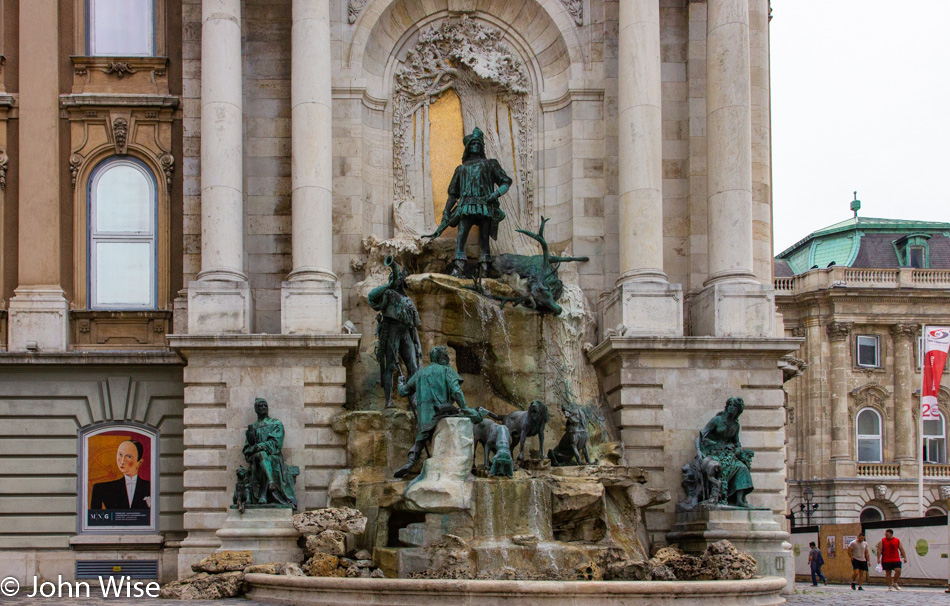
Oh yeah, antlers.

Ruins of some sort. (maybe we find out something more about these)

Changing of the guard. I’m guessing this is the presidential palace, but it felt awkward to ask anyone official-looking here as the police and security in plain clothes didn’t look like they’d enjoy answering tourist questions.
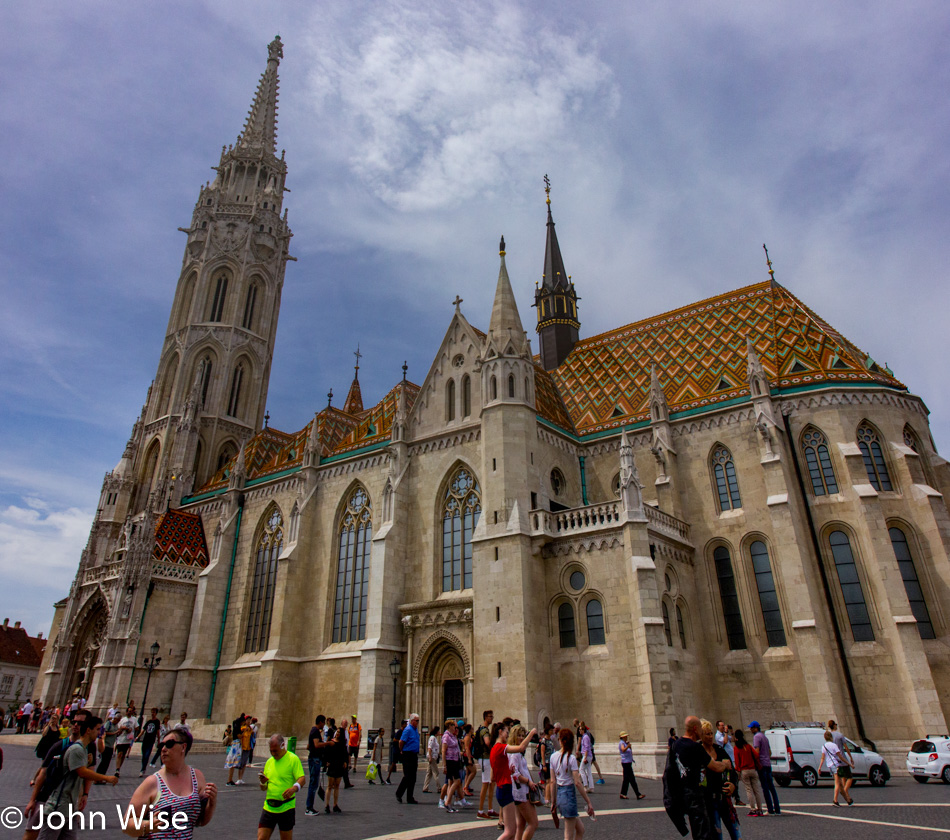
Matthias Church is about to be explored from top to bottom, but not in that order.

Before that, we headed over to Fisherman’s Bastion, which, to be honest, I think is more a ploy to collect a few more forints because….

Other than a slightly nicer view of Parliament and the city on the other side of the river, there’s not much difference in the view than just 10 feet below where we stand.
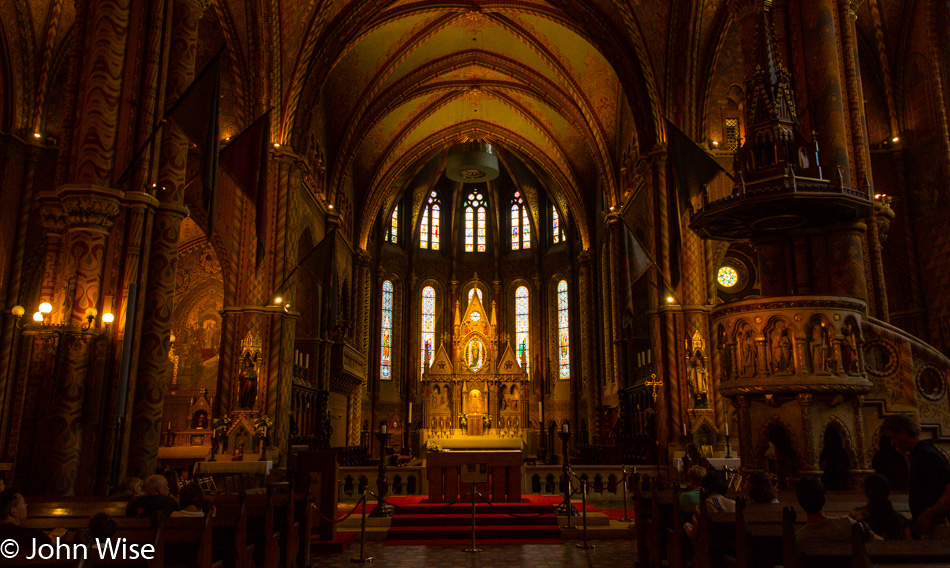
We are inside the church and will watch the clock as the tower operates on a schedule and limits on how many people can go up per group.
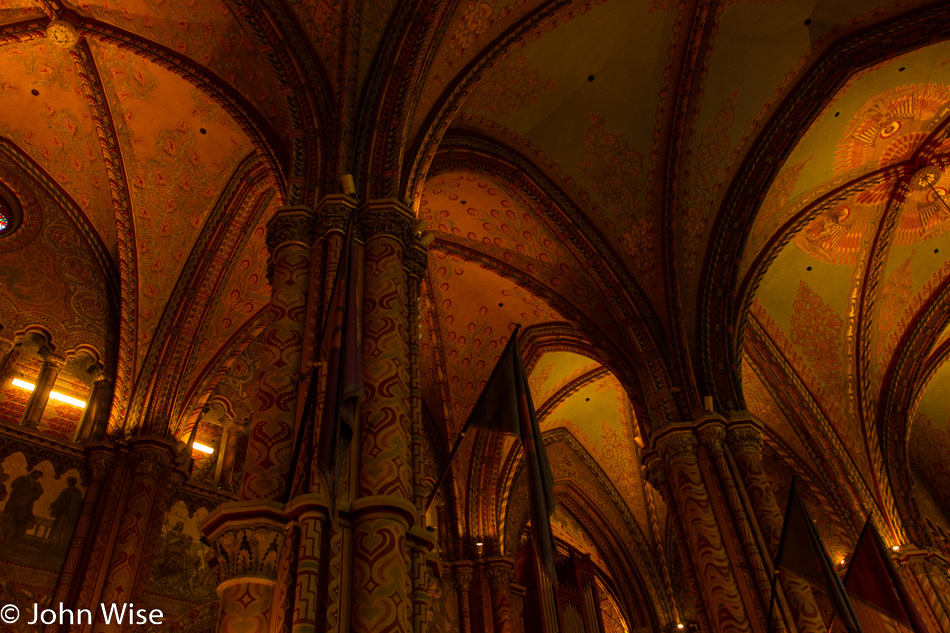
There’s a warmth in here with all the dark tones that paint this church with a very different feeling than, say, the Dresden Frauenkirche with its white and gold aesthetic or Magdeburg’s Dom, which is cold, gray, and quite austere. The other day, we were in the ornate Basilica of St. Anthony in Padua, which was relatively bold in its presentation, whereas Matthias Church feels subdued yet just as sophisticated.
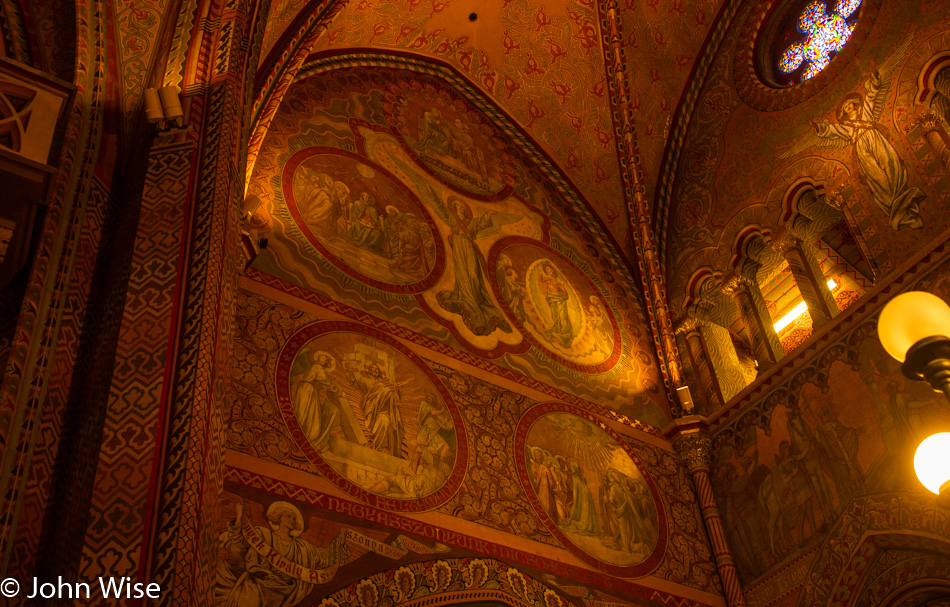
To think that the majority of humanity will never gaze upon or look within these living museums whose purpose is to facilitate prayer, devotion, and ultimately salvation is a strange thought to me, as our churches, mosques, and temples are such integral parts of our lives. The diversity and work that exists upon these walls and the adornments both in and outside the building are testaments to our brilliance in architecting places that inspire our imagination to heights we’ve never witnessed in another species.
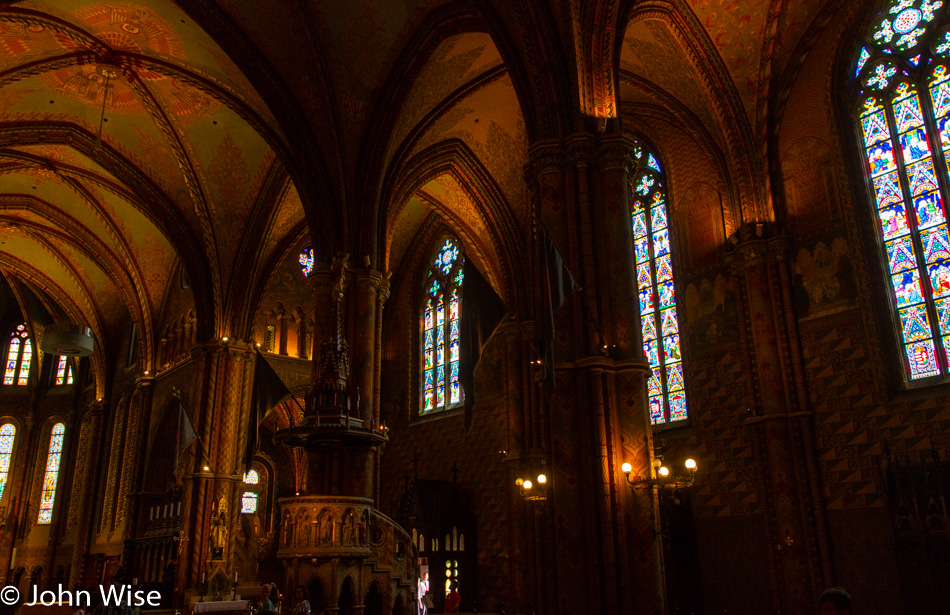
Solemnity comes to the person who walks into a church just as it does when one enters a hospital. We somehow sense the fragile nature of our existence when in places that heal, be it with medicine or spiritual guidance. This formality of dignity might also play a role in how people go about their lives in cultures that place greater importance on the social rules that enforce these behaviors, though this is purely conjectured on my part, coming from a thought-out-loud question.
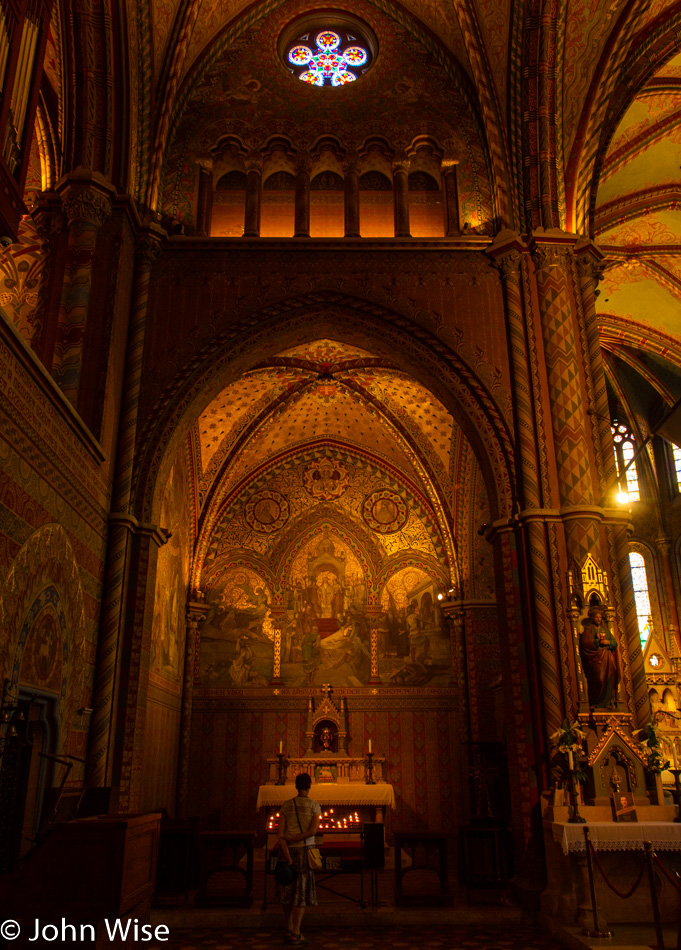
From reflection and inspiration, we are feeding the more benevolent side of our natures. Maybe our commercial and social gathering places need a return to such environments that demand respect, quiet, and contemplation. How would writing be affected if it were being done during extended visits to a church as opposed to the coffee shop?

To sit here in the pulpit and find the words that might come to mind while taking influence from my surroundings sounds like a grand working vacation in its own right. How would one go about seeking permission to be allowed such a task and privilege?
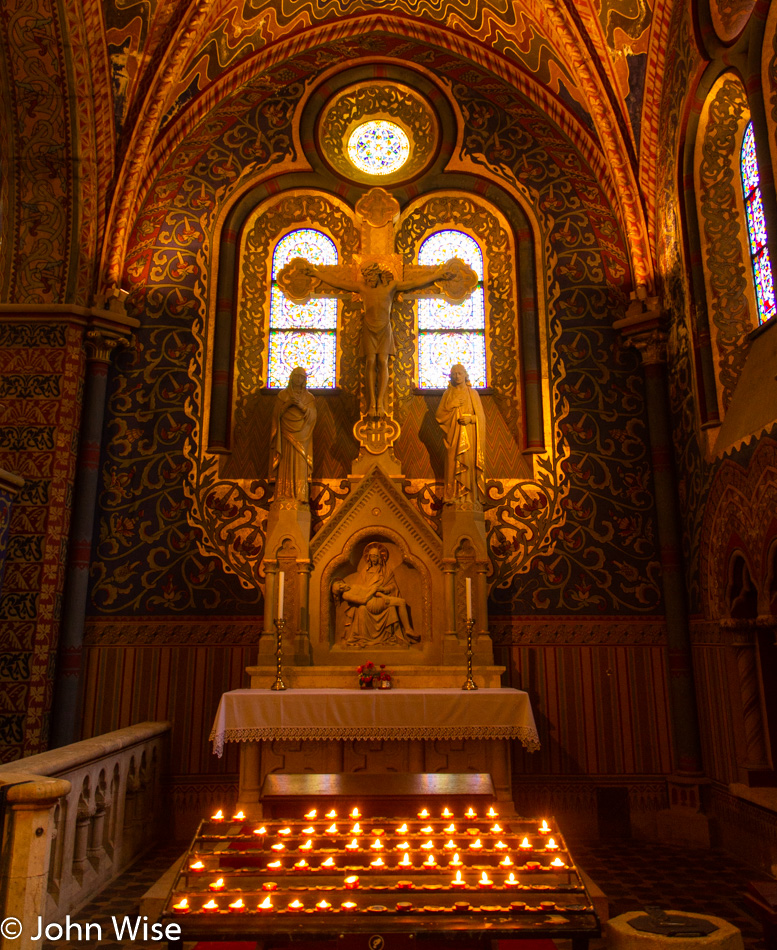
In an age before movies and television, I could see the church as fulfilling the role of taking a community to another place, much like modern media does today. Here in the church, the worshiper listens to scripture and the gospel while viewing the scenes reflecting passages from the bible, with the air scented in frankincense and colored light streaming in from stained glass, helping create an ancient theater experience featuring god and the apostles as the main cast.
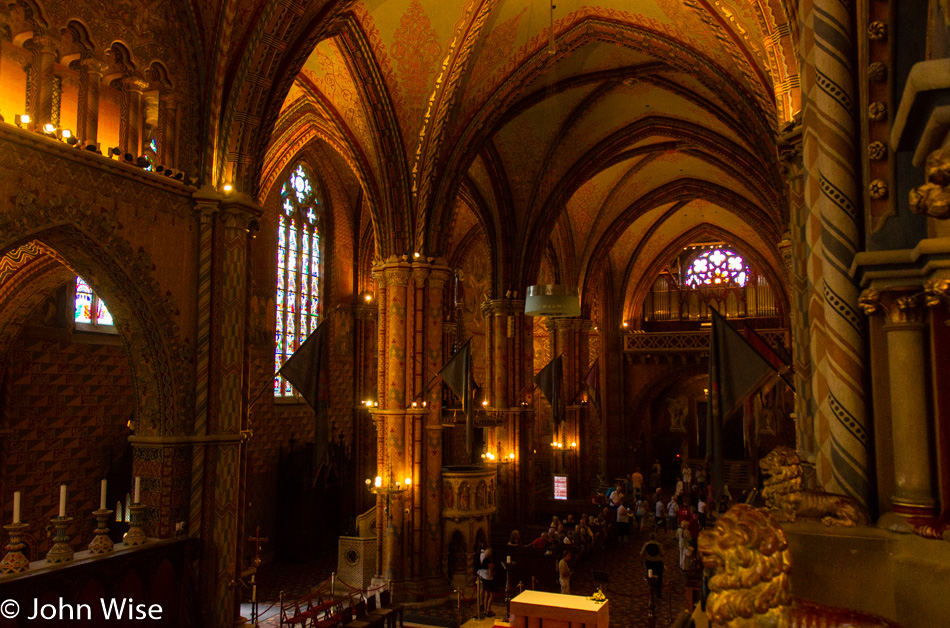
This is a rare view for me as I cannot recollect many other churches I’ve been able to visit above the nave or apse for a look into the church such as this.
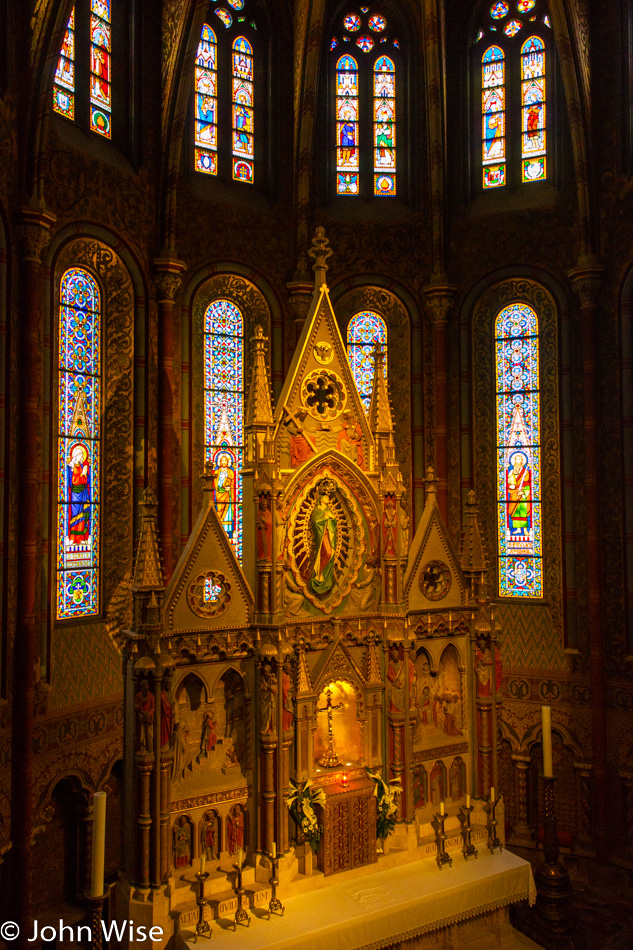
This is the altar in the sanctuary of Matthias Church. Its scale is somewhat skewed due to our view from above its main body. Some of the altar’s imposing authority, when seen below, is lost; maybe this is why the average visitor or congregation member of a church is seated before the altar in the nave.

Over the past decade, more work regarding the investigation of how light impacts us emotionally has been undertaken at the professional research level, but still, the field, from what I can find, is in its nascent stage. While early research has shown some effect on how the spectral quality of light affects us, I would like to better understand how this light found in vast, dense places combines with the unique acoustic qualities of the church that amplify or greatly alter the prosody of the sermon to impact our senses and emotional being.
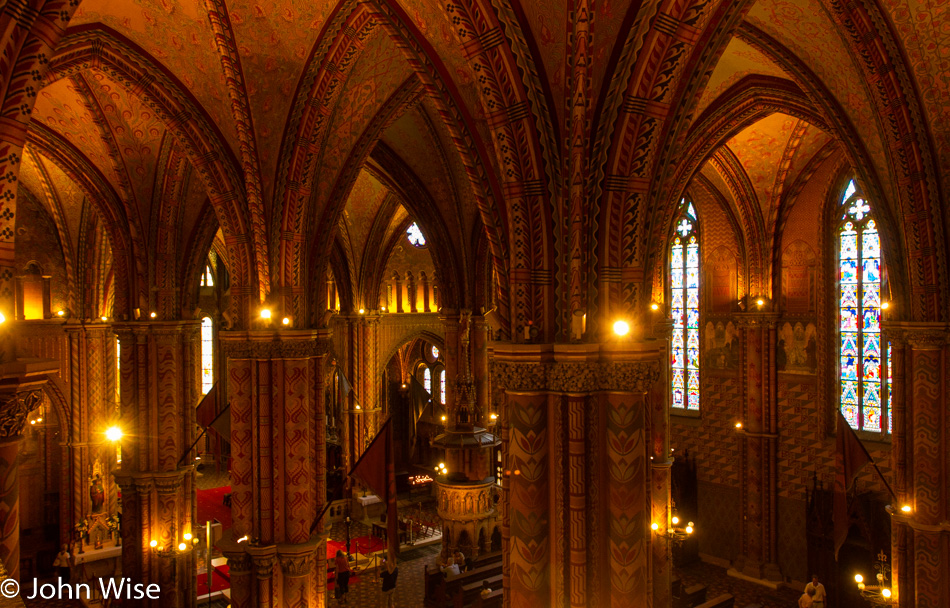
On a similar note, how do architecture and our internal spaces affect our perceptions and emotions? While a search on the internet has given me a few leads to follow up on, I don’t have the time at this writing to encapsulate what they have to say, so I’m giving my reader and myself a couple of links to read. The first one is from Kashmira Gander and an article she wrote for the Independent out of the United Kingdom titled “How Architecture Uses Space, Light, and Material to Affect Your Mood.” The other article is from Shivangi Vats, published on Medium titled, “Impact of Architecture on Human Psychology….” There’s so much to know about life and so little time to learn about it all.
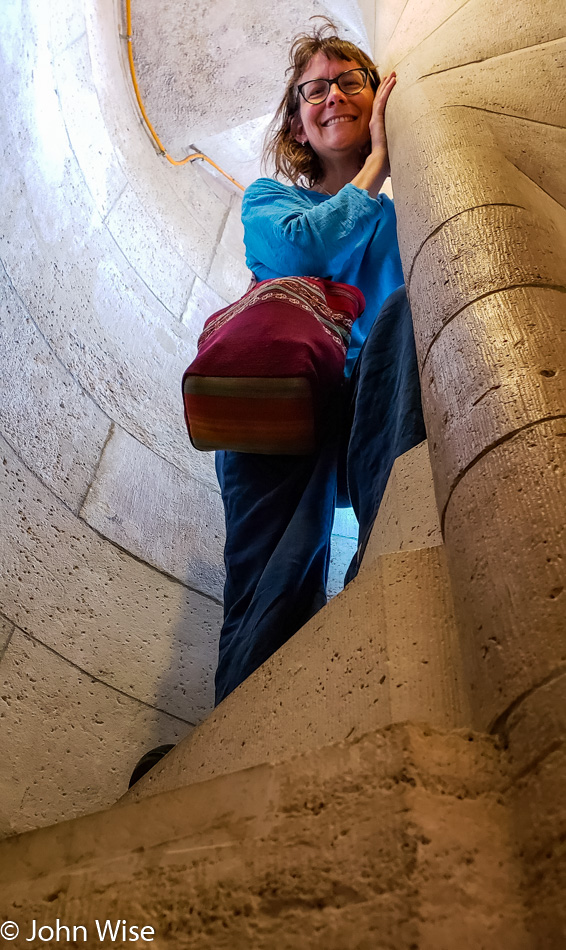
Up the tower, we go for yet another view of things from a perspective not everyone is willing to try to reach.

If you’ve never been to a European city on Christmas Day to hear a dozen or more church bells ringing across the landscape, you may not be able to fully appreciate how profound the effect is on us. While the solitary bell is a beautiful sound in its own right, it is the various tones and pitches working in concert, echoing through the streets, that real bells bring that recordings broadcast from modern bell-less towers cannot deliver. Seeing these large bells, it is as though we intuitively understand we are standing before something great. When rung, they will resonate deep within us and seem to strike something primordial.
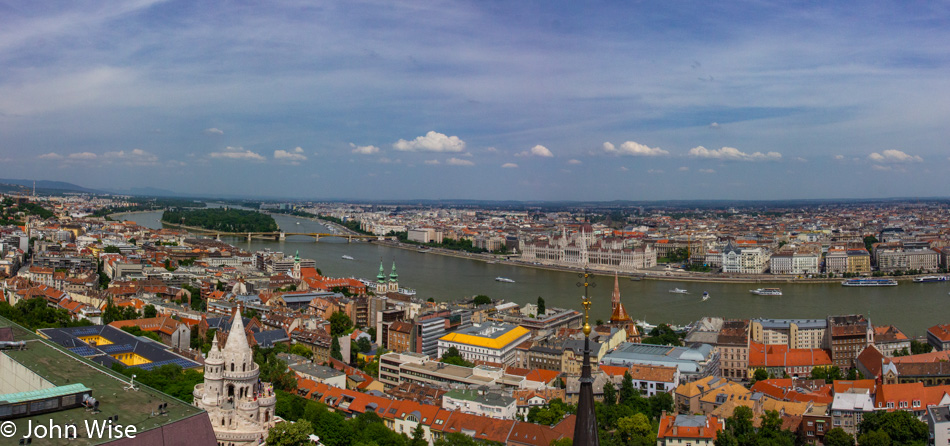
We have arrived at the top of Buda. Pest lies across the Danube and Parliament can easily be seen in all of its spectacular glory there on the banks of this historic river.
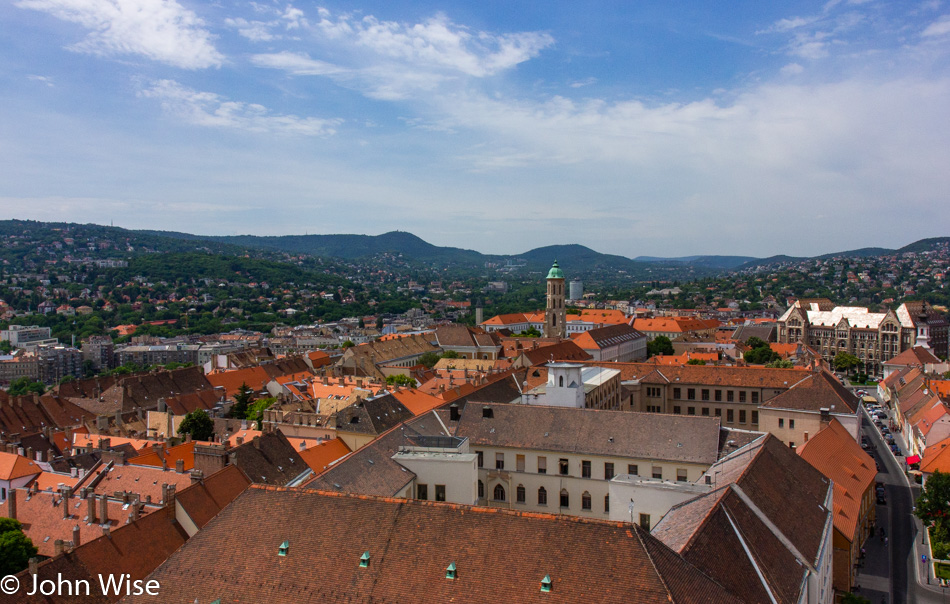
Other than the cars below and many of the houses in the distance, it’s a strange thought looking out here from the tower of Matthias Church that the view is much the way it might have looked hundreds of years ago.
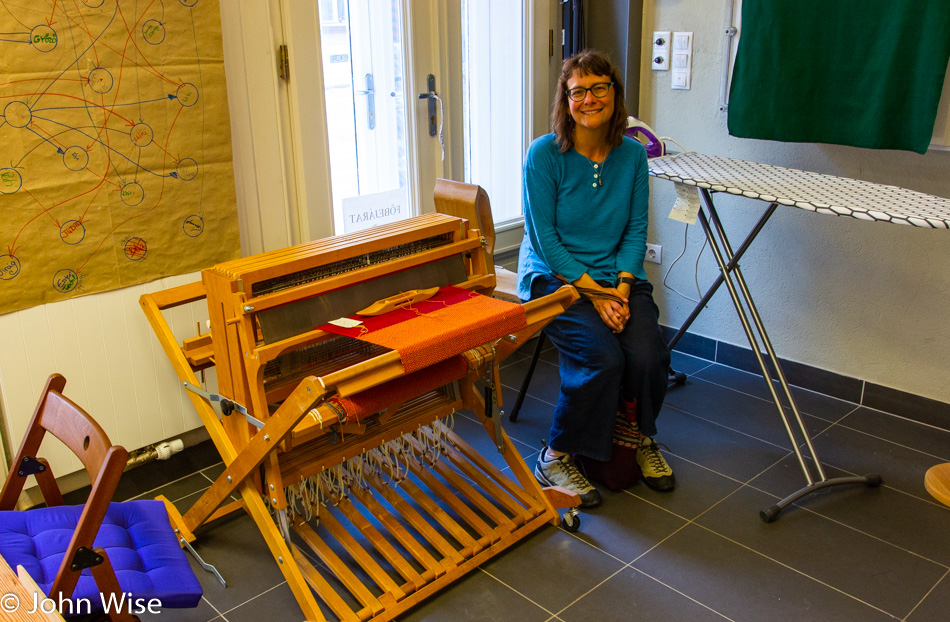
Another temple of worship we needed to visit, this time it was the Museum of Applied Folk Art. Turns out that this place doubles as the meetup point for a local fiber arts group with somebody’s Baby Wolf loom set up with a length of cloth being made.

On an adjacent loom was a sample draped over a weaving in progress. I tried to sneak a peek at it but was admonished not to touch a thing by one of the people working at the front door.
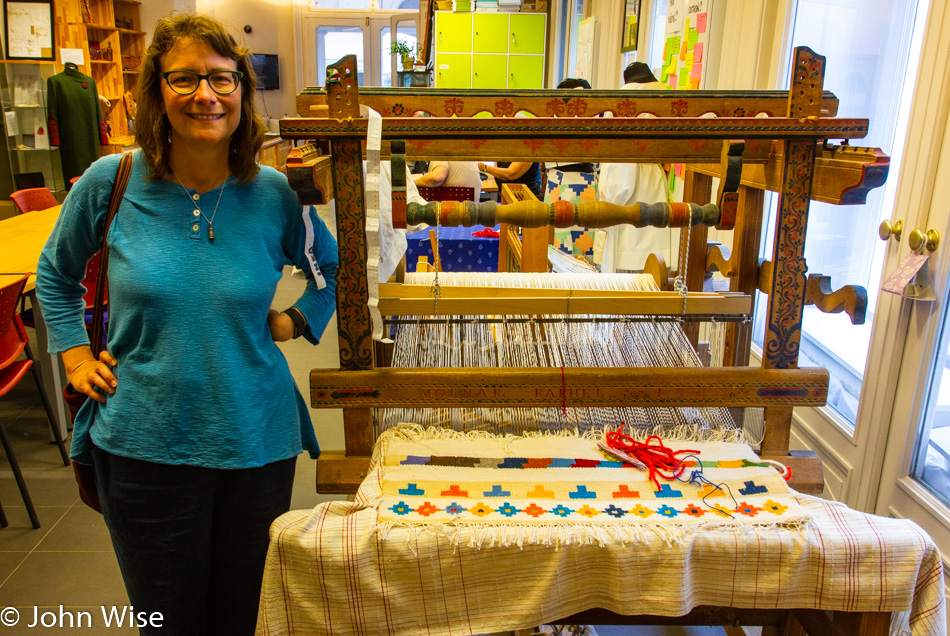
The loom was a relatively simple two-shaft loom but with some beautiful woodwork that made it into a work of art.
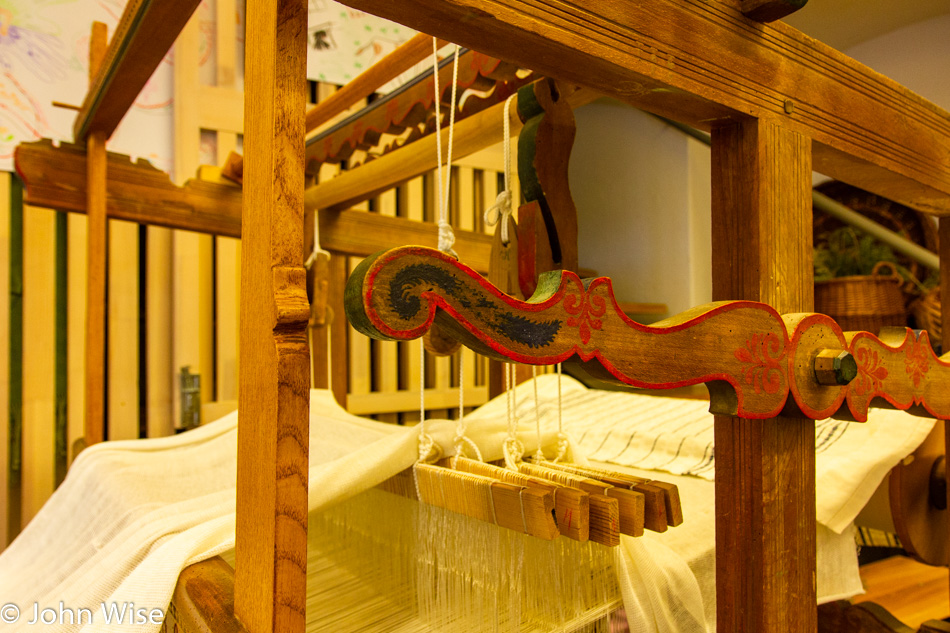
I must live under a rock, or Caroline doesn’t share all the available information with me regarding loom configurations, as I’ve never seen a two-shaft or a six-shaft loom before.

Ethnic folk art is what this museum is about, and while there isn’t much on display, what is here is interesting enough to keep our attention. Many of the photos I’ll take here are for Caroline to take inspiration from once we return to America.
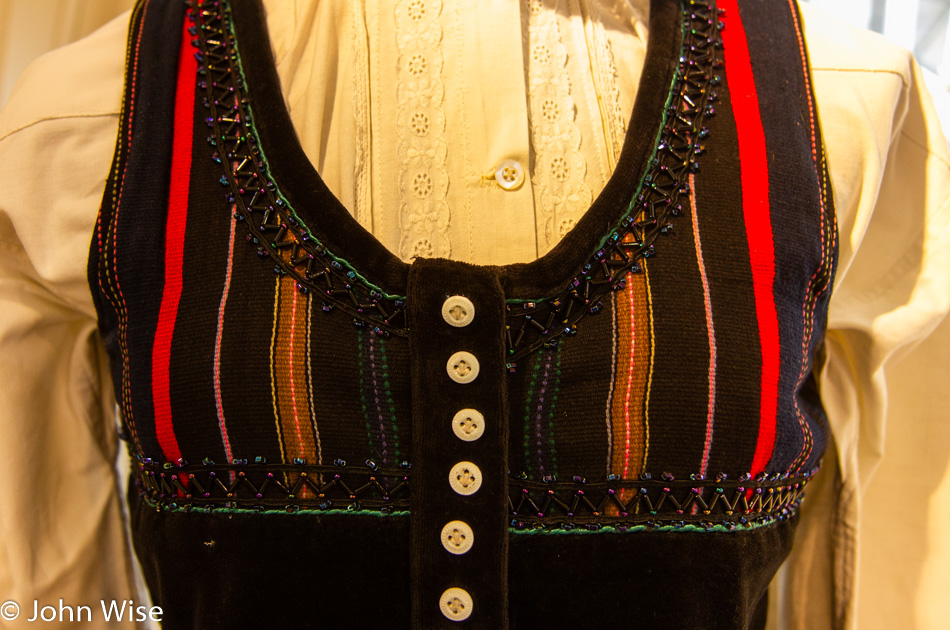
Some of the pieces Caroline could make if only she had time away from knitting all these socks she makes me and that other thing that consumes so much of her time: work.
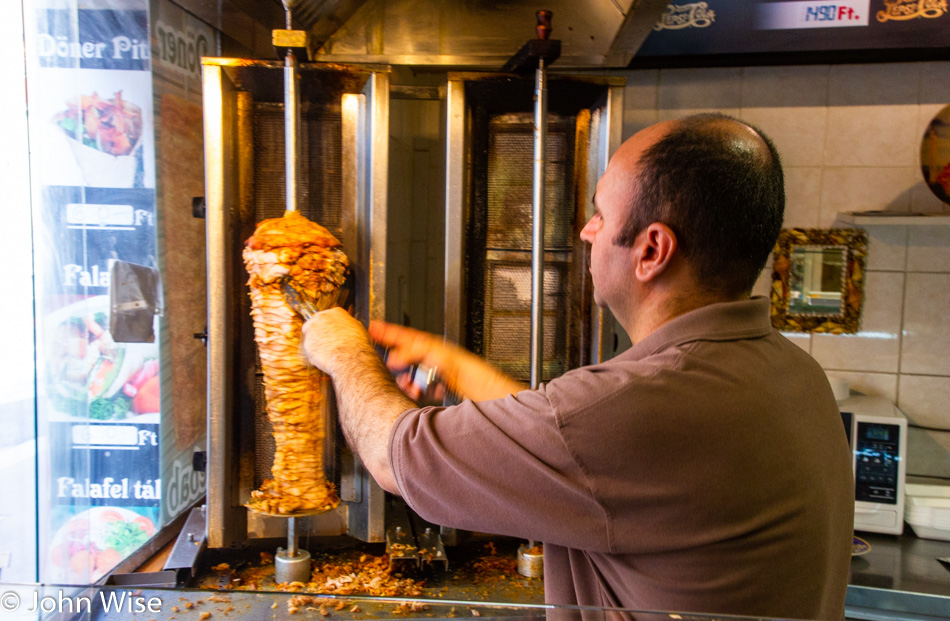
After we visited the Folk Art Museum, one of the ladies who was doing needlepoint, there told us of a nearby folk art store called Mester Porta just down the street. We did a bit of shopping and then desperately needed something to eat before we started on a long walk to the other side of the river. The lady working at Mester Porta told us of a decent Döner Kebab shop further down the street, and that’s where we headed. Do not attempt to think that a Döner and gyros are the same things if you are in America. Gyros is a poor excuse for something that wants to imitate the amazing Döner but is made in some factory in Chicago and is the exact same weird meat product served from coast to coast, whereas in Europe, each shop owner has their own recipe and meat combination. Sometimes conformity sucks unless it’s In-N-Out Burger.
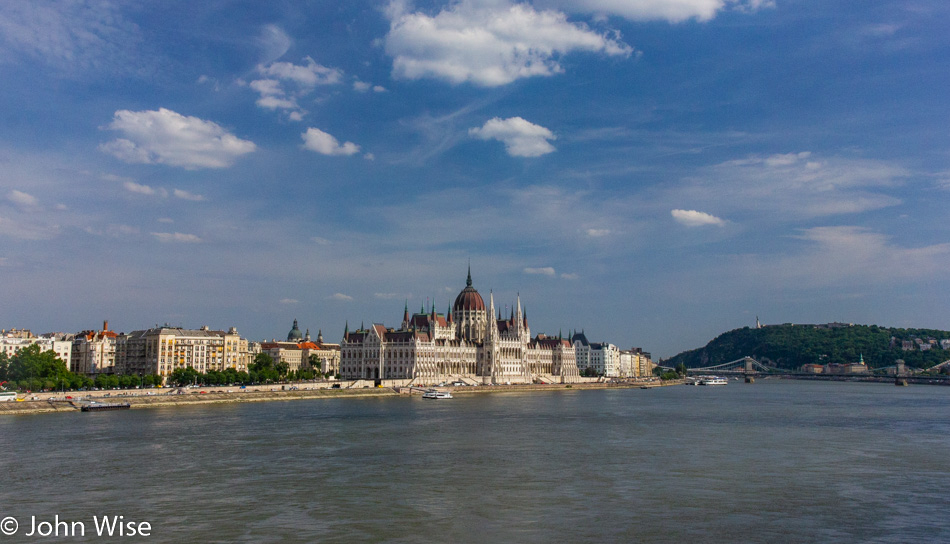
We are crossing the Danube on the Margaret Bridge, which was opened in 1876 and is the second oldest bridge here in Budapest. Earlier in the day, we crossed from Pest to Buda on the Széchenyi Chain Bridge which is the oldest bridge here in Budapest and the first that was a permanent crossing of the Danube. The night before, we drove over the Liberty Bridge, coming into the city, and the night shot of Buda Castle was taken while we were crossing Elisabeth Bridge, which means we have now crossed all the major bridges of Budapest. Margaret Bridge is a three-way bridge connected to Margaret Island, and we would have loved to have visited, but we have an appointment at 6:00 p.m. we’ve got to get to, and it feels far away in this heat, humidity, and in-light of the distance we’ve already walked today.
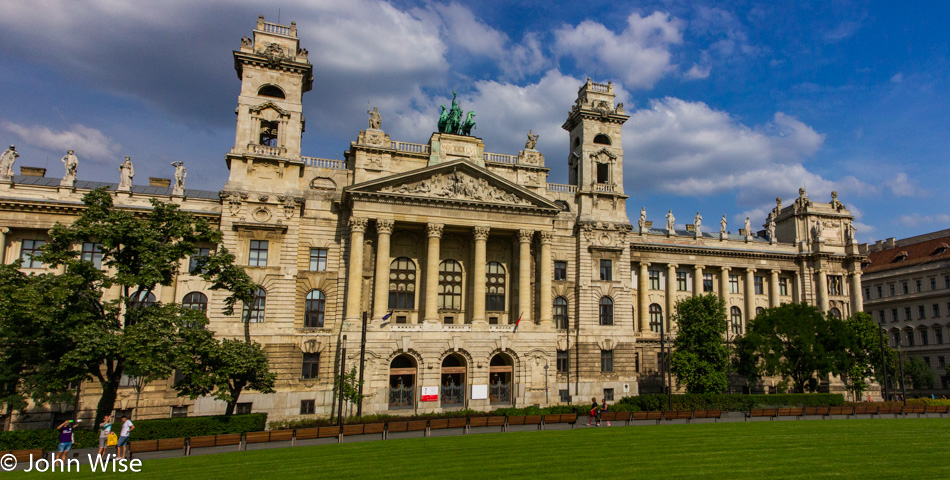
This is the Néprajzi Múzeum of Ethnography that chronicles life in Hungary and Eastern Europe in the 19th and 20th centuries. We didn’t visit this time; maybe on a subsequent vacation, we’ll be able to take it in.

Up close to Parliament, that was sold out during our visit, so better planning would have been required if this had been a must-see. It’s on the list should we ever come back.
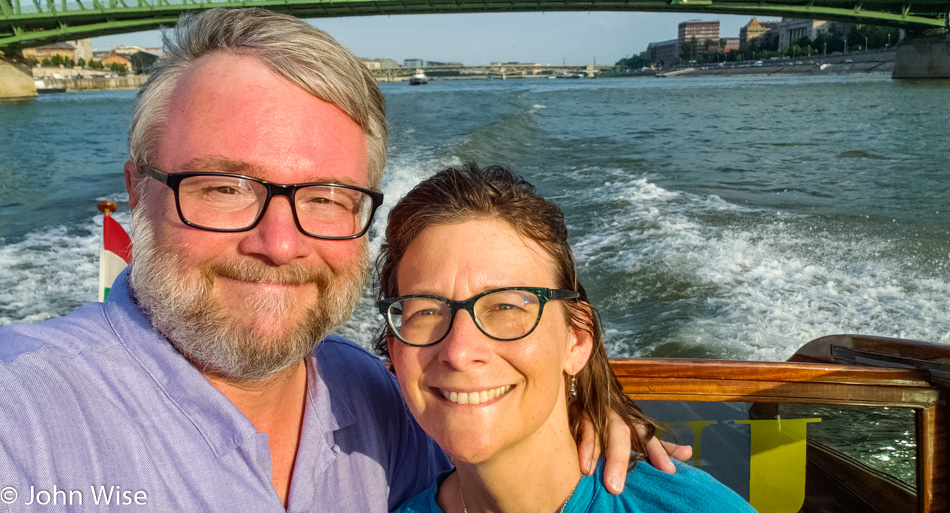
We arrived at the dock for Dunarama early, which was fortunate for our tired feet, laden bladders, and parched palates. With a half-hour before our departure, we sat on the floating restaurant patio with a couple of bottles of sparkling water and took a well-deserved break. As 6:00 p.m. came around, one of the boatmen approached us to bring us aboard a small speedboat that was about to be our means of travel for a private tour up and down the Danube.

The view from the middle of the Danube is truly a different perspective than all others we’d had today. Initially, we took it slow and leisurely to acquaint ourselves with the sense of being on one of Earth’s most famous rivers. Would Parliament have looked so amazing under rainy skies or perfectly blue skies? From the light clouds and the reflection of Parliament in the river, we had what must be one of the most incredible sights seen on our planet today.
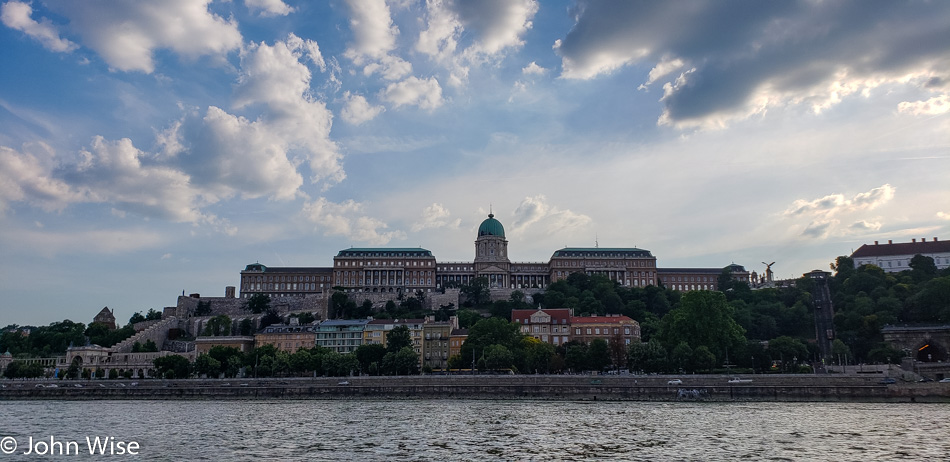
On the other side of the river, Buda Castle was nearly in silhouette, with the sun getting lower in the west. Our tour company, Dunarama, while not inexpensive, might offer the most unique views of the city and its river banks.
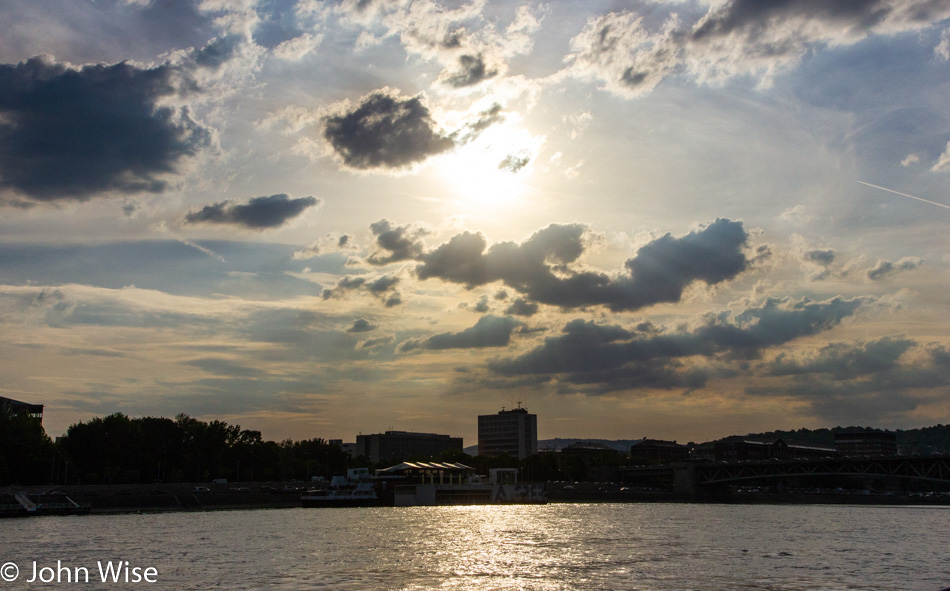
All of the romance with a blast of outrageous fun comes with a trip on the water. While we were speeding down the Danube, the guys turned up AC/DC’s Thunderstruck and opened up the throttle with some hairpin turns thrown in for added thrills. While Caroline was initially reluctant to add so much sound pollution to the pristine environment, once we were hauling ass, she was all smiles and fist pumps of excitement. We were paying for a 50-minute tour and soon were feeling that it was all too short and that we could easily do it all over again. I don’t believe we could have chosen a more perfect day or time to have taken this extraordinary journey on the Danube.

By 7:00 p.m. we are pulling up to the dock and catching our breaths. We walk to a nearby restaurant that promises an authentic Hungarian meal and take our time to relax and get full. From here, we wander around the city center, taking in all the open shops, people sitting around enjoying a drink, an abundance of Thai Massage joints, and the general feeling of being in a Bohemian wonderland of debauchery and vast history. Budapest is certainly at a crossroads historically, culturally, and economically as the world of Europe is still changing with the global movement of people, capital, and entertainment. We clocked 12.26 miles or just under 20 km of walking across the city today and climbed 77 floors of steps; our feet and heads need an overnight break.
